Meeting: December 20, 2022
|
The
April 9th, 1863, capture and surrender of Robert
E Lee's Army of Northern Virginia to Ulysses S
Grant's Army of the Potomac eventually led to
the capitulation all forces of the Confederate
States of America to the United States of
America. Thus began the weeks and months journey
home for the members of these Armed Forces.
This journey home is the subject over next
Baltimore Civil War Round Table Zoom meeting as
we present
Professor Caroline E. Janney in
a talk on her book;
Ends of War: The Unfinished Fight of Lee's Army
after Appomattox. Our
Zoom will be held on Tuesday, December 20th,
2022, beginning at 7:30 p.m.
Register for this event at:
https://us02web.zoom.us/meeting/register/tZwucuCoqD4pGNVrzVtRuAx1jRANVXjdOLBg
You will receive an email with a link to enter
the Zoom.
Prof. Janney’s book
covers the period starting when word spread that
Lee planned to surrender. Most remaining troops
stacked their arms and accepted paroles allowing
them to return home, even as they lamented the
loss of their country and cause. But others
broke south and west, hoping to continue the
fight. Fearing a guerrilla war, Grant extended
the generous Appomattox terms to every rebel who
would surrender himself. Provost marshals fanned
out across Virginia and beyond, seeking nearly
18,000 of Lee's men who had yet to surrender.
But the shock of Lincoln's assassination led
Northern authorities to see threats of new
rebellion in every rail depot and harbor where
Confederates gathered for transport, even among
those already paroled. While Federal troops
struggled to keep order and sustain a fragile
peace, their newly surrendered adversaries
seethed with anger and confusion at the sight of
Union Troops, including United States Colored
Troops, occupying their towns and former slaves
celebrating freedom.
Caroline Janney is
an author and historian whose scholarship
focuses on the Civil War, Memory, and Women and
Gender. She holds a B.A. in Government and a PhD
in History from the University of Virginia. She
is currently the John L. Nau III Professor in
the History of the American Civil War at the
University of Virginia, where she also directs
the Nau Center for Civil War History. She is the
author of Burying
the Dead but Not the Past: Ladies’ Memorial
Associations and the Lost Cause; Remembering
the Civil War: Reunion and the Limits of
Reconciliation,
which was awarded the Southern Historical
Association’s Charles Sydnor Award and the
Museum of the Confederacy’s Jefferson Davis
Award and was an honorable mention for the OAH
Avery O. Craven Award; and Petersburg
to Appomattox: The End of the War in Virginia.
She is a past-president of the Society of Civil
War Historians and also serves as a co-editor of
the University of North Carolina Press’s Civil
War America series.
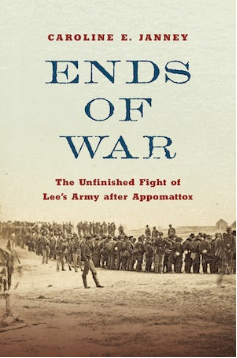 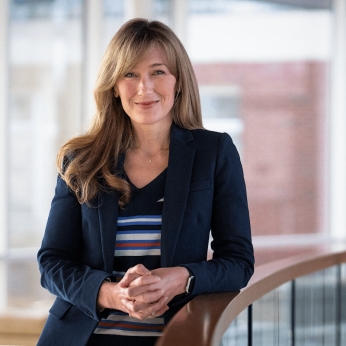
Minutes
Our December meeting was our 461st. The meeting
had 37 registrants and participants.
Our speaker was Caroline Janney, a professor of
Civil War history at the University of Virginia.
Professor Janney spoke about the aftermath of
the surrender of Robert E. Lee and the Army of
Northern Virginia to Ulysses S. Grant and the
Army of the Potomac at Appomattox Court House on
April 9, 1865. She is the author of
Ends of War: The Unfinished Fight of Lee’s Army after
Appomattox.
Professor Janney began by noting that
“Appomattox” has frequently been described as
the end of the war. However, she said, it was
really the surrender of a single army.
Moreover, in the weeks after the surrender,
Appomattox had many unforeseen results.
About 26-28,000 Confederates were paroled at
Appomattox. Under Grant’s terms, these men were
“paroled prisoners.” They were not to be
“disturbed” by the authorities as long as they
obeyed the law. Passes were created for the men
which would serve as proof they had been paroled
and as a coupon for rations.
However, a substantial portion of Lee’s army did
not
surrender at Appomattox. In fact, out of the
roughly 60,000 that had left the
Petersburg–Richmond area, perhaps 20,000 avoided
surrendering. Besides casualties incurred,
there were several reasons for this. Some fell
behind. Others believed the war was over and
went home. Still others slipped out of the
lines. 2,000 cavalry and artillery slipped
away, many of whom united under Thomas Rosser.
On April 12, Rosser actually called on the men
to return to combat, saying that companies and
regiments were to form without delay.
Because so many of Lee’s men didn’t actually
surrender, a question quickly arose: were these
people covered by Grant’s terms? Grant himself
said that the terms should be offered to
all
members of the Army of Northern Virginia.
Professor Janney argued that in taking this
stance, Grant was worried that a guerilla war
might break out. His surrender policy was part
of his efforts to prevent this. In the
aftermath of Appomattox, men were paroled at
locations all over Virginia, and in West
Virginia, North Carolina, and Maryland as well.
Issues soon arose concerning the return of
Confederate soldiers to their homes. Would they
be allowed to pass through Union-held territory
on their way home? Some were going home by way
of the North–even passing through New York City.
Grant hadn’t expected this, and eventually
ordered that the practice of giving Confederates
passes to come north be stopped.
Another serious problem was what to do with the
roughly 75,000 men from Union slaveholding
states–the so-called “border states”--who had
fought for the Confederacy. In many Maryland
counties–including Baltimore–vigilance
committees were set up to prevent Confederates
from returning. Although Grant and Attorney
General James Speed said that Confederates from
West Virginia could return to their state, many
West Virginians were unhappy about that.
Vigilance committees were created in many
counties there also. By late May, Grant and
President Andrew Johnson decided it was wise to
allow Confederate veterans from the border
states to return home. Johnson’s proclamation
of amnesty made the issue a moot point.
Professor Janney said that many African
Americans christened April 9 as “Freedom Day.”
At Appomattox, there were about 1,000 slaves
and free African Americans with Lee’s army. The
slaves–who became free upon the surrender–were
faced with the question of how to get home. In
the end, many decided to return home with their
former masters.
Professor Janney concluded by stating that
instead of serving as an end to the war, the
surrender at Appomattox pointed up problems
which the war had revealed. Lee’s men were
paroled prisoners, not on an equal footing with
Union troops. This gave them a feeling of
embitterment and subjugation. Some attacked
African American Union soldiers, viewing them as
a symbol of the overthrow of the old older of
the slaveholding South. The surrender was not
the end of division, Professor Janney said. On
the contrary, it proved to be just the
beginning.
|
Notes from the President
On behalf of our Board, I
wish you all a Happy and Blessed Holiday Season! Whether you
celebrate Christmas, Chanukah (Hanukkah), Ashura, Bodhi Day,
Kwanza or any other festival of note, May Peace Be with You All!
Please stay Covid, RSV, and Flu safe!!!!
We approach the end of 2022 in an interesting position…a good
news/bad news position.
Good news
After going from no meetings to Zoom meetings due to Covid 9, we
are finally back to hosting in person (hybrid) meetings at the
Parkville Senior Center. It has been great seeing faces not
scene since February of 2020.
The combination of Zoom and our Facebook page has increased the
awareness and exposure of the Baltimore Civil War Roundtable.
Our Zoom account lets us host up to 100 participants. We have
come closest to that number with the presentations by Dr. Andy
Waskie (“Meet
General Meade: Victor of the Battle of Gettysburg”) and
Dr. Ty Seidule
(Robert
E. Lee and Me”).
Our normal range is between 25 and 50. Additionally, the BCWRT
Facebook page currently has 1.8 thousand followers.
Now the bad news.
Our membership numbers have been in steady decline for about six
years. Several factures have contributed to this reduction of
members. A few members have died. Being an older organization,
ill health has affected our numbers. Some members have moved
from the area. (Interestingly, we have had a handful of new
out-of-date members because of our Zoom presentations. We lost
several members behind the Baltimore Confederate Monument
controversy when, following a close vote, the membership voted
to follow the Board’s recommendation that the BCWRT would
encourage members to voice their own opinions to the Mayor’s
Monument Committee rather than have the organization take a
stand.
We are now under 30 members. Less than 10 have attended our
recently restarted in-person meetings.
The BCWRT Needs your help.
Renew your membership, now. Invite your friends to join. After
his illness, Ray Atkins is back to processing the memberships.
Membership is $25 or $35 for families. Mail your checks to:
Ray Atkins, Treasurer, BCWRT
1204 Fordham Ct.,
Belair, MD
21014
If you are not a member, please join! Invite others to join.
The bottom line is, without your membership, we cannot afford
speaker, much less sponsor activities and support Civil War
organizations.
|
Meeting: November 22, 2022
|
This
year, Thanksgiving Day will be celebrated on
Thursday, November 24. Many of us are generally
familiar with the stories of the 1621 harvest
feast involving the Wampanoag people and the
immigrant English Pilgrims. Some are also
familiar with the October 3, 1863 action of U.S.
President Abraham Lincoln making Thanksgiving a
national Holiday on November 26. One of the
faces campaigning for Lincoln act on
Thanksgiving was the editor of the popular magazine Godey’s
Lady’s Book, Sarah
Josepha Hale,
More on her later
It of the lives and faces of regular, yet
extraordinary people that will be the subject of
the next Baltimore Civil War Roundtable (BCWRT)
meeting on Tuesday, November 22, at 7:30 p.m.
National Park Service Ranger
Matthew Borders looks
at the photos and lives of several men through
his book
Faces of Union Soldiers at Antietam. The
meeting will occur at the Parkville Senior
Center, 8601
Harford Rd, Parkville, MD 21234.
Co-authored with Joseph Stahl, this book invites
the reader to walk the routes of some of the
units on the field through the stories of
thirty-six individual soldiers who fought on
that September day. The images of the soldiers
in this work, many of which have never been
published before, give faces to the fighting men
at Antietam, as well as insight into their
lives. The Battle of Antietam, fought near
Sharpsburg, Maryland, was the bloodiest day in
American history, with more than twenty-three
thousand dead, wounded and missing.
A 2004 graduate of Michigan State University
with a BA in US History,
Matthew Borders is
a Park Ranger at Monocacy National Battlefield
in Frederick, Maryland. While at MSU he was
first an intern and then a seasonal ranger for
the National Park Service at Antietam National
Battlefield.
Following
his undergrad years, he immediately went to
Eastern Michigan University for his MS in
Historic Preservation, with a focus in
Battlefield Interpretation, which he earned in
2006.
Moving to Maryland in 2007 with his wife Kira,
he worked as the historian for the ABPP for the
next six years, personally surveying over 100
different American Civil War battlefields in the
deep south and western United States. He
continues to work with Antietam National
Battlefield as a volunteer and Certified
Battlefield Guide, as well as a Certified Guide
for Harpers Ferry National Historical Site.
Welcome to all who wish to join us, in person,
om Tuesday, 10/25, at the Parkville Senior
Center. If you cannot attend, join us on Zoom at
https://us02web.zoom.us/meeting/register/tZwsfu6opjspHde55dbI3yxz2o9hf1-IRbg8
Sarah Josepha Hale is
best known as the author of the nursery rhyme
Mary Had a Little Lamb.
The
Parkville Senior Center is located at 8601
Harford Rd, Parkville, MD 21234.
Enter the parking lot from Hiss Ave. and use
rear entrance to Center. There is a $5.00 charge
for non-members to attend the meeting.
There is NO SMOKING allowed in the Senior
Center, Doors open at 7:00 p.m. with the meeting
beginning at 7:30 p.m.
Covid Policy: The Baltimore County Department of
Aging (BCDA) does not require masks, COVID-19
screenings or proof of vaccination to enter,
although we strongly encourage masks for
unvaccinated individuals!
(To the vaccinated-wear a mask if you are so
inclined)
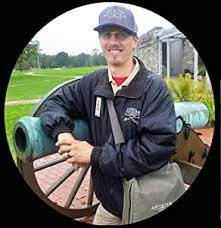
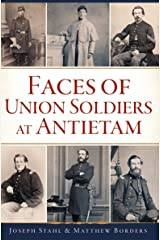
|
Notes from the President
I wish to thank all who participated in last month’s BCWRT
meeting.
This was the first hybrid meeting of our group. It was great
seeing faces that haven’t been in a personal group setting since
February of 2020.
Houston, we have a problem! Our
membership is down. Fewer members mean less people enjoying the
knowledge shared by our members and speakers. It also means
reduced opportunities for getting speakers if we have a smaller
account from membership fees, book sales, raffles and other
sources to pay fees.
Please tell your friends about the us. Convince them to join.
Along with renewing your dues, how about gifting a membership to
a relative or a friend who has interest in the United States of
the mid-19th Century.
If you have any ideas on how to increase our membership, please
email me at
rfordjazz@yahoo.com!
AGAIN, IT IS TIME TO RENEW YOUR MEMBER OR JOIN US. If you are
already a member, please renew your membership for 2023. If you
are new, please join. Annual dues for the Baltimore Civil War
Roundtable are $25.00 for individuals and $35.00 for
families. Please make checks payable to: BCWRT and mail to: Ray
Atkins, 1204 Fordham Ct., Belair, MD 21014. You can find the
membership form in the membership portion of the webpage.
Minutes
Our November meeting was our 460th. The meeting had 17
registrants and 16 participants.
Our speaker was Matt Borders, a National Park Service
Ranger currently working at Monocacy Battlefield. Mr. Borders
and Joseph Stahl are co-authors of
Faces of Union Soldiers at
Antietam, a book that profiles 36 Union soldiers who fought in the
battle. The book features a
carte de visite (a cheap and, during the Civil War, very popular type of
photo that was the size of a visiting card) of each soldier,
together with information about their Civil War service and
lives as a whole. Mr. Borders discussed six of the soldiers
profiled in the book.
Major Elisha Burbank was mustered into the 12th
Massachusetts Infantry in June 1861, at the age of 51. Badly
wounded in the foot at Antietam, Burbank was taken to General
Hospital #1 in Frederick. He was subsequently transferred to
Suman’s House. Infection set in, and he died on November 30,
1862. In his
carte de visite, Burbank is wearing a civilian coat and, apparently, dark
blue (signifying infantry) trousers. Burbank is also seen
leaning on a brace to keep himself still. Mr. Borders said that
contrary to popular belief, photos during the war could be taken
quickly, but if someone moved, that could blur the image.
Private Philip Sellers was mustered into Company F, 107th
Pennsylvania Infantry in April 1862, at the age of 21. He had
been a farmer prior to the war. Sellers was listed as missing
at Gettysburg. Briefly a POW, he was paroled and sent to Camp
Parole, West Chester, PA. He later returned to the 107th and
reenlisted. On August 18, 1864, Sellers was shot in the left
thigh at Reams Station, Virginia. He was discharged for
disability and died in 1909. After the war, pension records
listed him as an invalid. In his
carte de visite, Sellers is seen wearing a “greatcoat” meant as part of a
winter uniform.
2nd Lieutenant James F. Simpson was mustered into Company
C of the 14th Connecticut Infantry in August 1862. He was
subsequently transferred to Company D and promoted to 1st
lieutenant. Simpson may have been captured at Chancellorsville,
for he was paroled not long after the battle. On October 20,
Simpson was promoted to captain of Company C. At Reams Station
on August 25, he was wounded and later resigned due to
disability. In the spring of 1865, however, he returned to the
army as a captain in the 2nd Veteran Volunteer Infantry.
Simpson served in the army after the war and died in 1899.
Simpson’s
carte de visite
shows him clean shaven. Mr. Borders said that there were
no rules in the Union army regarding facial hair–it just had to
be neat and trimmed.
Corporal Tobias Schmearer was mustered into Company A of
the 53rd Pennsylvania Infantry in September 1861. In 1863 he
was promoted to sergeant and in 1864 to second lieutenant. On
June 16, 1864, he received a slight neck wound at Petersburg.
On April 28, 1865, Schmearer requested a furlough, which
appears to have been granted, to “...arrange for the comfort and
support of a Widowed Mother.” He died in 1877, and his widow
applied for a pension. Schmearer’s
carte de visite
shows him with his coat open and an enlisted man’s vest
underneath. He is wearing a cravat–something required for
officers but not for enlisted men–as well as a waterproof forage
cap and three stripes, the latter indicating his rank.
Private Charles Judkins was mustered into Company A of the
9th New Hampshire Infantry in July 1862. At Antietam, he
appears to have been wounded in the Burnside Bridge fighting,
and at Spotsylvania on May 12, 1864, he sustained a flesh wound
to the right calf. Judkins was subsequently transferred to
Company G of the 6th Regiment Veteran Reserve Corps, originally
known as the Invalid Corps. He worked as a blacksmith after the
war and filed for a pension in 1887. Judkins was reported to
have died in 1902, although it’s not known for certain that he
did. Mr. Borders said that the Veteran Reserve Corps uniform
was very distinctive, and that on the back of Judkins’
carte de visite
there is a tax stamp which is important in dating the
photo.
2nd Lieutenant William H. Leonard was mustered into
Company I, 51st New York Infantry. In 1862, he was made
assistant surgeon and then full surgeon of the regiment. He was
listed as “absent with wounded” in December 1862. Leonard
resigned in 1863 due to his wife’s failing health. After the
war, he stayed in the medical field, dying in 1901. In his
carte de visite, Leonard is wearing a dark green sash, signifying the
medical branch of the service. The letters on the front of his
kepi are probably M.S. (Medical Surgeon).
|
Meeting: October 25, 2022
|
A few weeks after All Hallows Eve (Halloween) in
1831, Universal Pictures released the James
Whale directed
Frankenstein.
In the scene where the monster
is created the Dr. Henry Frankenstein character
shouts; “It’s Alive. It’s Alive. It’s Alive!”
While the Baltimore Civil War Roundtable is not
attempting to create new life, we are returning
to live, in person dissemination of information
about this period of conflict in the United
States.
We will resume in person meetings on Tuesday,
October 25, 2022 at the Parkville Senior Center, 8601
Harford Rd, Parkville, MD 21234 beginning at
7:30 p.m. Our speakers will
be Jean H. Baker and Charles H. Mitchell,
co-editors of the acclaimed book
The Civil War in Maryland Reconsidered .
According to the Jonathan Pitts article in
the12/30/21 Baltimore Sun. “The
Civil War in Maryland Reconsidered, a
collection of 13 essays assembled and edited by
Baltimore historians
Charles W. Mitchell and Jean H. Baker,
we encounter independent thinkers from as far
away as California and England and as close as
Johns Hopkins University. They point out, among
other things, that contrary to popular belief,
Maryland judges refused to put the Dred Scott
decision into effect; that more Marylanders
voted, in total, for the three presidential
candidates who backed the Union than they did
for John C. Breckinridge, the Southern Democrat
who carried the state in 1860, and that four
times as many Old Line State men fought for the
Union than for the South.
Maryland, in short, was less sympathetic to the
Confederate cause, and more behind the Union,
than generations of historians implied, says
Mitchell,
a self-taught Civil War expert, author and
editor who got the sprawling essay project
rolling four years ago.”
Dr. Jean H. Baker is
a professor emerita at Goucher College. She if
the author of over a dozen history books
including serval works on Abraham and Mary
Lincoln.
Welcome to all who wish to join us, in person,
om Tuesday, 10/25, at the Parkville Senior
Center. If you cannot attend, join us on Zoom at
https://us02web.zoom.us/meeting/register/tZAkc-usrDkpGd0I3vtpTEKVhfP5cjPQulHa
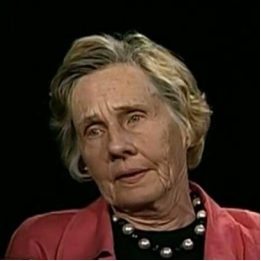 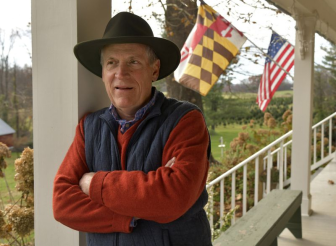

|
Notes from the President
As was mentioned last month, the Baltimore Civil War Roundtable
(BCWRT) met,
in person at our longtime home The Parkville Senior Center.
Since early 2020. We will return to our live meetings on
Tuesday, October 25, 2022. Our speakers will be Goucher College
Professor Emerita/historian Jean H. Baker along with author and
Mid-Atlantic History expert Charles W. Mitchell.
The Civil War in Maryland Reconsidered is
the recent book they have edited and will discuss.
It is ironic that we return to live meetings in October since
the BCWRT was founded in October 1982. Although we will be in
person, the meeting will also be carried via the Zoom platform.
In case you have forgotten or have never attended, the
Parkville Senior Center is located at 8601 Harford
Rd, Parkville, MD 21234.
Enter the parking lot from Hiss Ave. and use rear entrance to
Center. There is a $5.00 charge for non-members to attend the
meeting. There is NO SMOKING allowed in the Senior Center,
Doors open at 7:00 p.m. with the meeting beginning at 7:30 p.m.
Covid Policy: The Baltimore County Department of Aging
(BCDA) does not require masks, COVID-19 screenings or proof of
vaccination to enter, although we strongly encourage masks for
unvaccinated individuals!
(To the vaccinated-wear a mask if you are so inclined)
MEMBERSHIP: If you are already a member, please renew your
membership for 2022. If you are new, please join. Annual dues
for the Baltimore Civil War Roundtable are $25.00 for
individuals and $35.00 for families. Please make checks payable
to: BCWRT and mail to: Ray Atkins, 1204 Fordham Ct., Belair, MD
21014. You can find the membership form in the membership
portion of the webpage.
Minutes
Our October meeting was our 459th. The meeting had 21
Zoom registrants and the same number of participants. In person
attendance was 10.
October’s meeting was a “hybrid” meeting. It was the
first to be held in person since February 2020, and took place
at the Parkville Senior Center, the location where the BCWRT’s
meetings had occurred prior to the start of the COVID-19
pandemic. At the same time, the meeting was also available
through Zoom.
Our speakers were Jean H. Baker, professor emeritus at
Goucher College and the author of over a dozen history books,
and Charles W. Mitchell, an author, editor, and self-taught
expert on the Civil War. Ms. Baker and Mr. Mitchell spoke on the
war–and subsequent memory of the war–in Maryland. They are the
editors of the book
The Civil War In Maryland
Reconsidered.
Ms. Baker and Mr. Mitchell discussed how
The Civil War In Maryland
Reconsidered
came into being. Mr. Mitchell approached Ms. Baker with
the idea of editing a book on the war in Maryland consisting of
essays by a variety of authors. The two would send drafts of
the essays back to the authors for revision. Sometimes there
were two or three revisions. Ultimately, 13 essays–each by a
different author–were compiled on various aspects of Maryland’s
Civil War experience.
The book looks at old issues in new ways. While it is
true that many Marylanders fought on both sides, Ms. Baker and
Mr. Mitchell argued that the story of Maryland in the war has
been corrupted through a narrative that makes the state appear
to have been more pro-Confederate than it actually was.
A substantial portion of Marylanders did indeed support
the Confederacy, and many of them crossed the Potomac River into
Virginia and fought in Robert E. Lee’s Army of Northern
Virginia. However, most of the state’s population supported the
Union. Even many Marylanders who were slaveholders were
nevertheless pro-Union. There were a number of reasons for this,
including fears of a blockade and a shutdown of the B&O
railroad. When discussing the 1860 election, much has been made
of the fact that Abraham Lincoln got few votes in Maryland.
However, when the votes cast by Marylanders for all of the
pro-Union candidates in the election are combined–Lincoln,
Stephen Douglas, and John Bell, the Constitutional Union Party’s
candidate, they make a majority–more than 54 percent–of the
total vote. Moreover, In the 1864 election Lincoln received
more than 55 percent of the popular vote in Maryland.
Ms. Baker and Mr. Mitchell said that when it comes to
writing about the war, there have been three basic groups of
people. One consisted of the soldiers who survived the war and
their commanding officers. They didn’t talk much about the
political situation. Instead, they largely discussed the
brotherhood of battle and camp life. The second group consisted
of Marylanders who, around the turn of the century, argued that
if various hypotheticals had taken place (the “If…If…If”
phenomenon) had happened, Maryland would have joined the
Confederacy. During this period, there was an effort to
disenfranchise African American voters in Maryland. The
third–and most recent–group consisted of university-trained
scholars looking at politics, including voting, to see how
people really felt. In their telling, a much more accurate
version of what happened has emerged.
Ms. Baker and Mr. Mitchell argued that the Confederates
effectively “won” the writing of history after the war. The
vision promulgated by groups like the United Daughters of the
Confederacy, in which the war was a “War of Northern
Aggression,” became very popular. Union veterans, on the whole,
didn’t do a great deal to resist this, although African
Americans fought to rewrite this version of history.
|
Meeting: September 27, 2022
|
September 2022, specifically September 17, is
the 160th anniversary
of the battle of Antietam, which was fought in
Western Maryland near Sharpsburg. The casualty
count from that clash (USA: 2108 killed, 9549
wounded, 753 missing; CSA: 2700 killed, 9024
wounded, 2000 missing) makes it the “bloodiest
day of the Civil War”. The sheer number of
casualties resulted in countless funerals.
How those and other wartime funerals were
conducted will be the subject of the next
Baltimore Civil War Roundtable Zoom presentation
on Tuesday, September 27, 2022, at 7:30 p.m.
Professor Annette T. Khawane returns to the
Baltimore Civil War Roundtable to reveal some of
the varied funeral practices during the war.
This is a fitting follow up to Prof.
Khawane’s last BCWRT presentation on Civil War
era Dr. Thomas Holmes, who is considered the
‘Father of Modern Embalming.
Register for this event at https://us02web.zoom.us/meeting/register/tZItc-2hrjwsH90J2ph6_0b4dbAGHf3HwdxJ
You will receive and email containing the actual
link to the meeting.
Annette Tyler Khawane is a graduate of Baltimore
City public schools. She holds AA degree
from Catonsville Community College; BA degree
from Morgan State University; and MA degree from
The American University. She has been a licensed
mortician for over 20 years and a licensed
Massage Therapist for over a decade. She has
worked for various corporations in many
capacities from Senior Trainer, Senior Safety
Specialist; Sales Professional; Massage
Therapist and many Customer Service-related
positions. She is retired from FedEx after over
22 years of service. Since 2012, she has served
as an adjunct professor, teaching the embalming
lab for Catonsville Community College. She is
also a part-time instructor at the Baltimore
School of Massage and a Drivers' Education
Instructor for Williams Educational Services.
She has heart for teaching and believes every
day you create your own masterpiece.

Minutes
Our September meeting was our 458th. The meeting had 33
registrants and 25 participants.
Our speaker was Annette Tyler Khawane, a licensed
mortician and former Adjunct Professor of
Mortuary Science at the Catonsville branch of
the Community College of Baltimore County
(formerly Catonsville Community College). Ms.
Khawane’s presentation dealt with embalming
during the Civil War.
Ms. Khawane began by tracing the history of embalming
through the ages. She divided it into three
periods. The first was from 3200 B.C. to 650
A.D. The ancient Egyptian method of embalming
consisted of brain removal, evisceration,
immersion, dehydration (drying the body out in
the sun) and wrapping (coating the body with
spices). The whole process took about 70 days.
The body parts were put into canopic jars, and
artifacts were buried with the body. The second
period, from 650 A.D. to 1861, was the Period of
the Anatomist. During the Middle Ages,
dissections began to be performed, including by
Leonardo da Vinci. The third period is from
1861 to the present.
During the Civil War, both Union and Confederate soldiers
were embalmed. Military dead were usually
buried on the field–there were no provisions for
sending them home. Although there wasn’t a
specific, universal time for how long a body
would last after embalming, the practice made it
possible for those who had died to come home to
their loved ones. A written request had to be
made to the quartermaster general for the
dismemberment and return of the body.
Most embalmers started out as physicians. Dr. Thomas
Holmes (1817-1900) is considered the “father of
American embalming.” Holmes, whose innovations
included the creation of a patented fluid pump
and a patented body bag to carry soldiers from
the battlefield, was given a commission to
embalm dead Union officers, and asked to embalm
Colonel Elmer E. Ellsworth, the first Union
officer to be killed in the war. Holmes later
claimed to have embalmed more than 4,000
soldiers and generals during the war
(editor’s note: some have questioned
this figure).
Prior to battles, embalmers frequently approached
soldiers. The soldiers were provided with cards
that stated that prepayment and transportation
had been arranged. Brown & Alexander embalmed
Abraham Lincoln’s son, Willie, when he died
during the war, and later Lincoln himself after
his assassination. The cost for the president’s
embalming (and for sending embalmers on the
Lincoln funeral train to continue tending to his
body) was $260 in gold dollars. Although that
sounds like an innocent number today, our Vice
President, Martin French, said that it was the
equivalent of about $200,000 in today’s paper
money. Lincoln’s assassination, Ms. Khawane
said, launched the funeral industry because the
preservation and display of his body led to
embalming–and with it public funerals–becoming
popular throughout the country. This gave a
huge impetus to the funeral home industry.
|
Notes from the President
February 2020 marked the last time the Baltimore Civil War
Roundtable (BCWRT) met,
in person at our longtime home The Parkville Senior Center. We
will return to our live meetings on Tuesday, October 25, 2022.
Our speakers will be Goucher College Professor Emerita/historian
Jean H. Baker along with author and Mid-Atlantic History expert
Charles W. Mitchell.
The Civil War in Maryland Reconsidered is
the recent book they have edited and will discuss.
It is ironic that we return to live meetings in October since
the BCWRT was founded in October 1982. Although we will be in
person, the meeting will also be carried via the Zoom platform.
In case you have forgotten or have never attended, the
Parkville Senior Center is located at 8601 Harford
Rd, Parkville, MD 21234.
Enter the parking lot from Hiss Ave. and use rear entrance to
Center. There is a $5.00 charge for non-members to attend the
meeting. There is NO SMOKING allowed in the Senior Center,
Doors open at 7:00 p.m. with the meeting beginning at 7:30 p.m.
Don’t forget, we will have a Zoom meeting for September.
Prof. Annette Tyler Khawane returns to the Baltimore Civil War
Roundtable to reveal some of the varied funeral practices during
the war. This is a fitting follow up to Prof. Khawane’s BCWRT
presentation on Civil War era Dr. Thomas Holmes, who is
considered the ‘Father of Modern Embalming. Register at
https://us02web.zoom.us/meeting/register/tZItc-2hrjwsH90J2ph6_0b4dbAGHf3HwdxJ
You will receive an email with a link to join the meeting.
MEMBERSHIP: If you are already a member, please renew your
membership for 2022. If you are new, please join. Annual dues
for the Baltimore Civil War Roundtable are $25.00 for
individuals and $35.00 for families. Please make checks payable
to: BCWRT and mail to: Ray Atkins, 1204 Fordham Ct., Belair, MD
21014. You can find the membership form in the membership
portion of the webpage.
|
Meeting: August 23, 2022
|
Due to family illness, the planned Baltimore
Civil War Roundtable banquet featuring author
Kevin Levin has
been cancelled. Instead, the banquet, with a
different speaker, is being planned for April
2023.
Kevin Levin will
appear before the BCWRT, via Zoom, on
Tuesday, August 23, at 7:30 p.m.
Levin will make a presentation on his book
Searching for Black Confederates, The Civil
War’s Most Persistent Myth.
While there have been claims of thousands upon
thousands of African Americans Confederates
since the Civil War, the stories began to
explode after the 1989 release of the movie Glory,
which told the story of one of the many Black
regiments of the United States Army, the 54th Massachusetts.
Kevin M. Levin educational background includes
his
BA in Philosophy and History from William
Paterson College of New Jersey, a MA in History
from University of Richmond and a MA in
Philosophy from University of Maryland. He has
been on the faculty of several colleges and high
schools across the nation. He has served as
Historian and Master Teacher at the Ford’s
Theatre. Additionally, Levin serves on the Board
of Directors of the National Council for History
Education, the Advisory Committee for the Stone
Mountain Exhibit Proposal, and is a Fellow for
the Massachusetts Historical Society.
Register ahead of time for this event at
https://us02web.zoom.us/meeting/register/tZElcuqgpjktGtA4hhX5eqTTnxY6yLQo32CO.
Once registered, you will receive an email link
to join the presentation during the evening of
the Zoom.
 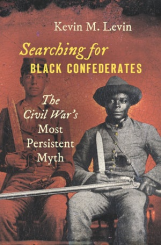
Minutes
Our August meeting was our 457th. The meeting
had 75 registrants and 53 participants.
Our speaker was historian Kevin Levin. Mr. Levin
discussed the belief, popular in some circles
today, that many African Americans served as
soldiers in the Confederate army during the
Civil War. He is the author of the book
entitled
Searching for Black Confederates: The Civil War’s Most
Persistent Myth.
Mr. Levin began by asking his audience to
imagine Robert E. Lee’s Army of Northern
Virginia marching northward in late June 1863.
The traditional image is one of 75,000 white
men. Mr. Levin, however, argued that this is
misleading. In reality, there were also about
10,000 enslaved African American men with the
army.
Ignoring the enslaved, Mr. Levin said, is to
ignore how the Confederate army functioned.
Forced labor played a vital role in every
aspect of support for the army. Mr. Levin
argued that it was, in fact, the “cornerstone”
of the army. The Confederacy needed to mobilize
as many slaves as possible to offset its
numerical disadvantage in population vis-a-vis
the Union.
Of the enslaved people who performed work for
Confederate armies, the body servants (also
referred to by Mr. Levin as “camp slaves”) are
the group of whom we have the greatest sense of
who they were. These men functioned as a legal
extension of their masters. They performed many
duties including cooking, cleaning, functioning
as couriers, etc. They were often given
uniforms by their masters and were frequently on
the battlefield supporting them. Sometimes,
they even picked up guns during a battle and
fought alongside their masters. The masters
tended to be ambivalent when this occurred. On
the one hand, it was a demonstration of slave
loyalty, on the other, it also challenged the
prevailing racial hierarchy. Unfortunately, Mr.
Levin said, we really have no account of the
camp slaves in their own words.
While the service of African Americans in the
Confederate army as laborers has always been
recognized, in recent years it has been widely
argued that anywhere from 500 to 100,000 African
Americans served as Confederate soldiers. In
order to evaluate this contention, Mr. Levin
discussed the policies of both sides concerning
black enlistment as soldiers.
Originally, both the Union and the Confederacy
Military agreed that the war would be a “white
man’s war.” However, the Union began to recruit
and enroll African Americans as soldiers in
1862. In the Confederacy, however, things
proceeded far differently. From the beginning,
there was a debate about arming the enslaved. In
early 1864, Major General Patrick Cleburne, a
native of Ireland, proposed that the Confederacy
do just that. Some of Cleburne’s subordinates,
however, contacted Richmond, and President
Jefferson Davis ordered the discussion stopped.
But by late 1864, the issue was being widely
debated. In his research on the debate, Mr.
Levin didn’t find a single instance of anyone
arguing that African Americans were already
serving as soldiers in the army. In March 1865,
the Confederate Congress–with Robert E. Lee’s
encouragement–narrowly passed a law authorizing
the enlistment of some African Americans as
soldiers. Mr. Levin said that maybe 30-50 were
raised but not armed, and they were actually
housed in a prison. Ultimately, he argued, the
idea that there were Black Confederate
soldiers–at least that there were significant
numbers of them–does not stand up to the
evidence.
Mr. Levin asked: When and how did the myth of
thousands of Black Confederate soldiers develop?
In the decades after the war, ‘loyal servants’
were frequently mentioned and praised in
Confederate circles, but Black Confederate
soldiers were not. Former body servants
frequently attended Confederate reunions.
However, the belief that there were large
numbers of black Confederate soldiers, Mr. Levin
argued, had its origins in the late 1970s, in
the aftermath of the 1977 miniseries
Roots,
which vividly dramatized slavery. This did not
sit well with many Confederate heritage people.
Neither did the increased attention to Black
Union soldiers which resulted from the 1989 film
Glory
as well as Ken Burns’ acclaimed 1990 documentary
on the war. However, it wasn’t until the
creation of the Internet that the myth really
caught fire.
|
Notes fron the President
We have already announced that this month’s banquet has been cancelled and will be
scheduled, with a new speaker, next April. Those of you who
purchased banquet tickets prior to the 2020 shutdown and this
new change
will find their reservations still in
effect next April.
Due to illness, Kevin Levin will speak to us, via Zoom, on
Tuesday, August 23 at 7:30 p.m.
Register ahead of time for this event at
https://us02web.zoom.us/meeting/register/tZElcuqgpjktGtA4hhX5eqTTnxY6yLQo32CO. Once registered, you will receive an email link to join
the presentation during the evening of the Zoom.
Last month we asked those of you who were interested in a
tour of St. Paul’s Cemetery to contact us. We only received two
responses. If we can bring that total to ten, we will set the
trip. Email your interest to
rforjazz@yahoo.com.
Negotiations are underway for making a return to in-person
programming at the Parkville Senior Center. An announcement will
be made when arrangements are completed.
MEMBERSHIP: If you are already a member,
please renew your membership for 2022. If you are new, please
join. Annual dues for the Baltimore Civil War Roundtable are
$25.00 for individuals and $35.00 for families. Please make
checks payable to: BCWRT and mail to: Ray Atkins, 1204 Fordham
Ct., Belair, MD 21014. You can find the membership form in the
membership portion of the webpage.
|
Meeting: July 26, 2022
|
Fans of the Pulitzer Prize winning
novel
The Killer Angels and
Gettysburg,
the movie based on the novel, well familiar with
the scenario involving the friendship between
CSA Brigadier General Lewis Addison Armistead
and USA Major General Winfield Scott Hancock.
The story tells of two career officers whose
close relationship is ended by Armistead’s
mortal wounding and Hancock’s wounding during
Pickett’s Charge. The question is How much of
the story is true?
Author/historian
Tom McMillan has
tackled that question and has written a book
Armistead and Hancock: Behind the Gettysburg
Legend of Two Friends at the Turning Point of
the Civil War.
He will discuss his findings during the next
BCWRT Zoom on Tuesday, July 26, 2022 at 7:30
p.m. Register for this event at
https://us02web.zoom.us/meeting/register/tZIqf-yurT8uGdxhAO2dD1voJ1SkHGKvX1Ms.
You will receive an email containing a link to
join the Zoom.
McMillan
currently volunteers as a battlefield ambassador
at Antietam National Battlefield and as a docent
at the Civil War Room of Carnegie Library in
Carnegie Pa. He recently retired from a 43-year
career in sports media and communications,
including 25 years as VP of Communications for
the five-time Stanley Cup champion Pittsburgh
Penguins of the National Hockey League. A former
newspaper sportswriter and radio talk show host,
McMillan has covered the Olympics, the Stanley
Cup Finals, the Super Bowl, the World Series,
the NBA Finals, the Final Four, various major
bowl games and numerous other major (and minor!)
sporting events.
He grew up in Bellevue, Pa. near Pittsburgh and
earned a degree in journalism and communications
from Point Park University in Pittsburgh. He
continues to serve his alma mater as co-director
of the Pittsburgh Center for Sports Media and
Marketing at Point Park. He resides with his
family in Kennedy Township, Pa. and is an ardent
supporter of Chelsea FC.
Although Tom
McMillan spent
a lifetime in sports media and communications,
his true passion is history. His previous books
are;
Flight 93: The Story The Aftermath and The
Legacy of American Courage on 9/11 (2014)
and Gettysburg
Rebels: Five Native Sons Who Came Home to Fight
as Confederate Soldiers (2016).
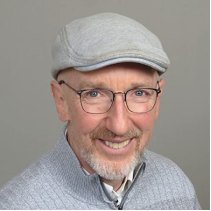 
Minutes
Our July meeting was our 456th. The meeting had 30
registrants and 27 participants.
Our president, Robert Ford, informed us that our annual
banquet will not be taking place this year.
Kevin Levin, who was scheduled to be the
banquet speaker, is unable to come to Baltimore.
However, he will be giving his presentation via
Zoom on August 23 at our regular meeting time
(7:30 p.m.).
Robert also discussed the possibility of a BCWRT tour of
Old St. Paul’s Cemetery, a historic cemetery in
Baltimore City. He asked all who are interested
in participating to contact him via email.
Our speaker was Tom McMillan, an author and historian with
a background in sports media and communications.
Mr. McMillan discussed the relationship between
Confederate Brigadier General Lewis Armistead
(buried in St. Paul’s) and Union Major General
Winfield Scott Hancock. He is the author of
Armistead and Hancock: Behind
the Gettysburg Legend Of Two Friends At The
Turning Point of the Civil War.
Mr. McMillan said that the book grew out of the 1993 film
Gettysburg. Both the movie and the novel it is based on–Michael
Shaara’s
The Killer Angels–have a lot of fiction, and
it’s hard to separate the fiction from the
facts.
Military service was in Lewis Armistead’s DNA. He came
from a Virginia family that had served in the
U.S. military–and before the U.S. existed, in
Virginia militia–since 1680. His father and
uncles served in the war of 1812, and one of
them, George, defended Baltimore’s Fort McHenry.
Although Armistead went to West Point in 1833,
he never graduated. In 1836, there was a
serious incident (he’s believed to have hit
Jubal Early on the head with a plate). He wrote
a letter of resignation that was accepted.
However, in 1839 he was commissioned second
lieutenant and fought in the Second Seminole
War.
Hancock was admitted to West Point at age 16. During his
time there, he grew seven inches. Not a
particularly good student, he was frequently
picked on, and Alexander Hays came to his
defense.
Hancock and Armistead first met in October 1844 at Fort
Towson in Indian Territory (now Oklahoma). The
two men fought in the same regiment during the
war with Mexico in 1847-8, and served in the
occupation of Mexico after the war. Henry Heth
and both men were messmates during this period.
During the thirteen years before the Civil War,
Armistead and Hancock appear to have rarely seen
each other, but a bond between them continued.
The personal lives of the two men were very different.
Hancock had as stable a family life as a U.S.
army officer could have. Armistead, however,
lost two wives and two of his three children to
disease on the frontier in the 1850s.
When the Civil War began, Armistead was faced with a
wrenching decision–which side to fight for. The
idea of fighting against the Union was very
problematic for him. Although he wasn’t opposed
to slavery, his family’s history was tied up
with the U.S. Army. Ultimately, he decided to
join the Confederacy to fight for his “...own
country and for, and with, my own people–and
because they were right, and oppressed.”
According to Hancock’s wife, Hancock, Armistead and other
Confederates had an emotional farewell in 1861,
and Armistead gave him his U.S. Army major’s
uniform as well as a prayer book and other
souvenirs. Mrs. Hancock’s story is largely
backed up by another (prior) account of the
meeting.
Eyewitness accounts of Armistead’s capture and death at
Gettysburg vary considerably. According to
some, he was assisted by Union soldiers after
using Masonic gestures. However, as a
Confederate general, he probably wouldn’t have
been left on the field anyway. On July 5, he
died at the Spangler Farm. Doctors were shocked
when he died–his wound had not been considered
serious.
Hancock himself was seriously wounded only a few hundred
yards from Armistead. After the war, he served
as military governor of Texas and Louisiana,
fought Indians in Kansas, and–as the Democratic
presidential nominee–lost an extremely close
election to James A. Garfield in 1880.
Although it is commonly believed today that Armistead was
known by the nickname “Lo” (short for
“Lothario”), Mr. McMillan believes this probably
wasn’t the case.
Ultimately, Mr. McMillan concluded that the popular image
of Hancock and Armistead is partially true.
They were indeed good friends. But so were
many others on opposite sides of the Civil War.
Contrary to the impression one might get from
watching
Gettysburg, they were not like brothers.
|
Notes from the President
In the middle of the University of Maryland Hospital complex in
downtown Baltimore sits Old St. Paul’s Cemetery. Established in
1800, it is the graveyard for Old St. Paul’s Episcopal Church,
one of the oldest Episcopal Churches in Maryland. The cemetery
is the final resting place of such Maryland notables as
Congressman
James Carroll,
Declaration of Independence signer
and
Supreme Court Associate
Justice Samuel
Chase,
Governor of Maryland George
Howard and
Revolutionary War Continental
Army Officer, Continental
Congressman and
Governor of Maryland
John Eager Howard.
St. Paul’s also contains the graves of Fort McHenry hero George
Armistead and his nephew Lewis Armistead, one of the subjects of
this months Zoom meeting.
We have contacted St. Paul’s Cemetery about a possible tour. If
enough members are interested in a tour, email me at
rfordjazz@yahoo.com to
express your interest.
REMINDER: The BCWRT Banquet will
occur,
in person,
on Tuesday, August 23, 2022, at 6 p.m. Our speaker will be Kevin
Levin, author of the book;
Searching for Black Confederates: The Civil War’s Most
Persistent Myth.
Those of you who purchased banquet tickets prior to the 2020
shutdown
will find their reservations still in effect. If
you haven’t made a reservation, send a check to our treasurer,
Ray Atkins, 1204 Fordham Ct., Bel Air, MD 21014 410-879-8828.
The cost is $35.00 per person.
You can also print and mail the banquet flyer found in this
newsletter.
MEMBERSHIP: If you are already a member, please renew your
membership for 2022. If you are new, please join. Annual dues
for the Baltimore Civil War Roundtable are $25.00 for
individuals and $35.00 for families. Please make checks payable
to: BCWRT and mail to: Ray Atkins, 1204 Fordham Ct., Belair, MD
21014. You can find the membership form in the membership
portion of the webpage.
|
Meeting: June 28, 2022
|
In 1915, a group of Black Civil War veterans
proposed an idea for a history and memorial
museum in Washington D.C. President Calvin
Coolidge signed legislation to create the
National Negro Memorial; however, the Depression
killed the idea. Today’s National Museum of
African American History and Culture represents
one of the many legacies of United State Colored
Troops (USCT).
Joined the Baltimore Civil War Roundtable as we
explore the
Legacy of African American Civil War Veterans with
Marvin-Alonzo Greer,
the Lead Historic Interpretation & Community
Engagement Officer for the Maryland-National
Capital Parks and Planning Commission. The Zoon
presentation will occur on Tuesday, June 24,
2022, at 7:30 p.m.
Register in advance by going to
https://us02web.zoom.us/meeting/register/tZ0udOGvqzgpG9bR9Af-1n0dWhVcfEbh7gIN Once
registered, you will receive an email link which
will enable you to join the meeting.
Greer,
also known as
MAG the Historian,
moved to Washington DC after serving three years
at the Soldiers Memorial Military Museum in St.
Louis. While at Soldiers Memorial, he oversaw
the reopening of the museum after a three-year,
$30 million revitalization of the 1930s era
building.
A native of Pasadena, California,
Marvin-Alonzo grew
up in Atlanta, Georgia where he graduated from
Morehouse College with a BA in History and a
minor in African American Studies. He has held
leadership and managerial roles at museums and
historical institutions, including the Atlanta
History Center and Colonial Williamsburg. He was
awarded the Emancipation Proclamation Award for
Preserving African American History and Culture
by the City of Atlanta for his activism and
partnership with community organizations to
place neighborhoods in historical context.
When he is not working, he helps Black families
trace their genealogy and has traced his own
ancestry to the American Revolution.
Marvin-Alonzo is
a mentor and big brother to living historians
and historical interpreters. He co-founded the
Sons and Daughters of Ham (civilian) and The
Hannibal Guards (military), two living history
organizations dedicated to interpreting the
lives of African Americans in the Civil War.
Under his leadership, the Sons & Daughters of
Ham were recognized by the National Park Service
with the National Capital Region Hartzog Award
for Excellence in Group Volunteering. In 2021
Marvin-Alonzo was
profiled in People Magazine as a Black
Activists, Artists, Historians and Changemakers
You Should Follow on Social Media.
Marvin-Alonzo’s central
belief is to use history as medicine by
connecting communities to their past and
creating honest dialogue across cultures that
will inspire communities to action.
Marvin-Alonzo’s interpretive philosophy is, “If
history is not interesting and relevant, you’re
not teaching it right.”
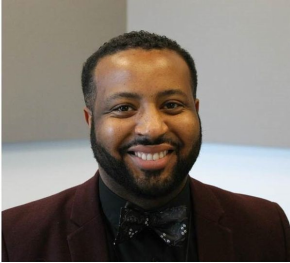
Minutes
Our June meeting was our 455th. The meeting had 38
registrants and 29 participants.
Our speaker was Marvin-Alonzo Greer, the Lead Historic
Interpretation & Community Engagement Officer
for the Maryland-National Capital Parks and
Planning Commission. Mr. Greer’s topic was:
“The Legacy of African American Civil War
Veterans.”
In his presentation, Mr. Greer argued that it was during
the Civil War that the United States began to
take the idea of black military service
seriously. He discussed a number of African
Americans who were significant for both their
military service and their subsequent postwar
careers and activities.
Martin Delany was born in Charles Town, West Virginia, and
admitted to Harvard Medical School. However, he
and other African American students were kicked
out due to protests from white students. During
the Civil War, Delany was commissioned as a
major and served in different states as a
recruiter of African American soldiers. After
the war, he served in the Freedmen’s Bureau and
supported giving land to freed slaves. He also
ran for public office, although unsuccessfully.
Delany has been considered the father of black
nationalism, and advocated the creation of a
black state.
Henry McNeal Turner joined the AME (African Methodist
Episcopal) church, eventually becoming a bishop.
During the war, he served as chaplain of the
1st USCT. After the war, he served in the
Freedmen’s Bureau, built churches, and was
elected to the Georgia legislature. Turner said
that black schools and churches should be run by
black people. According to Mr. Greer, he and
his followers torched churches to keep them from
falling into the hands of whites. Turner was
disliked by many whites, and there were
assassination attempts on him.
Susie King Taylor was a teacher and nurse who served with
the 33rd USCT. According to Mr. Greer, Taylor
was the only African American woman in the Civil
War to publish a memoir. After the war, she
became a member of the Women’s Relief Corps.
Charles Purvis enlisted as a nurse at a combat hospital in
Washington D.C. He went on to be a cofounder of
Howard University’s medical school. Purvis
believed in universal suffrage.
Soldiers from the 62nd and 65th USCT raised money to found
Lincoln University of Missouri (originally named
Lincoln Institute). The school was created in
1866.
Mr. Greer said that the letters of Spottswood Rice, who
served as a private in the 67th USCT, tell us
what the war meant to African American soldiers.
After the war, Rice became a preacher and built
numerous churches throughout the country. Every
subsequent generation of his family has served
in the U.S. military.
Ann Stokes, a “self-liberated” slave from Tennessee,
enlisted as a “boy” in the U.S. Navy, serving on
the USS
Red Rover. Although she was one of fifteen African American women
who served in the navy, Stokes was the only one
to receive a pension. Mr. Greer noted that there
were disparities in the granting of pensions to
whites and African Americans. Between 1861 and
1934, 92.6% of white veterans who applied for
disability pensions had their applications
accepted, whereas the success rate was only
75.4% for African American veterans.
Additionally, in 1890, 54% of white Union
veterans were still living, compared to only 30%
of African American veterans.
Mr. Greer pointed out that even in the 21st century,
racism continues to rear its ugly head–for
example, in the case of an African American army
officer who was pepper-sprayed by a police
officer. He closed by asking: What kind of
ancestor do you want to be? He said that the
choice is one that we all must make–what kind of
country do we want to have, and what kind of
world do we want to build?
|
Notes from the President
It’s Summertime!
And the Peninsular Campaign of 1862, the Gettysburg and
Vicksburg Campaigns of 1863 and the Petersburg Campaign of 1864
proved that ‘the living wasn’t easy’. The continuing Covid
Pandemic, high gas prices and many other problems doesn’t make
things easy today. Still, many outdoor and some indoor Civil War
related events are returning to the calendar.
A few area events you may want to explore include: A Civil War
Style Church Service, Sun, 6/26, 1:00 – 2:30 PM, Historic Rocky
Springs Chapel, Frederick, MD; Battle of Gettysburg Reenactment,
Fri, 7/1 – Sun, 7/3. Daniel Lady Farm, Gettysburg, PA; Just
Passing Through: A Travelers Guide to Civil Frederick, Sat, 7/2,
2 – 3 PM, National Museum of Civil War Medicine Frederick, MD;
The Civil War at Congressional: Docent Tour, Sat, 7/9, 11:00 AM
– 12:30 PM, Congressional Cemetery, Washington, DC.
On a personal note: I began the month of June joining many of my
fellow reenactors participating in the rededication of the
Robert G. Shaw/54th Massachusetts
Regiment Memorial on Boston Common. The memorial, featured at
the end of the movie “Glory” has just completed a two year,
3-million-dollar restoration.
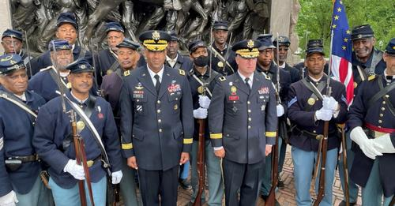

REMINDER: The BCWRT Banquet will
occur,
in person,
on Tuesday, August 23, 2022, at 6 p.m. Our speaker will be Kevin
Levin, author of the book;
Searching for Black Confederates: The Civil War’s Most
Persistent Myth.
Those of you who purchased banquet tickets prior to the 2020
shutdown
will find their reservations still in effect. If
you haven’t made a reservation, send a check to our treasurer,
Ray Atkins, 1204 Fordham Ct., Bel Air, MD 21014 410-879-8828.
The cost is $35.00 per person.
You can also print and mail the banquet flyer found in this
newsletter.
MEMBERSHIP: If you are already a member, please renew your
membership for 2022. If you are new, please join. Annual dues
for the Baltimore Civil War Roundtable are $25.00 for
individuals and $35.00 for families. Please make checks payable
to: BCWRT and mail to: Ray Atkins, 1204 Fordham Ct., Belair, MD
21014. You can find the membership form in the membership
portion of the webpage.
|
Meeting: May 24, 2022
|
The Civil War was clearly a time of divided
loyalties. From the beginning, those in power
attempted to use the law to address those
considered friends and foes, alike. University
of Maryland Law Professor
Mark A. Graber discusses
the utilization of the law using his soon to be
published book;
"Punish Treason: Reward Loyalty".
Join the BCWRT as we present
Dr. Graber on
Tuesday May 24, 2022 at 7:30 p.m. Register in
advance at: https://us02web.zoom.us/meeting/register/tZErduCurT4pHdW-DwxyIJKSbJnBVNseDMnH You
will receive an email link for the Zoom.
Professor Graber, who
received his AB from Dartmouth, his MA and PhD
from Yale and his JD from Columbia, is the Jacob
A. France Professor of Constitutionalism at the
UMB School of Law. He is recognized as one of
the leading scholars in the country on
constitutional law and politics. Among his many
publications are: A
New Introduction to American Constitutionalism;
American Constitutionalism: Structures and
Powers and American
Constitutionalism: Rights and Powers.
In November of 2018, Prof. Graber addressed the
BCWRT on his work;
The Complete American Constitutionalism, Volume
Five Part I: The Constitution of the Confederate
States.

Minutes
Our May meeting was our 454th. The meeting had
21 registrants and the same number of
participants.
Our speaker was Mark A. Graber, a professor of
law at the University of Maryland, College Park.
Mr. Graber is the author of a forthcoming book
entitled
Punish Treason, Reward Loyalty.
Mr. Graber began his presentation by asking the
question: When did the Civil War end? Was it
when all Confederate soldiers laid down their
arms? When the Confederate government ceased to
exist? Mr. Graber then asked: When did it
legally
end? If we decide that it’s when the armies
surrendered, then who decides when that took
place?
According to Mr. Graber, there were sharp
differences of opinion on this issue in 1865.
Democrats and President Andrew Johnson said
that the war ended when the armies surrendered,
and that the president determined when this had
taken place and when an individual state had
surrendered. Democrats and Johnson said that
states were readmitted to the Union when they
repealed secession ordinances and accepted the
13th Amendment, which abolished slavery. But
Republicans disagreed with this, arguing that if
a state had seceded it had been destroyed as a
state. Congress, they said, determined when it
became a state again.
On December 4, 1865, in the House of
Representatives, Thaddeus Stevens ordered clerks
not to call out representatives from former
Confederate states, on the grounds that they
were not U.S. states. The argument was that the
14th Amendment constituted the surrender terms
that Congress set. The amendment was part of
the debate concerning whether the war was truly
over.
In researching the 14th Amendment, Mr. Graber
used the
Congressional Globe,
the official record of proceedings and debates
in Congress. He found that traditional accounts
of the amendment’s history have missed seventy
percent of the debate about it. Today, the
emphasis is on Section 1–the section that
declares that everyone born in the U.S. and
subject to its jurisdiction is a citizen
entitled to equal protection. However, Mr.
Graber found that during the debate over the
amendment in Congress, most of the emphasis was
on Sections 2, 3, and 4.
According to Section 2, if a state
disenfranchises any portion of its male
population eligible to vote, it loses the same
proportion of its votes in the House of
Representatives and the Electoral College. If
the former Confederate states disenfranchised
African Americans, Mr. Graber said, they would
lose so many seats in both the House and the
Electoral College that they could never control
the federal government. On the other hand,
enfranchising African Americans would result in
African American representatives and biracial
political coalitions. Either way, Republicans
would ultimately control the South.
Section 3 states that thoset who took up arms
against the United States cannot hold office
unless they are given amnesty. Both
Republicans and Democrats agreed that secession
was
not
a mass movement. Under Section 4, all
Confederate financial obligations were void, and
slaveholders could not be compensated for the
loss of their slaves.
Mr. Graber said that during the debate about the
amendment, one would never know there was a
judiciary. Most people saw power in terms of
political parties. The Republicans concluded
that words on a text are meaningless unless
there is a mechanism for enforcement. If they
controlled the government, there would be a
measure of racial equality in the South.
Mr. Graber asked: How could the erroneous
conventional wisdom that Section 1 was
considered the most important part of the
amendment have persisted for 100 years? The
answer, he said, is that people see what they
are looking for.
|
Notes from the President
The Baltimore Civil War Roundtable last held an in-person
meeting at the Parkville Senior Center in February 2020.We
are currently in negotiations directed toward returning to our
‘live’ home base. Due to some planned renovations to the
facility, the earliest we will be able to retorn is the fall of
this year. Stay tuned for further information.
REMINDER: The BCWRT Banquet will
occur,
in person,
on Tuesday, August 23, 2022, at 6 p.m. Our speaker will be Kevin
Levin, author of the book;
Searching for Black Confederates: The Civil War’s Most
Persistent Myth.
Those of you who purchased banquet tickets prior to the 2020
shutdown
will find their reservations still in effect. If
you haven’t made a reservation, send a check to our treasurer,
Ray Atkins, 1204 Fordham Ct., Bel Air, MD 21014 410-879-8828.
The cost is $35.00 per person.
You can also print and mail the banquet flyer found in this
newsletter.
MEMBERSHIP: If you are already a member, please renew your
membership for 2022. If you are new, please join. Annual dues
for the Baltimore Civil War Roundtable are $25.00 for
individuals and $35.00 for families. Please make checks payable
to: BCWRT and mail to: Ray Atkins, 1204 Fordham Ct., Belair, MD
21014. You can find the membership form in the membership
portion of the webpage.
|
Meeting: April 26, 2022
|
On April 20, 1863, President Abraham Lincoln
signed a proclamation which called for the
admission of West Virginia as the 35th state
of the United States, effective June 20, 1863.
This followed the approval of Congress and the
overwhelming passage by voter of that region.
In
Seceding from Secession: The Civil War,
Politics, and the Creation of West Virginia,
authors
Eric J. Wittenberg,
Edmund A. Sargus, and Penny L. Barrick chronicle
the birth of the West Virginia in an
unprecedented study of the social, legal,
military, and political factors that converged
to bring about the new state.
Join the Baltimore Civil War Roundtable as
co-author
Eric Wittenberg
details this historical event, via Zoom., on
Tuesday, April 26, 2022 at 7:30 p.m. Please
register for this presentation at
https://us02web.zoom.us/meeting/register/tZ0rdOuoqjsoGdNLLdY8af10krPtd96U-Zp9.
Once registered, you will receive an email link
to join the Zoom.
Eric J. Wittenberg is an award-winning Civil War
author. A native of southeastern Pennsylvania,
Eric was educated at Dickinson College, the
University of Pittsburgh School of Law and the
University of Pittsburgh Graduate School of
Public and International Affairs. He is a
partner in the Columbus, Ohio law firm of Cook,
Sladoje & Wittenberg Co., L.P.A., where he
manages the firm’s litigation practice.
Wittenberg is the author of 22 critically
acclaimed books on the American Civil War,
several of which have won awards, as well as
more than three dozen articles published in
national magazines. He is in regular demand as a
speaker and tour guide and travels the country
regularly doing both. He serves on the boards of
trustees of the Central Virginia Battlefields
Trust and the Little Big Horn Associates, and
often works with the American Battlefields Trust
on battlefield preservation initiatives. He is
also the program coordinator for the
Chambersburg Civil War Seminars. His specialty
is cavalry operations in the Civil War. He and
his wife Susan reside in Columbus, Ohio.
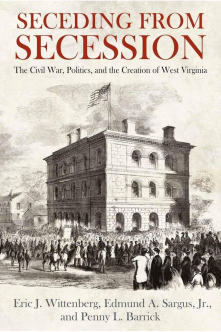 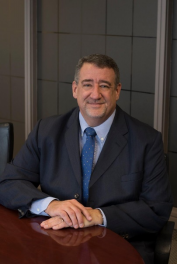
Minutes
Our April meeting was our 453rd. The meeting
had 37 registrants and 28 participants.
Our speaker was Eric Wittenberg. A
lawyer by profession, Mr. Wittenberg is the
author or coauthor of many books on the Civil
War. In his presentation, he discussed the
creation of West Virginia during the war. Mr.
Wittenberg, Edmund A. Sargus, Jr., and Penny L.
Barrick are the authors of
Seceding From Secession: The Civil War, Politics, and the
Creation of West Virginia.
In 1860, Virginia encompassed not just
its present territory, but all of present-day
West Virginia. However, there had long been
serious tensions between the two parts of the
state. In the east, the land was fertile and
largely level or rolling. Cotton and tobacco
production flourished, performed by slaves. In
the west, the land was mostly hilly and
infertile, not suited to large farms or
plantations. As a result, there were relatively
few slaves. The people of the western part of
the state were much closer to Pennsylvania and
the Midwest than to the rest of Virginia, using
the Ohio River for commerce instead of the
Chesapeake Bay and the Atlantic.
Following the fall of Fort Sumter, a
Virginia convention voted to secede from the
Union. In response, delegates from the western
part of the state held their own convention in
Wheeling, deciding that if a secession
referendum was approved by Virginia voters, a
second convention would be called. Following
the referendum’s approval, the second convention
was convened, and the delegates voted to create
a new state, eventually called West Virginia.
The convention also created a “Reorganized (or
Restored) Government of Virginia” with Francis
H. Pierpont as governor.
West Virginia posed a constitutional
problem. Article IV of the Constitution says
that a state can only be created out of another
state with the permission of the legislature of
the state concerned. To get around this, the
Restored Government of Virginia claimed to
represent all the citizens of Virginia, not just
those seeking to leave the rest of the state.
In December 1862, federal legislation
authorizing the creation of the new state passed
and was sent to Lincoln. However, Lincoln had a
problem with the constitutional issues posed.
He polled his cabinet, asking two questions:
1.) Is the legislation constitutional? and 2.)
Is it expedient? On the constitutional
question, the cabinet split right down the
middle (3-3). Lincoln was exasperated and
wondered why he even had a cabinet. He wrote
his own opinion and found it both constitutional
and expedient. On June 20, 1863, West Virginia
became the 35th state of the Union.
At the end of the Civil War, Pierpont had
been made governor of all of Virginia. However,
he was hated by ex-Confederates. The Virginia
General Assembly voted to rescind its consent to
the creation of West Virginia. The Supreme
Court has “original jurisdiction” in certain
cases, and Virginia went on to sue West Virginia
for the return of Berkeley and Jefferson
counties. The new president, Andrew Johnson,
was strongly opposed by radical Republicans, and
in order to prevent him from appointing any
Supreme Court justices, Congress passed
legislation providing for the eventual reducing
of the number of justices to seven.
However, when U.S. Grant became
president, the legislation was repealed, and
Grant appointed two (by the end of his
presidency, three) more justices. Lincoln had
made Salmon P. Chase (his Secretary of the
Treasury) chief justice. Despite having been
one of the three members of Lincoln’s cabinet to
support West Virginia becoming a state, Chase
did not recuse himself from Virginia’s suit
against West Virginia. By a vote of 6-3, in
Virginia v. West Virginia
the Court ruled that the Virginia General
Assembly could not rescind consent for West
Virginia’s creation–effectively endorsing the
state’s constitutionality and retention of
Berkeley and Jefferson counties.
Mr. Wittenberg said that the questions
raised by the establishment of West Virginia
remain with us still. In 2020, Charles S. Trump
IV (no relation to the former president), a
state senator from West Virginia, introduced a
resolution noting that Frederick County,
Virginia was supposed to have been included in
the popular referendum to create West Virginia,
but was not. The county was invited to join the
state but declined.
|
Notes from the
President
April is an important month in the history of the American Civil
War.
The war began in 1861 with the bombardment of Fort Sumter.
Baltimore was the scene of the first hostile casualties
(Nickolas Biddle) and deaths Pratt Street Riot. The war
essentially ended with the surrender of the CSA Army of Northern
Virginia and the Departments of South Carolina, Georgia,
Florida, North Carolina, and Sothern Virginia to forces of the
United States. All these events occurred in April.
The Baltimore Civil War Roundtable (BCWRT) will note April by
having award winning Civil War Author Eric J. Wittenberg explore
the details of the division within Virginia which lead to the
format of the state of West Virginia via his book
Seceding from Secession:
The Civil War, Politics, and the Creation of West Virginia,
during our Tuesday, April, 26 Zoom at
7:30 p.m. Please register for this presentation at
https://us02web.zoom.us/meeting/register/tZ0rdOuoqjsoGdNLLdY8af10krPtd96U-Zp9.
Once registered, you will receive an email link to join the
Zoom.
Normally, our banquet is held in April. Due to the
pandemic-caused two-year break, the in-person BCWRT Banquet will
occur on Tuesday, August 23, 2022, at 6 p.m.
Our speaker will be Kevin Levin, author of the book;
Searching for Black Confederates: The Civil War’s Most
Persistent Myth.
Those of you who purchased banquet tickets prior to the 2020
shutdown
will find their reservations still in effect. If
you haven’t made a reservation, send a check to our treasurer,
Ray Atkins, 1204 Fordham Ct., Bel Air, MD 21014 410-879-8828.
The cost is $35.00 per person.
You can also print and mail the banquet flyer found in this
newsletter.
It will be great to gather in person again!
By the way,
if you are already a member, please renew your membership for
2022. If you are new, please join.
Annual dues
for the Baltimore Civil War Roundtable are $25.00 for
individuals and $35.00 for families. Please make checks payable
to: BCWRT and mail to: Ray
Atkins, 1204 Fordham Ct., Belair, MD 21014. You can find the
membership form in the membership portion of the webpage.
|
Meeting: March 22, 2022
|
Poll historians, history buffs, etc. as to
specific events that caused the Civil War, and
you will receive a variety of answers. Among the
answers one might hear are the signing of the
Constitution, the Missouri Compromise, the
Compromise of 1850, Bleeding Kansas, the Dred
Scott decision and many other possible causes
and effects. One event you will find on nearly
everyone’s list is John Brown’s October 1859
Raid on Harpers Ferry, Virginia.
Twenty-one men joined Brown in executing that
fateful attack. Unfortunately, most people
aren’t aware of or know little about the five
African Americans who were volunteers in that
group.
Join the Baltimore Civil War Roundtable (BCWRT)
as author, reporter
Eugene L. Meyer introduces
you to Shields Green, Dangerfield Newby, John
Copeland, Lewis Leary and Osbourne Perry
Anderson. These men are the topic of Meyer’s
book;
Five for Freedom: The African American Soldiers
in John Brown’s Army.
The Zoom event will occur on Tuesday, March 22,
2022, at 7:30 p.m. Please register for the Zoom
at:
https://us02web.zoom.us/meeting/register/tZ0ldOqhpj0uE9UeUpUv-hVViZ9c4WgIQWif
Once registered, you will receive an email
containing a link to join the meeting.
Eugene L. Meyer grew
up in a house of 25,000 used books in the Long
Island suburbs. Since January 2004, after more
than three decades at the Washington
Post as
a reporter and editor, Meyer has been a fulltime
freelancer, receiving 15 awards for his
journalism and writing. He has had more than 50
bylines in The
New York Times, largely
about economic development issues, and
written for numerous other publications,
including Bethesda
Magazine,
where he is a contributing editor, U.S. News &
World Report, Washingtonian, Columbia College
Today and Maryland Life, where he garnered
multiple awards for his features and his “Hidden
Maryland” column. Since December 2009,
Meyer has been the editor of the quarterly B’nai
B’rith Magazine, which
has won several awards under his stewardship. He
has written about the rise of citizen journalism
and about media codes of ethics for the Center
for International Media Assistance, a
Washington, D.C. think tank, and about the “gig”
economy for CQ
Researcher.
He is also on the board of the nonprofit online
Washington Independent Review of Books, to which
he contributes reviews and essays.
Much of Meyer’s writing is closely tied to his
love of history. He also seeks to provide
readers with a sense of place about where they
live, work or travel. He likes back roads and
forgotten places but also finds satisfaction in
writing about dynamic changes in cities in
suburbs. Over his long career, he has
interviewed country music phenomenon Charlie
Pride, former Weather Underground member
Bernardine Dohrn and U.S. Supreme Court Justice
Thurgood Marshall, covered antiwar protests from
inside and out, spent Jimmy Carter’s last
presidential Christmas in Plains, Ga., covered
two state legislatures and the release of the
Iranian hostages in 1981, gone crabbing and
oystering with Maryland watermen, and written
newspaper series on subjects ranging from urban
renewal and farm preservation to the Chesapeake
Bay to a suburban police “death squad.”
Oh, and he also interviewed the Beatles in their
dressing room — the calm eye in the middle of a
hurricane — prior to their Philadelphia rock
concert on Aug. 17, 1966. He has the clips to
prove it!
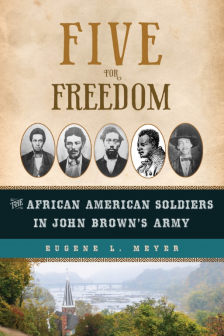 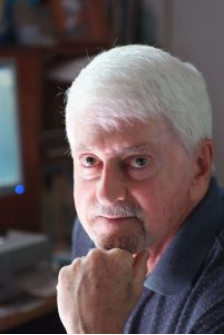
Eugene L. Meyer
Minutes
Our March meeting was our 452nd. The meeting
had 47 registrants and 43 participants.
Our speaker was Eugene Meyer, a retired
Washington Post
journalist and author. Mr. Meyer discussed five
African Americans who were members of the group,
led by John Brown, who launched a raid on the
federal armory at Harpers Ferry in 1859 in an
attempt to trigger a massive slave uprising.
Mr. Meyer is the author of
Five For Freedom: The African American Soldiers In John
Brown’s Army.
Of the five, Osborne Perry Anderson was the only
survivor of the raid. A printer by trade,
Anderson moved to Canada following the passage
of the Fugitive Slave Act of 1850. While in
Canada, Anderson began writing articles for the
newspaper
Provincial Freeman.
The paper was owned by Mary Ann Shadd Cary, the
first black female editor in North America. In
1861, Anderson published
A Voice from Harpers Ferry,
the only insider account of the raid. After the
war, Anderson settled in Washington DC, where he
died of tuberculosis in 1872. Mr. Meyer wrote
an article about Anderson entitled “Sole
Survivor” that appeared in
Washington Post Magazine in
2004.
John Anthony Copeland was from Oberlin, Ohio.
His family had migrated to Ohio from North
Carolina. Whites and African Americans,
including Copeland himself, attended Oberlin
College together. Copeland was apprehended,
tried, and sentenced to be hanged. Before his
execution, he wrote letters that were later
published.
Dangerfield Newby, of Virginia, was the eldest
of eleven children. Having been freed in 1858
when his white father moved the family to Ohio,
Newby met John Brown in eastern Ohio. Newby had
failed to purchase the freedom of Harriet, a
woman with whom he had a relationship (as well
as possibly seven children) and joined Brown
believing he would be able to liberate her if
they succeeded in provoking a slave uprising.
On the second day of the raid, Newby was
stationed at the entrance to the Shenandoah
River bridge. He wanted to join Brown in the
engine house. However, a sniper managed to kill
him with a spike, and he was dismembered by a
mob and left for the hogs. Harriet was sold
south to Louisiana but was later liberated and
remarried.
Lewis Sheridan Leary was a harness and saddle
maker from Oberlin. He and Copeland had gone to
join Brown’s army together. While attempting to
flee across the Shenandoah River, he was
mortally wounded. His wife later remarried and
had a daughter who went on to become the mother
of Langston Hughes.
The last of the five discussed by Mr. Meyer was
Shields Green. Green was the “mystery man” of
the group. He claimed to be descended from
African royalty and met John Brown at Frederick
Douglass’s home. Douglass, Brown and Green met
in Chambersburg, Pennsylvania, during a weekend
in August 1859. Douglass said that the raid
would be a trap, but Green decided to “go with
the old man.”
Mr. Meyer discussed the importance of
confronting our past, however uncomfortable
doing so may be, and said that the United States
won’t move forward on race until Americans own
their history on this issue. He also spoke
about many developments regarding race and
historical memory, as well as civil and voting
rights, that have occurred in recent years. He
said that the five died to make us free, but
that “the struggle continues.”
According to Mr. Meyer, it appears that all of
Brown’s African American soldiers except Shields
Green were biracial.
|
Notes from the
President
During the American Civil War, many battle plans had to be adjusted on the fly because
of unforeseeable circumstances. Sudden weather changes,
inaccurate maps, the appearance of additional enemy soldiers and
disease outbreaks were among the many factors that altered or
completely changed military operations.
While not on the battlefield, the Baltimore Civil War
Roundtable has been maneuvering around the Covid 19 pandemic for
two years. Following a reconnoitering of the Covid 19 position
and the coordination of all the basic element necessary to
present our event, the in-person BCWRT Banquet will occur on
Tuesday, August 23, 2022, at 6 p.m.
Our speaker will be Kevin Levin, author of the book;
Searching for Black
Confederates: The Civil War’s Most Persistent Myth.
In order to accommodate this change, award winning Civil
War Author Eric J. Wittenberg agreed to explore the details of
the division within Virginia which lead to the format of the
state of West Virginia via his book
Seceding from Secession:
The Civil War, Politics, and the Creation of West Virginia,
during our April, 26 Zoom meeting.
Those of you who purchased banquet tickets prior to the 2020
shutdown
will find their reservations still in effect. If
you haven’t made a reservation, send a check to our treasurer,
Ray Atkins, 1204 Fordham Ct., Bel Air, MD
21014 410-879-8828. The cost is $35.00 per person.
It will be great to gather in person
again!
By the way,
if you are already a member, please renew
your membership for 2022. If you are new, please join.
Annual dues
for the Baltimore Civil War Roundtable are $25.00 for
individuals and $35.00 for families. Please make checks payable
to: BCWRT and mail to: Ray
Atkins, 1204 Fordham Ct., Belair, MD 21014. You can find the
membership form in the membership portion of the webpage.
|
Meeting: February 22, 2022
|
February 2022 marks the 160th Anniversary of
the Battles of Fort Henry and Fort Donaldson in
Tennessee. 2022 also celebrates the
bicentennial of the birth of Hiram Ulysses
Grant, who was born in Point
Pleasant, Ohio,
on April 27, 1822. The stories differ on how his
name was changed; however, sometime during the
process of his appointment to the United States
Military Academy, Hiram became known as
Ulysses S. Grant (U.S. Grant).
The BCWRT will go back to 1862 when living
historian and Grant reenactor
Dr. Curt Fields looks
at the
Ft Henry and Fort Donaldson battles
on February 22, 2022 at 7:30 p.m. Registration
is required and can be achieved by going to:
https://us02web.zoom.us/meeting/register/tZEtcuippzIqGNdra2U056EDCLjBjtM2W3h9
You will receive a confirmation email containing
the link to join the Zoom.
Dr. Fields has
a bachelor and a master’s degree in Education
from the University of Memphis, Tennessee. He
later earned a second master’s degree in
Secondary Education and a Ph.D. in Educational
Administration and Curriculum from Michigan
State University. He spent eight years at the
Junior and Senior high school levels teaching
before serving 25 years as a high school
administrator. He teaches as an adjunct
Sociology professor at the University of Memphis
and in Education for Belhaven University,
Memphis campus. He is now an educational
consultant and a living Historian.
He was selected to portray
General Grant at
the 150th anniversary of Lee’s surrender to
Grant at Appomattox Court House, Virginia, in
2015. He was featured as
General Grant,
and as a Grant authority, in the Discovery
Channel three-part documentary series “How Booze
built America.”
Dr. Fields is
the same height and body style as the General
Grant and represents a true-to-life image of the
man as he would have looked. Additionally, he
also conducts extensive research in order to
share an accurate portrayal. His presentations
are in first person, quoting from General
Grant’s memoirs; articles and letters the
General wrote, statements he made in interviews
and first-person accounts of people who knew the
General or were with him and witnessed him
during events.

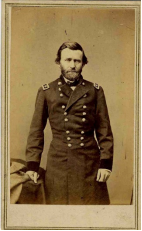
Curt Fields
U.S.
Grant
Minutes
Our February meeting was our 451st. The meeting had 25
registrants and 21 participants.
Our speaker was Dr. E.C. “Curt” Fields. Dr. Fields gave
an impersonation of Union General Ulysses S.
Grant, discussing the events surrounding the
capture of Forts Henry and Donelson in Tennessee
in February 1862. In 2015, Dr. Fields was
chosen to impersonate Grant at the reenactment
of the 150th anniversary of Robert E. Lee’s
surrender to Grant at Appomattox Court House.
In the impersonation, Grant was speaking on February 17,
1862. This was one day after Fort Donelson
fell, as well as the day Lincoln approved
Grant’s promotion to major general. Grant began
by describing the background to the battles of
Forts Henry and Donelson. He said that contrary
to what others have claimed, he did not lose the
battle of Belmont, Missouri, fought on November
7, 1861. On the contrary, he achieved all his
objectives and therefore won. From November
1861 to February 1862, Grant’s troops were
constantly training. However, he said, soldiers
eventually must fight.
Grant thought that the best way for him to advance the war
was through rivers. He met with Major General
Henry W. Halleck and asked for a joint Army-Navy
expedition to take Fort Henry, on the east bank
of the Tennessee River. Halleck initially said
no, but when Grant told Commodore Andrew Hull
Foote of his plan, Foote telegraphed Halleck,
and on January 30, 1862, Halleck approved the
plan. On February 6, Foote’s gunboats opened
fire on Fort Henry and disabled most of the
guns. By the time Grant got to the fort, the
fight was essentially over. There was a lot of
rain and mud.
With the capture of Fort Henry, the Union had control of
the Tennessee River all the way to Muscle
Shoals. Grant proposed to Halleck that Fort
Donelson be taken. On February 12, Grant’s men
started moving toward Donelson in the mud and
rain. Given that the temperature was around
50-60 degrees, the men began taking off their
coats and stacking them. Unfortunately for
them, the night of February 13-14 was very cold.
A snowstorm occurred, and men began to lose
fingers and toes from frostbite. On the 14th,
Foote started bombarding Donelson, but things
didn't go well, with many of his vessels being
damaged. The following day, Grant left the
battlefield to visit Foote and discuss the next
move.
When Grant left, he didn’t leave anyone in command. There
were two reasons for this. He didn’t think the
Confederates would try to break out, and he
didn’t have confidence in Brigadier General John
A. McClernand, the ranking general. However,
the Confederates did indeed attempt a breakout.
Upon learning this, Grant raced back to the
battlefield and told Smith: “All has failed on
our right–you must take Fort Donelson.”
Fortunately for them, the Confederate
leadership turned out to be very inept. The
outer line of Confederate entrenchments was
taken. Additionally, on the right McClernand
received help from Brigadier General Lew
Wallace. Finally, General Simon Bolivar Buckner,
the remaining Confederate commander, sent Grant
a message agreeing to surrender (the original
commander, John B. Floyd, and his second in
command, Gideon J. Pillow, had fled, abandoning
Buckner and the garrison). The surrender took
place the following day (February 16), although
a considerable portion of the Confederates were
able to walk off and melt away.
The surrender of Fort Donelson led directly to the Union
taking control of Nashville–something that Grant
considered a big moral and strategic victory.
|
Notes from the
President
Thanks to all of you who
participated in the Baltimore Civil War Roundtable Participation
Survey 2022 in January. There were some interesting and varied
responses. The Executive Committee will soon meet to analyze
those responses and make some important decisions.
The survey revealed the following:
Q1 Since the BCWRT began virtual meetings in the summer of 2020,
how many Zoom meetings have you attended?
Answered: 19 Skipped: 0
None of the above 15.79%, Nearly All 31.58%, 6-10 26.32%, 1-5
26.32%
Q2 Given the current status of the pandemic, how ready are you
to attend in-person meetings?
Answered: 19 Skipped: 0
None of the above 31.58%, Ready 31.58%, Somewhat Ready 00.00%,
Slightly Ready 36.84%
Q3 If meetings resumed during the pandemic, what safety
protocols would you like to see in place?
Answered: 19 Skipped: 0
None of the above 21.05%, Mask requirement, proof of
vaccinations and social distancing 47.37%, Mask requirements and
social distancing 31.58%, Mask requirement 00%
Q4 If the BCWRT started hybrid meetings (simultaneous in-person
and on-line) would you still physically attend?
Answered: 19 Skipped: 0
Yes 36.84%, Occasionally 26.32%, No 36.84%
Q5 Have you paid your dues for 2022?
Answered: 19 Skipped: 0
Yes 68.42%, Will pay soon 21.05%, No 10.53%
Q6 How pleased are you with the quality of our speakers?
Answered: 18 Skipped: 1
None of the above 5.56%, Very pleased 61.11%, Somewhat pleased
27.78%, Slightly pleased 5.56%
Q7 We are scheduled to have our Annual Banquet at the Columbus
Gardens (4301 Klosterman Ave., Baltimore, 21236) at 6 p.m. on
Tuesday, April 26, 2022. Tickets are $35.00. Do you plan to
attend?
Answered: 19 Skipped: 0
None of the above 21.05%, Definitely 15.79%, Highly likely
10.53%, Unlikely 52.63%
Again, thanks to all who participated
In the past year or so, the BCWRT have gotten some new members,
some of whom live out of the Baltimore area and join us because
we have been on-line. Welcome to
Cheryl R. Gooch, Mel Reid, Eugene Perry and Robert Wright. (If I
have accidentally omitted anyone, please let me know.
Speaking of membership, if you are already a member, please
renew your membership for 2022. If you are new, please join.
Annual dues
for the Baltimore Civil War Roundtable are $25.00 for
individuals and $35.00 for families. Please make checks payable
to: BCWRT and mail to: Ray
Atkins, 1204 Fordham Ct., Belair, MD 21014. You can find the
membership form in the membership portion of the webpage.
|
Meeting: January 25, 2022
|
Say
‘Hello” to the New Year by joining the Baltimore
Civil War Roundtable as we initiate another year
of exploring the facts about the individuals,
incidents, groups, geographical areas, etc.
involved in the American Civil War.
On Tuesday, January 25, Lawyer, historian and
author
Chris McIlwain make
a return Zoom visit to the BCWRT to talk about
the subject of his new book;
The South's Forgotten Fire-Eater: David Hubbard
and North Alabama's Long Road to Disunion.
The Virginia born David
Hubbard
was a Alabama transplant who served in that
states legislature, the US Congress and the
Congress of the CSA. McIlwain will provide many
details of Hubbard’s life and influence on
January 25.
Christopher Lyle McIlwain, Sr.,
has been practicing law for more than three
decades in Tuscaloosa, Alabama. His other
passion is the study of nineteenth century
history. He is the author of three previous
books, Civil War Alabama (U. of Alabama Press,
2016), the winner of the McMillan Prize, and
1865 Alabama: From Civil War to Uncivil Peace
(U. of Alabama Press, 2017). In October of 2019,
McIlwain spoke to the BCWRT about his
book
The Million-Dollar Man Who Helped Kill a
President: George Washington Gayle and the
Assassination of Abraham Lincoln.
Register for the Tuesday, January 25, 7:30 p.m.
Zoom at:
https://us02web.zoom.us/meeting/register/tZEqfuutpj4uGN2BCzyRLCGsd3RQiHJliMGW You
will receive a link which will allow you to join
the event.
 
Minutes
Our January meeting was our 450th. The meeting
had 33 registrants and 24 participants.
Our speaker was Chris McIlwain, a lawyer and
historian from Tuscaloosa, Alabama. Mr.
McIlwain spoke on the life and career of David
Hubbard, a prominent nineteenth-century Alabama
politician and secessionist. Mr. McIlwain is
the author of
The South’s Forgotten Fire-Eater: David Hubbard & North
Alabama’s Long Road to Disunion.
Hubbard was born in Virginia in 1792. When he
was young, his family moved to Tennessee. They
owned a small number of slaves but were not
particularly wealthy. Hubbard served in a
Tennessee cavalry regiment which fought under
Andrew Jackson during the War of 1812. The
regiment participated in the battle of Horseshoe
Bend, which essentially ended the Creek War.
The Creeks ceded about sixty percent of
present-day Alabama to the federal government.
Hubbard fought the British near New Orleans and
was seriously wounded and captured, though later
released.
After the war, Hubbard (and some family members)
moved to Alabama to buy land fertile for cotton.
Land speculation was rampant during this
period, with people buying huge amounts of land
and paying too much for it. Hubbard bought over
600 acres. In 1827–at the age of 35–he was
elected to the Alabama state senate. Although
he was seen by some as an opportunist, Hubbard
became a “populist” --a hero to poor farmers in
the region–because of land and financial
policies that were favorable to them.
During his early political career, Hubbard
managed to get a railroad built–the first in the
South–which extended to the Tennessee River.
This was a means of circumventing the Muscle
Shoals, which made navigation of the river very
difficult in northern Alabama. Additionally, he
was responsible for an amendment to the Alabama
Constitution which limited justices and judges
to six-year terms (this remains in effect today,
with the exception of municipal court judges).
Hubbard did a great deal of speculating in
Creek lands, seeking to acquire them by fair
means and foul. In 1839, he was elected to the
U.S. Congress.
As the nineteenth century progressed, tensions
between the North and the South increased.
Hubbard became a zealous supporter of Southern
interests–including the preservation and
expansion of slavery. After the Texas
Revolution, Hubbard supported making Texas a
part of the United States–in fact, he advocated
secession if the state was not admitted to the
Union. In 1844, Hubbard served as a
presidential elector for James Polk, who
narrowly defeated Henry Clay in the election
that year. In the ensuing war with Mexico,
triggered by Polk, the U.S. acquired a huge
amount of territory, including California.
Hubbard was strongly opposed to the wholesale
admission of California to the United States as
a free state.
John Brown’s raid on Harpers Ferry, Mr. McIlwain
argued, was hugely important to secession. The
raid reminded Hubbard of other insurrections,
including in Haiti (thousands of whites were
massacred in Haiti after the Haitian
Revolution). Mr. McIlwain said that there were
rumors, pushed by Hubbard, that some of Brown’s
men had come to Alabama to start a revolt.
Hubbard played an active role in getting
Alabama to secede from the Union.
During the Civil War, Hubbard did not join the
Confederate military in any capacity. He and
his family spent much of the war in Tuscaloosa.
They lost everything, including a son. After
the war ended, Hubbard and his wife moved to
Spring Hill, Tennessee, and after his wife died,
he moved to Louisiana to live with another son,
David Hubbard Jr. He died in 1874 at the age of
81. According to Mr. McIlwain, many of those
who had been secessionists were not held in high
esteem after the war–at least in northern
Alabama.
|
Notes from the
President
Welcome to 2022. Early in the winter of 2019/2020, we
began hearing news reports about a new Coronavirus Disease that
had been isolated in 2019 (Covid-19). NPS ranger and author Matt
Borders presented a program on
The Spy Game in Maryland in January of 2020. Little did we know that our in-person
meetings would soon be temporarily shutdown due to the pandemic.
You will soon be receiving a short survey which will
inquire about your participation in the BCWRT in-person and/or
Zoom. Since we plan to have in-person Annual Banquet in April,
the survey will also question your participation in that. Please
open the email and complete ASAP.
By the way. In checking with the Parkville Senior Center,
they are getting ready to institute a 30-day shutdown due to the
current omicron surge.
Please check the articles in this month’s Old Liner
newsletter. There are a couple of pieces on the Emancipation
Proclamation that you may find interesting.
We begin the year with a presentation from author Chris
Mcllwain as he focuses on his book;
The South's Forgotten Fire-Eater: David
Hubbard and North Alabama's Long Road to Disunion.
You can register for that Zoom at
https://us02web.zoom.us/meeting/register/tZEqfuutpj4uGN2BCzyRLCGsd3RQiHJliMGW. You will receive a link to join the meeting.
Be certain to check our upcoming events link to see the
list of scheduled speakers for the rest of the year. Speakers
include Dr. Curt Fields, Kevin Levin, Jean Baker, Annette
Khawane and Eric Wittenberg.
Remember: Memberships allow the BCWRT to
continue our Zoom presentations. Memberships will allow us to go
to a hybrid in person/Zoom model when we are pandemic safe.
Memberships will allow us to resume having CW related trips.
Unfortunately, our 2021 active membership has become lower than
our Zoom meeting participation. Speakers cost. Zoom accounts
cost.
If you are already a member, please renew
your membership for 2022. If you are new, please join.
Annual dues
for the Baltimore Civil War Roundtable are $25.00 for
individuals and $35.00 for families. Please make checks payable
to: BCWRT and mail to: Ray
Atkins, 1204 Fordham Ct., Belair, MD 21014. You can find the
membership form in the membership portion of the webpage.
Those who prefer online payments will soon be able to play via
PayPal. We will keep you informed.
|
Meeting: December 21, 2021
|
The
Baltimore Civil War Roundtable (BCWRT) will end
2021 the same way we began 2021: with a Zoom
presentation!
Join us on Tuesday, December 21 at 7:30 p.m. as
re-enactors with B Company, 54th Massachusetts
Infantry Regiment, will engage us in a program
entitled;
The 54th Mass.
Infantry Regiment, Beyond Glory.
Many of you are familiar with the 1989 motion
picture
Glory,
which tells a ‘Hollywood’ version of the
establishment and early battles of the famed
regiment. Our presentation will go beyond the
film, exploring the 54th’s
activities after the noted 2nd Battle
of Fort Wagner through the rest of the war.
Additionally, discover the legacy of the 54th and
learn what is involved in re-enacting the
Glory Regiment.
The presentation by re-enactors Ed Gantt,
Michael Schaffner, Bill Gwaltney, Bryan
Cheeseboro, Bernie Siler, Ben Hawley and Robert
Ford promises to be an informative and exciting
affair.
You can register for the Zoom by going to:
https://us02web.zoom.us/meeting/register/tZ0rfuiurjMvE9dkVLj3EsPuKsfYO1ion8vQ
Once registered, you will receive a link to join
the program.

Storming Fort Wagner/ National Portrait Gallery.
Digitized by Jen Harris/NPG
Morris Island, Charleston Harbor July 18, 1863
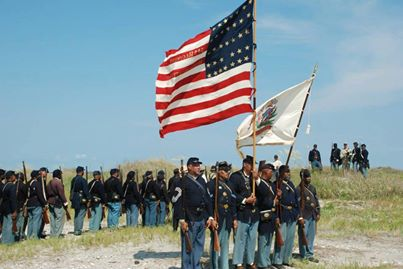
Re-enacting the 54th.
Morris Island, July 18, 2013
Minutes
Our December meeting was our 449th. The meeting
had 41 registrants and 27 participants.
Our presentation was entitled “The 54th
Massachusetts Infantry Regiment, Beyond Glory.”
It was given by reenactors who portray or have
portrayed members of the regiment. Each of them
explored aspects of the 54th that were not
covered by the 1989 film
Glory,
which dramatized its story. The reenactors were
Ed Gantt, Michael Schaffner, Bill Gwaltney,
Bryan Cheeseboro, Bernie Siler, Ben Hawley, and
our President, Robert Ford.
After Mr. Ford gave an overview covering the
formation of the 54th
through their participation in the famous
assault on Fort Wagner, Mr. Gantt began a
discussion of the battle of Olustee (also known
as Ocean Pond), fought on February 20, 1864.
This battle–a Confederate victory–was the
largest of the war fought in Florida, and the
54th (except for companies “A” and “E”)
participated in it. The battle was the climax
of a Union expedition into Florida that had
several objectives, including cutting off fresh
beef supplies from the rest of the Confederacy,
establishing a pro-Union government in Florida,
and recruiting African American soldiers. The
54th was one of three African American regiments
that fought at Olustee. The intense battle
resulted in heavy casualties, particularly on
the Union side. The 54th covered the Union
retreat and repulsed a Confederate attack. When
a train full of wounded men broke down, the 54th
(and the 35th USCT) hooked up a rope to the
train and dragged it for miles. Today there is
an annual reenactment of the battle.
Mr. Schaffner discussed the battle of Honey
Hill, fought in South Carolina on November 30,
1864. A Union force of about 5,000 men was
dispatched in support of Sherman’s approach to
Savannah. However, there was bad weather as
well as not enough guides, pilots, or maps. As
a result, they didn’t know that a substantial
force of Confederates was entrenched. The Union
troops attacked but were not successful and
suffered far higher casualties than the
Confederates.
Mr. Gwaltney discussed the 54th’s last
battle–Boykin’s Mill, fought on April 18, 1865.
Coming near the end of the war, this was also
the last battle fought in South Carolina. The
54th suffered two killed and thirteen wounded,
including First Lieutenant E.L. Stevens,
believed to be the last Union officer killed in
the war. Stevens was apparently killed by
Burwell H. Boykin on whose family’s property the
Union troops were moving through. Boykin turned
fifteen the day after the battle.
Mr. Cheeseboro discussed individuals who served
in the 54th, including William Carney, who
received the Medal of Honor for gallantry at
Fort Wagner, James Townsend, who was elected to
the Indiana House of Representatives in 1884,
and Lewis Douglass, the eldest son of Frederick
Douglass, who was wounded in the attack on Fort
Wagner. As a member of the legislative council
of the District of Columbia, Douglass introduced
a bill requiring restaurants to list their
prices so they could not discriminate against
African American customers.
Mr. Siler discussed the making of
Glory (he
himself portrayed a member of the 54th in the
film). He noted that in the scene where the
54th marches through Boston, the background
signs are representative of the city in the
nineteenth century. In the film, they had to
build a replica of Fort Wagner with the ocean on
the wrong side. Moreover, unlike in the movie,
there were no naval warships in the ocean as the
54th attacked. But, in Mr. Siler’s view, these
are minor things. He recalled that when they
were getting ready to film the attack on Wagner,
a thunderstorm broke out–just like it had in
real life! Mr. Siler also noted that
Glory gives
the erroneous impression that the entire 54th
died in the assault.
Mr. Hawley concluded the presentation. A
great-great grandson of a member of the 29th
Connecticut, an African American regiment, he
has gone all over the country as a reenactor and
marched in parades–including President Obama’s
inaugural parades. He said that by reenacting,
he has learned a great deal about African
American soldiers.
|
Notes from the President
December 2021
It is difficult the realize that 2021 is almost over. Thank
goodness that the use of modern social media has allowed us to
‘see’ each other on a monthly basis. Our last in person
gathering was
February of 2020, just before nearly everything shutdown.
We are left to wonder when this pandemic will wane and come to
an end. Imagine the thoughts of those field soldiers in December
of 1861 who originally believed that it was going to be a short
war and now wondered how long it was going to last.
The BCWRT will continue to monitor the health situation to
determine the status of our meetings. We are planning to
initiate a hybrid live/online model. Additionally, we a still
hoping to have our Annual Banquet as an in-person event in
April.
Stay Tune!
Remember: Memberships allow the BCWRT to continue our Zoom
presentations. Memberships will allow us to go to a hybrid in
person/Zoom model when we are pandemic safe. Memberships will
allow us to resume having CW related trips. Unfortunately, our
2021 active membership has become lower than our Zoom meeting
participation. Speakers cost. Zoom accounts cost.
If you are already a member, please renew your membership for
2022. If you are new, please join.
Annual dues
for the Baltimore Civil War Roundtable are $25.00 for
individuals and $35.00 for families. Please make checks payable
to: BCWRT and mail to: Ray
Atkins, 1204 Fordham Ct., Belair, MD 21014. You can find the
membership form in the membership portion of the webpage.
Those who prefer online payments will soon be able to pay via
PayPal. We will keep you informed.

It was Civil War era cartoonist Thomas Nast who gave us what is
considered the modern image of Santa Claus, in the January 3,
1863 issue of Harper’s Weekly. On behalf of our Board, I wish
you all a Happy and Blessed Holiday Season! Whether you
celebrate Christmas, Chanukah (Hanukkah), Ashura, Bodhi Day,
Kwanza or any other festival of note, May Peace Be with You All!
|
Meeting: November 26, 2021
|
During his testimony before the military
tribunal investigating the assassination of
Abraham Lincoln, John Surratt, Jr. friend and
Surratt Boarding House resident Louis Weichman
described
Sarah Slater as
a veiled lady who visited the boarding house
twice during April 1865.
Slater has
also been described as a mysterious CSA spy and
courier.
Find out more about this CW character as author
Bob O’ Connor takes
you into her world via his book,
Veil of Secrecy: Mrs. Slater the Missing Lincoln
Conspirator.
The Zoom presentation will occur on Tuesday,
November 23, 2021, at 7:30 p.m.
A native of Dixon, Illinois and a graduate of
Northern Illinois University, Bob
O’Connor’s interest
in history goes back to a trip in 1958 to
Galesburg, IL where he attended the 100th
anniversary of the Lincoln-Douglas debates.
Pulitzer Prize winning poet and Lincoln
biographer Carl Sandburg was the featured
speaker. He has worked full time and part time
as a newspaper reporter, and at various jobs —
many that required writing press releases, news
articles, or reports. His first published
article was when he was in 7th grade – in an
Illinois Historical Society for junior high
students.
While Director of Tourism in Washington County,
Maryland, Bob
O’Connor worked
closely with the Antietam Battlefield and
Harpers Ferry National Historical Parks. He was
responsible for starting the annual Independence
Day Concert at Antietam Battlefield in July and
the Memorial Illumination at Antietam
Battlefield in December.
Being a resident of Harpers Ferry, WV (and his
interest in Abraham Lincoln. John Brown and John
Wilkes Booth) inspired him to write his first
book “The Perfect Steel Trap Harpers Ferry
1859”. The book has been named a Finalist in the
2006 Best Book Awards by USA Book News. In all, O’Connor is
the author of 15 books.
Bob O’Connor has
been presenting an historical interpretation of
Ward Hill Lamon, Lincoln's bodyguard, for about
ten years. (There are 400 Lincoln reenactors but
only one who portrays Lincoln's bodyguard.) He
has also edited and published, in 2010, the only
book Mr. Lamon ever wrote, "The Life of Abraham
Lincoln as President".
Please join the BCWRT for this Zoom presentation
by registering at
https://us02web.zoom.us/meeting/register/tZ0ld-iqqzgiH91HZZRgX55mBhW__VPropDA
After registering, you will receive a
confirmation email containing information about
joining the meeting.
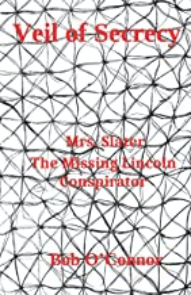 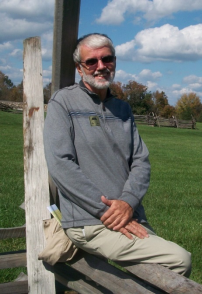
MINUTES
Our November meeting was our 448th. The meeting
had 26 registrants and 24 participants.
Our speaker was Bob O’Connor, a historian,
author, and reenactor. Mr. O’Connor discussed
Confederate agent Sarah Slater. He is the
author of
Veil of Secrecy: Mrs. Slater The Missing Lincoln
Conspirator.
Sarah Antoinette Gilbert was born in 1843. Her
mother was from Trinidad and of French origin.
The family spoke French at home, and Sarah’s
dream was to become a French actress. Her
mother took her to the Gayety Theater in Albany,
N.Y. to see Shakespeare’s
Romeo and Juliet.
Romeo was played by John Wilkes Booth.
While living in New Bern, N.C., Sarah purchased
a mourning veil. She always wore it in
public–it fit in with her mysterious persona.
She and her brother boarded with a man who
“gifted” her ten dance lessons with Rowan
Slater. Sarah and Rowan were eventually
married.
When the Civil War began, Rowan and Sarah’s
three brothers enlisted in the Confederate army.
Rowan became a purchasing agent and enlisted in
the 20th North Carolina Infantry. Mr. O’Connor
said that Sarah never saw him again, and that
she later divorced him
(secretary’s note: it has been asserted
elsewhere–citing documents–that Sarah and Rowan
were reunited in New York City after the war,
where she did indeed divorce him).
Sarah moved to Richmond and petitioned for a
pass to travel to New York to see her mother.
However, Confederate Secretary of War James
Seddon found out that two of her brothers had
encouraged other soldiers to desert and that
Sarah had lied about this, saying that she only
had one brother and that he had died in
Confederate service. As a result, Seddon
insisted that in order to get the pass, Sarah
would have to act as a courier and go to
Montreal.
Sarah traveled to Montreal on multiple
occasions. Her contacts included Jacob Thompson
and Edwin Gray Lee, a cousin of Robert E. Lee.
According to Mr. O’Connor, she had a brief,
exciting encounter with John Wilkes Booth, and
became a good friend of John Surratt. When
Sarah disappeared after her last trip, so did
$649,000 from a Confederate bank account in
Montreal. Mr. O’Connor asked: Is this a
coincidence?
After the Lincoln assassination, Sarah was
interrogated. However, the questions of the
interrogators came from sources whose
information was hearsay, and she was released.
Mr. O’Connor stated that his book on Sarah–Veil
of Secrecy–is
a work of historical fiction that is about 95%
true. All the situations and characters in it,
he said, are real. He also discussed other
books that he has written or plans on writing.
He recently published a book about a 48-shot
repeating rifle invented by a man from Staunton,
Virginia that was never manufactured. His
upcoming projects include a story about John
Brown’s raiders, and a trial series about people
who never went to trial–including John Wilkes
Booth, Jefferson Davis, and Nathan Bedford
Forrest.
|
Notes from the President
November 2021
Back in the 1990’s, American Express used the slogan ‘membership
has its privileges’. As we get closer to 2022, that phase holds
true for the Baltimore Civil War Roundtable.
Memberships allow the BCWRT to continue our Zoom presentations.
Memberships will allow us to go to a hybrid in person/Zoom model
when we are pandemic safe. Memberships will allow us to resume
having CW related trips. Unfortunately, our 2021 active
membership has become lower than our Zoom meeting participation.
Speakers cost. Zoom accounts cost.
If you are already a member, please renew your membership for
2022. If you are new, please join.
Annual dues
for the Baltimore Civil War Roundtable are $25.00 for
individuals and $35.00 for families. Please make checks payable
to: BCWRT and mail to: Ray
Atkins, 1204 Fordham Ct., Belair, MD 21014. You can find the
membership form in the membership portion of the webpage.
Those who prefer online payments will soon be able to play via
PayPal. We will keep you informed.
Please refer to the Upcoming Events link for the current BCWRT
Schedule.
Reminder: It was during the Civil War that Thanksgiving first
became an official United States holiday. Wishing you a great
and safe Thanksgiving.
|
Meeting: October 26, 2021
|
When it came to the Wild West, the
nineteenth-century press rarely let truth get in
the way of a good story. James Butler “Wild
Bill” Hickok’s story was no exception.
Mythologized and sensationalized, Hickok was
turned into the deadliest gunfighter of all, a
so-called moral killer, a national phenomenon
even while he was alive.
Rather than attempt to tease truth from fiction,
coauthors Paul Ashdown and Edward Caudill
investigate the ways in which Hickok embodied
the culture of glamorized violence Americans
embraced before, during and after the Civil War
and examine the process of how his story
emerged, evolved, and turned into a viral
multimedia sensation full of the excitement,
danger, and romance of the West.
Both Paul
Ashdown and Edward
Caudill are
professors emeritus of journalism at the
University of Tennessee, Knoxville. They have
co-written Inventing
Custer: The Making of an American Legend; Sherman’s
March in Myth and Memory; The
Myth of Nathan Bedford Forrest;
and The
Mosby Myth: A Confederate Hero in Life and
Legend. Ashdown
specializes in literary journalism,
international communication, and popular
culture, and Caudill focuses on media history,
the Civil War era, and the history of ideas in
public memory and the press.
Please join the BCWRT for this Zoom presentation
by registering at
https://us02web.zoom.us/meeting/register/tZcqduCsrTwvEteEvAwTyCnlFlvTxLhqsuCF
After registering, you will receive a
confirmation email containing information about
joining the meeting.
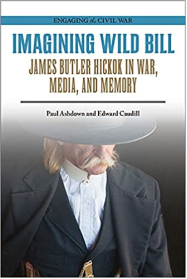 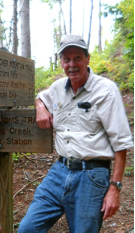 
Ed Caudill Paul Ashdown
MINUTES
Our October meeting was our 447th. The meeting had 24
registrants and 18 participants.
Our speakers were Paul Ashdown and Edward Caudill. Mr.
Ashdown and Mr. Caudill discussed James Butler
(better known as “Wild Bill”) Hickok
(1837-1876). The title of their presentation was
The Myth of Wild Bill: From
Abolition to Afterlife. The two men are the authors of the book
Imagining Wild Bill: James
Butler Hickok In War, Media, And Memory.
Mr. Ashdown gave the first part of the presentation. He
noted that when it comes to Hickok, it’s very
difficult to separate the man from the myth.
Hickok was born in Homer (later Troy Grove),
Illinois on May 27, 1837 (although generally
accepted, this date is disputed). During his
youth, Illinois was the home of many stations on
the Underground Railroad, and Hickok’s father
built a place for slaves to hide in their home.
In 1856, Hickok headed for Kansas Territory, where he
served as a constable. At the time, the
territory was the site of its own civil war
between pro- and anti-slavery groups and
individuals. Hickok appears to have been a
member of one of the anti-slavery groups,
possibly the Jayhawkers. He went to work for a
company that launched the Pony Express, serving
mainly as a stagecoach driver. He suffered an
injury and was assigned to light duty as a
result.
During the Civil War, Hickok served as a scout, spy,
sharpshooter, and wagon driver. He participated
in the battle of Wilson’s Creek (August 10,
1861) the first major battle of the war west of
the Mississippi and is believed to have fought
at Pea Ridge/Elkhorn Tavern (March 7-8, 1862),
and Westport (October 23, 1864) as well. As
always with Hickok, many “tall tales” exist
regarding his Civil War service, including the
claim that at Pea Ridge, he mortally wounded
Confederate Brigadier General Benjamin McCulloch
at a distance of over two miles, in addition to
killing 35 other men in the battle.
It was after the war that the myth of “Wild Bill” began to
take hold. Journalist George Ward Nichols
interviewed Hickok and wrote an article about
him that appeared in
Harper’s New Monthly Magazine
in 1867. The article did much to make Hickok famous. Many
people made money off of the myths surrounding
him, but Hickok himself did not. The myths
proliferated in books and, decades later, in
movies and on TV. Eisenhower said “Read your
Westerns” because, he said, they embodied
American values.
The second part of the presentation was given by Mr.
Caudill. Mr. Caudill said that the early
biographies of Hickok were bogus (dime novels.
etc.). The later ones were better, but they
couldn’t compete with the tall tales. They are
more critical and shed light on the West.
Mr. Caudill said that the notion of the “Wild West” is
something of a misnomer--more a reflection of
how we want to remember things than of what the
reality was. The West wasn’t nearly as “wild” as
is commonly believed today. There were pockets
of “wildness,” but the extent of it has been
grossly exaggerated. Additionally, he asked:
Are we making heroes out of everyday thugs?
Mr. Caudill said that in American culture, violence is
seen as entertainment, and “Wild Bill” fits into
that. He and others like him are seen as
dominant and dangerous, but also
vulnerable--Cold War values. But for all the
commemoration of--including monuments
to--Hickok, Mr. Caudill said that when you look
at his “resume,” it’s not very impressive.
However, he fits into the American myth of
individualism and exceptionalism. Mr. Caudill
said that the killing of Hickok in Deadwood,
Dakota Territory (now South Dakota) was the best
thing that ever happened to the town, given the
fame that it brought.
|
Notes from the President
October 2021
October 16 -18 mark the anniversary dates of the anniversary
dates of John Brown’s Raid, which began in the hills of Maryland
at Kennedy Farm and ended on the Potomac River front in Harpers
Ferry, Virginia (now West Virginia). The event, like many other
events of the past, is shrouded in historical fact and fiction.
Indeed, there is a since of mythology to John Brown himself.
One Civil War and Wild West figure whose life accounts are
covered more in fiction than in facts is James Butler Hickok,
better known as Wild Bill. If you bare like me, your main image
of Wild Bill is Guy Madison from the long running 1950’s TV
series
Adventures of Wild Bill Hickok with
Andy Devine as his side kick Jingles.
Join us on Tuesday, October 26 at 7”30- p.m. as authors Paul
Ashdown and Ed Caudill explore the life of this legendary
character via their recent publication
Imaging Wild Bill. James Butler Hickok in War, Media and Memory. I’m
certain you will discover that, when it comes to Wild Bill, at
times it is difficult to uncover what is fact and what is overt
fiction.
Join us by registering at:
https://us02web.zoom.us/meeting/register/tZcqduCsrTwvEteEvAwTyCnlFlvTxLhqsuCF
You will receive a confirmation email containing information
about joining the meeting.
Membership is vital to the Baltimore Civil War Roundtable. Like
oil in your car, when you run low, you run into problems.
We’ve been generating great attendance numbers over the past
years of Zoom presentations. We’ve been receiving positive
comments on those presentations. Unfortunately, our active
membership is much lower than our regular meeting participation.
Speakers cost. Zoom accounts cost. Your membership fees provide
the funding to make those things happen.
If you are a member who hasn’t renewed, please do so now. If you
are new, please join.
Annual dues
for the Baltimore Civil War Roundtable are $25.00 for
individuals and $35.00 for families. Please make checks payable
to: BCWRT and mail to: Ray
Atkins, 1204 Fordham Ct., Belair, MD 21014. You can find the
membership form in the membership portion of the webpage. Soon,
those who wish will be able to submit their dues on our website
using PayPal. Additionally, we urge all of you the spread the
word about the BCWRT. Most of you know, history can be fun as
well as informative.
|
Meeting: September 28, 2021
|
Membership in the
Baltimore Civil War Roundtable is $25.00 for
individuals and $35.00 for families. Please
make checks payable to: BCWRT and mail to: Ray
Atkins, 1204 Fordham Ct., Belair, MD 21014. You
can find the membership form in the membership
portion of the webpage.
A classic activity of those who have a strong
interest in the United States Civil War is
reading. More books have been published about
the Civil War than any other event in the
country’s history. Even in today’s technological
world which adds eBooks and audio books to the
traditional publishing platforms, the period of
rebellion remains front and center.
One of the leading, if not the leading publisher
of Civil War books is relative newcomer
Savas/Beatie Publishing, Theodore P. “Ted”
Savas, Co-Founder and Managing Director, will
share his enthusiasm about discovering and
sharing history through book at the next
Baltimore Civil War Roundtable Zoom on Tuesday,
September 28, 2021 at 7:30 p.m.
Ted Savas graduated from The University of Iowa
College of Law in 1986 (With Distinction),
practiced law in Silicon Valley for many years,
and taught business and history classes at the
college level for about 20 years. He has also
been working in the publishing industry since
1990, and together with the late Russel H.
Beatie founded Savas Beatie in January 2004. Savas
is the author or editor of fourteen books
(published in seven languages), including
A Guide to the Battles of the American
Revolution,
Hunt and Kill: U-505 and the U-Boat War in the
Atlantic,
and
Never for Want of Powder: The Confederate Powder
Works in Augusta, Georgia. His
hobbies include scuba diving, smoking good
cigars, drinking quality gin, and playing bass
and keyboards in the hard rock band Arminius.
[AR - MIN - EE - US]. He is married to the
lovely Zoe.
Chances are, each of you have a few Savas Beatie
books in your collection. Register in advance
for this program by going to:
https://us02web.zoom.us/meeting/register/tZcqduuuqTwoH9HCym4qw0dAiCIUR27cNCF9
After registering, you will receive a
confirmation email containing information about
joining the program.
.
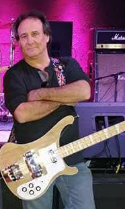
Ted Savas
Minutes
Our September meeting was our 446th. The meeting had 45
registrants and 36 participants. Our speaker
was Theodore P. “Ted” Savas, co-founder and
managing director of Savas Beatie publishing, a
publishing house that specializes in works on
the Civil War and other conflicts.
Mr. Savas, the son of Greek immigrants, spoke Greek before
English. He has loved history since he was a
child and got hooked on the Civil War after
reading Douglas Southall Freeman’s 3-volume work
entitled
Lee’s Lieutenants: A Study In
Command. He got a bachelor’s and a master’s degree in history,
practiced law for 13 years, and then went into
publishing. He is also a classical pianist and
has written books in seven languages.
Mr. Savas decided to start writing articles for magazines.
In 1990, he and David Woodbury co-founded Savas
Woodbury Publishers, which later became Savas
Publishing. They published a quarterly journal
entitled “Civil War Regiments Journal,” as well
as work on the Atlanta campaign. Mr. Savas
ended up selling his law practice and going into
publishing full time. He and the late Russel H.
Beatie founded Savas Beatie in 2004.
The Internet has killed most small, independent
publishers. But Savas Beatie adapted, producing
digital books and deciding to focus on the niche
Mr. Savas knows best--the Civil War. The
company does very well, although they work
endless hours.
Mr. Savas looks for something that hits him emotionally,
as well as something that contributes something
new--for example, looking at an old issue from a
new angle. He doesn’t like books that mainly
use secondary sources because they aren’t saying
anything new. Mr. Savas thinks that the golden
age of writing is today. There have been a
number of authors--Gordon Rhea, for example--who
have made original use of primary sources and
done amazing research and writing. Very few of
the older books, according to Mr. Savas, measure
up to the standards of today. Additionally,
it’s easier to find people today who are looking
for what you want to read.
With Savas Beatie, the number of maps in a book is
determined by the author. The company rarely
looks for people--the people come to Savas
Beatie and make submissions, which are handled
through the company website. Mr. Savas said
that writing is difficult. Moreover, some
people can write well but not research well, or
vice versa. Many submissions have to be
rejected. The company books many authors from
roundtables.
Savas Beatie has published the Bachelder papers, as well
as Ed Bearss’ trilogy on the Vicksburg
campaign. They’re also going to reprint
high-demand volumes of the Official Records--the
Gettysburg volume has already been reprinted.
In the last five months, the company has
reprinted about 35 books. The Gettysburg Papers
are going to be reprinted, as will the Carmen
Papers, which deal with the battle of Antietam.
Savas Beatie doesn’t look for fiction, but
nevertheless publishes some. Regimental
histories are harder to sell today, but
submissions will be considered.
Mr. Savas thinks that Savas Beatie should ignore the
current controversies about the Civil War and
keep on publishing what it has been publishing.
He doesn’t think that statues should be taken
down--he believes there should be more statues,
not less. He believes that the most
misunderstood campaign in the war is the
campaign for Charleston Harbor and would like to
see someone write a full history of that
campaign. He also believes that Beauregard and
Grant could use good biographies. For a
neophyte, Mr. Savas recommends Shelby Foote’s
3-volume trilogy to get a sense of the breadth
and scope of the war. He also recommends works
by Bruce Catton, Douglas Southall Freeman, and
Ed Bearss.
|
Notes from the President
September 2021
I am writing this on September 17, the 159th anniversary of the
Battle of Antietam. The battle remains and hopefully will
forever be, the bloodiest day in U.S. History. Counting both
sides, the casualty count for the action outside of Sharpsburg,
Maryland was 22,717 (dead, wounded or missing). This includes
3675 deaths. In comparison, the horrific attack on 9/11/01
witnessed a casualty count of 8977+ which includes 2977 deaths.
Following Antietam, Abraham Lincoln issued his preliminary
Emancipation Proclamation on September 22, 1862. Many historians
feel Lincoln’s action changed the directions of the war and the
nation.
Most of us learn the details of these and other events by
reading history books. Members of Civil War Roundtables are
probably among the most active readers of historically based
works. Savas Beatie Publishing and its co-founder and Managing
Director Ted Savas focuses on bring that history to the general
public Join us as Red Savas speaks to the BCWRT, via Zoom, on
Tuesday, September 28 at 7:30 p.m. Please register at:
https://us02web.zoom.us/meeting/register/tZcqduuuqTwoH9HCym4qw0dAiCIUR27cNCF9
Membership is vital to the Baltimore Civil War Roundtable. Like
oil in your car, when you run low, you run into problems.
We’ve been generating great attendance numbers over the past
years of Zoom presentations. We’ve been receiving positive
comments on those presentations. Unfortunately, our active
membership is much lower than our regular meeting participation.
Speakers cost. Zoom accounts cost. Your membership fees provide
the funding to make those things happen.
If you are a member who hasn’t renewed, please do so now. If you
are new, please join.
Annual dues
for the Baltimore Civil War Roundtable are $25.00 for
individuals and $35.00 for families. Please make checks payable
to: BCWRT and mail to: Ray
Atkins, 1204 Fordham Ct., Belair, MD 21014. You can find the
membership form in the membership portion of the webpage. Soon,
those who wish will be able to submit their dues on our website
using PayPal. Additionally, we urge all of you the spread the
word about the BCWRT. Most of you know, history can be fun as
well as informative.
|
Meeting: August 24, 2021
|
The Battle of Gettysburg was the largest battle
of the Civil War and resulted in the greatest
number of casualties. There were 23,049 United
States casualties and an estimated 23,000
-28,000. Dealing with those some 50,00 plus
wounded and dying belligerents was a monumental
task during and after the battle.
According to author
Ronald D. Kirkwood,
the farm of George Spangler was literally the
centerpiece of hospital activities at
Gettysburg. He will provide details of the
hospitals’ role when he speaks to the Baltimore
Civil War Roundtable on Tuesday, August 24,
2021, at 7:30 p.m.
Join the program
“Too Much for Human Endurance’: The George
Spangler Farm Hospitals and the Battle of
Gettysburg by
registering at in advance at:
https://us02web.zoom.us/meeting/register/tZApdu2trDguGdbAy4LgjraG-4Tc1Jy-hP2a
After registering, you will receive a
confirmation email containing information about
joining the meeting.
“Too Much for Human Endurance: The George
Spangler Farm Hospitals and the Battle of
Gettysburg,” which
was published by Savas Beatie LLC in hardcover
in June 2019. The book went into its second
hardcover printing in October 2019, and both
hardcover editions are now sold out. It was
published in paperback and audio earlier this
year.
Kirkwood is
retired after a 40-year career as an editor and
writer in newspapers and magazines including USA
TODAY, the Baltimore Sun, the Harrisburg
Patriot-News and the York Daily Record. He
edited national magazines for USA TODAY Sports
and was National Football League editor for USA
TODAY Sports Weekly. He won numerous state,
regional and national writing and editing awards
during his career and managed the 32-person copy
desk in Harrisburg when the newspaper won a
Pulitzer Prize in 2012. Kirkwood is
a Michigan native and graduate of Central
Michigan University, where he has returned as
guest speaker to journalism classes as part of
the school’s Hearst Visiting Professionals
series.
Kirkwood has
been a Gettysburg Foundation guide at the George
Spangler Farm Civil War Field Hospital Site
since it opened in 2013. He lives in York, Pa.,
with his wife of 45 years, Barbara.
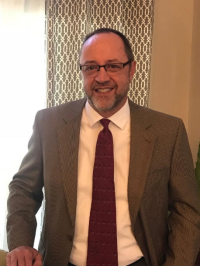
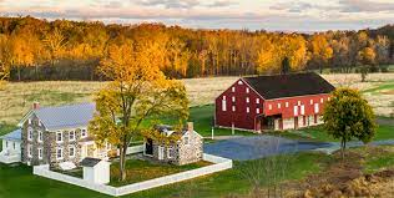
Ron
Kirkwood
The George Spangler Farm
Minutes
Our August meeting was our 445th. Our speaker
was Ron Kirkwood, a retired writer and editor.
Mr. Kirkwood spoke on the role of the Spangler
Farm in the Battle of Gettysburg. He is the
author of
Too Much for Human Endurance: The George Spangler Farm
Hospitals and the Battle of Gettysburg.
Mr. Kirkwood has also served as a Gettysburg
Foundation guide since 2013.
The Spangler Farm connected the Baltimore Pike
and the Taneytown Road. During the battle, the
Army of the Potomac’s V and VI Corps bivouacked
on the property, which was also host to the
Artillery Reserve. 19 artillery batteries were
on the farm. Among them was Battery A, First
Maryland Light Artillery, also known as Rigby’s
Battery, organized in Baltimore and Pikesville.
The batteries were often rushed to critical
points of the battle with only minutes to spare
before the Union lines broke.
On July 1, the first day of the battle, the
medical staff of XI Corps established a hospital
at the Spangler farm. George Spangler and his
family were ordered to either leave their home
or go to one bedroom of their house. They chose
the latter. The number of wounded being treated
peaked at an estimated 1,900 on July 4-5.
Surgeons worked night and day with little
sleep. One surgeon said that the work was “too
much for human endurance.” Mr. Kirkwood said
that amputated limbs--as well as wounds and
surgeries--attracted swarms of flies, and the
most gravely infected wounds caused a terrible
stench. The men were crammed so close together
in the barn that disease spread. For the first
several days, many wounded were forced to lie in
mud in the open.
In addition to the XI Corps hospital, on July
2-3 the 1st division of II Corps had a hospital
at the Granite Schoolhouse. Taken there were
those who had fought in the Wheatfield,
including members of the Irish Brigade.
Brigadier General Samuel K. Zook was taken
there. Mr. Kirkwood said you could see his
heart beating (Zook died of his wounds).
Colonel Edward Cross of the 5th New Hampshire
died there. The school was torn down in
1921--only the foundation remains today.
On the evening of July 3, Confederate Brigadier
General Lewis Armistead arrived at Spangler’s.
He attracted much attention. He was given
stimulants and painkillers, and died on July 5
in the summer kitchen. His roommate there was a
son of Harriet Beecher Stowe, author of
Uncle Tom’s Cabin.
According to Mr. Kirkwood, Armistead was one of
five Confederates known to have been buried at
Spangler (although he was later reburied in Old
Saint Paul’s Cemetery in Baltimore). Most
Confederates buried there remained until 1872,
when they were reinterred throughout the South.
Private George Nixon III of the 73rd Ohio--a
great-grandfather of President Richard
Nixon--died at Spangler.
A majority of XI Corps patients survived.
Captain Alfred E. Lee of the 82nd Ohio ended up
attending his own funeral! Many of the surgeons
who worked at Spangler went on to positions of
leadership after the war.
The Spanglers finally got their farm back on
August 7. After the war, they filed damage
claims against the U.S. government but ended up
receiving nothing or almost nothing. The
government said that it was “...no more
responsible for bringing on the battle fought
there than it would have been had a tornado
passed over that country causing as wide spread
destruction as did that terrible engagement…”
All four of George Spangler’s children became
productive adults. The Gettysburg Foundation
purchased the barn in 2008. Most of the wood in
the rebuilt barn was there in 1863.
|
Notes from the President
August 2021
First and foremost, I’d like to thank retired National Park
Service employee, re-enactor with the 54th Massachusetts
Volunteer Infantry, Co. B and veteran of the movie
Glory,
Mel Reid, for stepping in to do his ‘first person’ presentation
on “Private Mel Reid. From Plantation to Battlefield.” His
presentation was secured after our scheduled speaker, Prof.
Annette T. Khawane, had a medical emergency involving her
nonagenarian mother. (Mrs. Tyler should be out of the hospital
by the time this is published.)
Thanks also go to Co. B President Calvin Osbourne who provided
emergency technical assistance when Mr. Reid encountered
computer problems.
Join us on Tuesday, August 24, 2021, as the Baltimore Civil War
Roundtable follows journalist and author Ronald A. Kirkwood as
he explores Gettysburg via his work
“Too Much for Human Endurance: The George Spangler Farm
Hospitals and the Battle of Gettysburg,”
Kirkwood argues; “that the George Spangler farm was the most
important farm in the Battle of Gettysburg, revealing factors
that have been overlooked for generations. The book and his
presentation also offer newly found information about
Confederate Brig. Gen. Lewis A. Armistead’s time at Spangler,
the Spanglers, the Artillery Reserve and stories of the
suffering and heroism of the surgeons, nurses, wounded and
mortally wounded at the two hospitals on the Spanglers’ land.
Register in advance at:
https://us02web.zoom.us/meeting/register/tZApdu2trDguGdbAy4LgjraG-4Tc1Jy-hP2a
After registering, you will receive a confirmation email
containing information about joining the meeting.
Be on the lookout for a business meeting notification via Zoom.
We will have an overall update on the organization and get your
feedback.
Remember: Annual dues
for the Baltimore Civil War Roundtable are $25.00 for
individuals and $35.00 for families. Please make checks payable
to: BCWRT and mail to: Ray
Atkins, 1204 Fordham Ct., Belair, MD 21014. You can find the
membership form in the membership portion of the webpage. Soon,
those who wish will be able to submit their dues on our website
using PayPal. Additionally, we urge all of you the spread the
word about the BCWRT. Most of you know, history can be fun as
well as informative.
|
Meeting: July 27, 2021
|
The Merriam Webster Dictionary defines War as a
noun meaning “a
state of usually open and declared armed hostile
conflict between states or nations.” No matter
the outcome, wars will lead to injuries, deaths
and, inevitably, funerals. Conservative figures
list a combined
624,511 deaths from the Civil War (364,511 USA
and 260,000 CSA). This translates to thousands
of battlefield funerals and burials.
Prof. Annette Tyler Khawane returns
to the Baltimore Civil War Roundtable on
Tuesday, July to reveal some of the varied
funeral practices during the war.
This is a fitting follow up to
Prof. Khawane’s last
BCWRT presentation on Civil War era Dr. Thomas
Holmes, who is considered the ‘Father of Modern
Embalming. The meeting begins at 7:30 p.m.
Register in advance for this meeting:
https://us02web.zoom.us/meeting/register/tZMudOCuqjgrE9EmNFTtscmC1rqLk5piLXpn
Annette Tyler Khawane is a graduate of Baltimore
City public schools. She holds AA degree
from Catonsville Community College; BA degree
from Morgan State University; and MA degree from
The American University. She has been a licensed
mortician for over 20 years and a licensed
Massage Therapist for over a decade. She has
worked for various corporations in many
capacities from Senior Trainer, Senior Safety
Specialist; Sales Professional; Massage
Therapist and many Customer Service-related
positions. She is retired from FedEx after over
22 years of service. Since 2012, she has served
as an adjunct professor, teaching the embalming
lab for Catonsville Community College. She is
also a part-time instructor at the Baltimore
School of Massage and a Drivers' Education
Instructor for Williams Educational Services.
She has heart for teaching and believes every
day you create your own masterpiece.
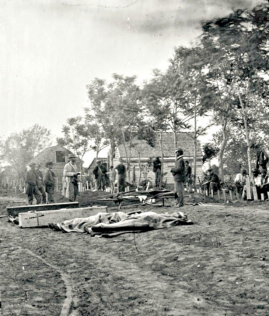
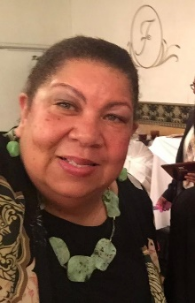
A photographer employed by Mathew Brady
Annette T. Khawane
made this image of the burial of Federal
dead in Fredericksburg, Va.,
probably on May 20, 1864. (Library of Congress)
Minutes
Our July meeting was our 444th. The meeting had
34 registrants and 25 participants.
Our speaker was Mel Reid. Mr. Reid is a retired
employee of the National Park Service and a
Civil War reenactor who portrays a soldier in
Company B of the 54th Massachusetts, the most
famous African American regiment to fight for
the Union in the Civil War. Mr. Reid also
served as an extra in the 1989 movie “Glory”
which deals with the 54th. In his presentation,
entitled “From Plantation to Battlefield,” Mr.
Reid presented himself as a man who joined and
fought in the 54th. He drew on the experiences
of several real-life soldiers to present the
story of the character he impersonated.
In his impersonation, Mel was born in the
mid-1830s on the Reid plantation in Reidsville,
North Carolina. His mother had been born in
Gambia and was taken to the United States on the
dreaded “middle passage.” She already knew
English when she arrived in the U.S. since she
came from an English-speaking country. Mel was
one of eleven children, and his father may have
been the master of the plantation. Mel was
required to work from sunrise to sunset and
hated the plantation. He escaped but was
recaptured and flogged. However, he later
escaped again, this time successfully. He
followed the North Star to Kentucky, and
subsequently to Ohio and freedom. He eventually
settled in Oberlin and started a blacksmith’s
shop, married and had four daughters. His wife
taught him how to read and write.
In 1863, Mel read about the Emancipation
Proclamation in a newspaper. The article
mentioned that the proclamation opened the door
for African Americans to join the Union Army.
But the governor wouldn’t allow blacks to
enlist. However, the governor of Massachusetts
did. Mel went there and heard Frederick
Douglass speak. Douglas said: “No man is free
until everyone is free.” Mel subsequently became
a private in the 54th Massachusetts. After a
couple of months of training, the 54th paraded
through Boston, boarded the steamer
De Molay and
sailed to Georgia. They burned the town of
Darien, returned to the area around Charleston,
S.C., and successfully fought the Confederates
on July 16, 1863. The following day, they
attacked Battery Wagner on Morris Island. They
were unsuccessful but proved that African
Americans can fight. The 54th’s colonel, Robert
Gould Shaw, was killed in the attack. Wagner
was finally taken by siege on September 7.
In February 1864, the 54th sailed to
Jacksonville, Fl. and from there marched to
Olustee Station. On February 20, the regiment
participated in the battle of Olustee. The
battle was a Union defeat. During the retreat,
the regiment loaded dead and dying soldiers on a
train and manually pulled the train a long
distance. In April, the 54th returned to the
Charleston area. The regiment went on to fight
in a few more battles including Honey Hill,
where it fought alongside the 55th
Massachusetts, another African American
regiment. At the end of the war, Mel was faced
with the choice of whether to muster out and
return home or to stay in the military.
In real life, Mr. Reid’s family actually was
from Reidsville, North Carolina, and he is a
descendant of the owner of the plantation.
At the end of the war, there were more African
Americans in blue than whites in gray.
|
Notes From the President July 2021
“Summertime, and the living is easy.” DuBose Heyward, with
musical assistance from George Gershwin, wrote these words in
the early 20th Century.
One wonders if he would have expressed the same sentiment if he
was wearing wool from head to toe and baking in the hot sun on a
Virginia battlefield (or dealing with our current
record-breaking heatwave)?
It was the heat, disease, wounds, accidents, battle injuries and
non-battle injuries that caused the deaths of infantryman,
cavalrymen, and sailors between 1861 and 1865. Some
624,511 deaths resulted in thousands and thousands of funerals
and burials. Some funerals involved massive amounts of people
being interned into mass battlefield graves. Some were fortunate
to be sent home to be received by family and friends for
services in their residential communities. Many others were
something in between the aforementioned scenarios.
Join the Baltimore Civil War Roundtable (BCWRT) on Tuesday, July
27 at 7:30 p.m., as we host Prof. Annette T. Khawane in a Zoom
presentation examining funeral practices during the Civil War.
Please register in advance for this meeting:
https://us02web.zoom.us/meeting/register/tZMudOCuqjgrE9EmNFTtscmC1rqLk5piLXpn
Like you, we are monitoring the overall situation with the
ongoing pandemic. No decision has been made about when we will
resume live meetings. When we do, it will be a combination of
live and virtual meetings. Later this summer, you will receive a
survey to help us better determine that decision.
Below, you will find a copy of the certificate we received from
the National Civil War Museum in Harrisburg, Pa. It notes the
purchase of a Commemorative Brick in honor of Bob Mullauer. The
actual brick will be installed in the fall.
Remember: Annual dues
for the Baltimore Civil War Roundtable are $25.00 for
individuals and $35.00 for families. Please make checks payable
to: BCWRT and mail to: Ray
Atkins, 1204 Fordham Ct., Belair, MD 21014. You can find the
membership form in the membership portion of the webpage. Soon,
those who wish will be able to submit their dues on our website
using PayPal. Additionally, we urge all of you the spread the
word about the BCWRT. Most of you know, history can be fun as
well as informative.
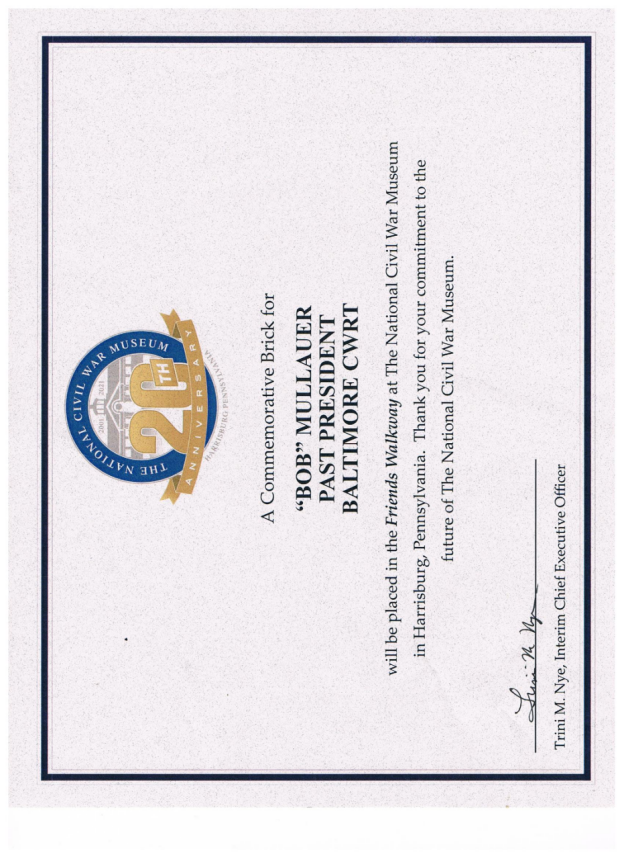
|
Meeting: June 22, 2021
|
Ask most Civil War buffs who were the 10 people
the United States government ultimately selected
as the conspirators in the plot to assassinate
President Lincoln, they would struggle to name
them all.
John Wilkes Booth’s name immediately comes to
mind. Those who were tried, convicted and
executed for their roles (Lewis Powell, Mary
Surratt, David Harold and George Atzerodt) are
also easily recalled, along with Dr. Samuel
Mudd. With cogitation, John Surratt, Samuel
Arnold and Michael O’Laughlen can be named.
Still, who was that 10th person?
Join the Baltimore Civil War Roundtable (BCWRT)
on Tuesday, June 22, 2021, as historian
Bob Bowser investigates
the life of York, Pa. native and former
Baltimore resident
Edmund “Ned” Spangler.
A carpenter by trade, was
the only conspirator sentenced to just 6 years
of hard labor. The Zoom presentation begins at
7:30 p.m. Register at
https://us02web.zoom.us/j/83204853684?pwd=SG1WMUdXeEZVSWpMSkFxMTducGJYdz09
Bob Bowser is
a high school history teacher at Henry E. Lackey
High School, located in Charles County,
Maryland.
Bob holds
a BS in Education and an MA in History. His main
areas of research are the American Civil War and
the Lincoln Assassination. For the last 13
years,
Bob has
been a tour guide at the Dr. Samuel A. Mudd
House Museum. He has been a member of the board
of directors of the Dr. Samuel A. Mudd Society
for the last five years and is currently serving
as the acting president of the Dr. Samuel
A. Mudd Society.
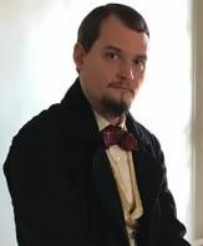
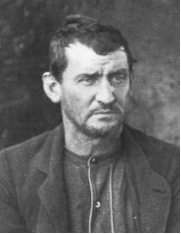
Bob Bowser
Ned Spangler
Our June meeting was our 443rd. The meeting had 50
registrants and 50 participants.
Minutes
Our speaker was Bob Bowser, a historian and tour guide at
the Dr. Samuel A. Mudd House Museum. Mr. Bowser
spoke on the life of Edmund “Ned” Spangler.
Spangler was born in York, Pennsylvania. His ancestors
were involved in the founding of York and
participated in the Revolutionary War. However,
his own beginnings were humble. He was born on
August 10, 1825, one of seven children. His
family belonged to the German Reformed Church.
As he matured, he found a spark from Theodore
Jacobs, a carpenter. After his father suffered
a crippling accident, Spangler moved to
Baltimore to support the family. He became
associated with James Johnson Gifford.
Beginning in 1853, Spangler did carpenter work
for theaters in Baltimore and Washington DC.
Gifford got Spangler to help build Tudor Hall,
the summer home of John Wilkes Booth’s family.
He was also employed as a stagehand by John
Ford.
In Baltimore, Spangler was by no means a “loner.” He was
known as a “good-natured drudge.” On August 29,
1858, he married Mary Brasheare. In 1864, Mary
died and Spangler began to change, becoming an
alcoholic. However, he remained a dutiful
worker. A stalwart Democrat, Spangler was a
member of the American Order, a derivative of
the Knights of the Golden Circle. During the
Civil War, he was very pro-Confederate. He was
also one of a group of carpenters selected by
Gifford to renovate what is now known as Ford’s
Theatre.
The night of the Lincoln assassination, Spangler was
working as a stagehand at Ford’s Theatre. He
removed a partition so Lincoln could feel more
comfortable. Later in the evening, Spangler was
asked by John Wilkes Booth to hold his mare for
10-15 minutes. He held the mare for a few
minutes and then asked someone else to do it.
According to Spangler himself, he heard the
shot fired that killed Lincoln and then saw a
man running across the stage and out the exit on
the left-hand side, but he didn’t know who it
was. When a coworker, Jacob Rittersbach, said
that he saw Booth escape, Spangler slapped
Rittersbach and told him to shut up because he
didn’t know anything.
Spangler walked off in the rain, but later returned to the
theater, suggesting that he had not been part of
the conspiracy. However, he was later picked up
on suspicion of having been involved. Rope was
found in a bag of his, and he was deemed
responsible for keeping the passageway clear
that Booth used to escape. From mid-April to
mid-June 1865, he was shackled and had a hood
placed on him. He and the other accused
conspirators were poorly fed as well. Spangler
had an excellent lawyer, and the prosecution had
little evidence against him. But he was
convicted, partly because Rittersbach was
intimidated into saying things against him.
However, Spangler was only convicted of aiding
and abetting, not conspiracy. He was sentenced
to six years of hard labor on the Dry Tortugas
off the coast of Florida.
Spangler proved to be an industrious prisoner, making
money to buy better rations. He also nursed Dr.
Samuel Mudd back to health during a yellow fever
epidemic. On March 1, 1869, President Andrew
Johnson pardoned Spangler. Spangler returned to
Baltimore and worked for John Ford again. In
1873, he left Baltimore and settled on the Mudd
farm in Charles County, where he did carpenter
work. On February 7, 1875, Spangler died.
Having converted to Catholicism, he was buried
in a cemetery connected with St. Peter’s Church
near the Mudd farm.
|
Notes from the President June 2021
“Everything must Change. Nothing stays the same” These are the
opening words and title to a haunting and meaningful Bernard
Ighner composition released on Quincy Jones’ 1974 album
Body Heat.
Those words came to mind because, when writing this column two
years ago, I referred to the upcoming June 2019 lecture on the
Emancipation Proclamation and the 13th Amendment
of the Constitution presented by our former President Charles
“Bob” Mullauer. Many of you are already aware that Bob died in
his sleep on May 18.
Just over a week before his passing, Bob and I had a phone
conversation in which we talked about BCWRT membership and our
future. He expressed his pleasure with the quality and variety
of our speakers. I must say, I always gained knowledge from our
many talks throughout the years.
I am proud to report to you that the Executive Committee of the
BCWRT (officers and board members) unanimously decided to and
have purchased, a brick in Bob’s honor on the Walkway of the
National Civil War Museum in Harrisburg, Pa. The brick, which
will be installed in the fall, will read:
“BOB” MULLAUER
PAST PRESIDENT
BALTIMORE CWRT
I like to again thank all of our members who have positively
responded to my membership phone calls I also like to thank
those who have connected with us, via Zoom, and have become new
members. THANK YOU AND ASK YOUR FRIENDS TO JOIN!
|
Meeting: May 25, 2021
|
If April Showers bring May Flowers, what do
Mayflowers bring? Pilgrims!! OK, Ok! Bad old
joke and wrong time period. However, many
significant events occurred in May during the
Civil War.
Among the early events was Lincoln’s call for
volunteers to join the Union Army for three-year
terms, Arkansas, Tennessee, North Carolina and
Virginia moving to secede; the occupation of
Baltimore; the CSA decision to move the
Confederate capital from Montgomery, Alabama to
Richmond, Virginia and the death of
Zouave leader Elmer Ellsworth in Alexandria, Va.
at the hands of James W. Jackson.
May 15, 1862, saw the launch of a ship named
Enrica.
Quickly renamed
Alabama, this
British made raider was one of the few CSA
shipped that terrorized US ships throughout the
war. All were the results of the efforts of
CSA Secretary of the Navy
Stephen Mallory.
Join the Baltimore Civil War Roundtable at 7:30
p.m. on May 25, 2021 as author/historian
William S. Connery focuses
on the career of
Stephen Mallory in
a Zoom presentation.
William Connery grew
up in Baltimore, Maryland near Patterson Park.
He shares the same January 19th birthday
as Edgar Allen Poe and Robert E. Lee. He has a
degree in history from University of
Maryland–College Park.
Mr. Connery has
contributed to the Civil War Courier,
the Washington Times Civil War page and other
publications. In 2012, he was awarded the
prestigious Jefferson Davis Historical Gold
Medal for his first History Press book, Civil
War Northern Virginia 1861.
Register in advance at https://us02web.zoom.us/meeting/register/tZ0sc-urrDwqGNJCQl-fpBqw47863AyE3ura
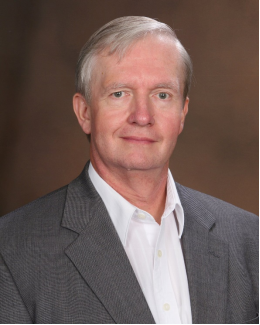
William
S. Connery |
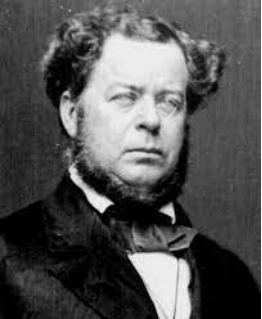
Stephen Mallory |
Our May meeting was our 442nd. The meeting had 35
registrants and 30 participants.
Our speaker was William S. Connery. A native of
Baltimore, Mr. Connery spoke on
Rebel Raiders on the High Seas:
The CSS Florida, Alabama & Shenandoah.
Mr. Connery began by discussing Stephen R. Mallory, who
throughout the Civil War served as the
Confederate Secretary of the Navy. Mallory was
born in Trinidad around 1811-13. In 1820, he
moved with his family to Key West, Florida. A
Roman Catholic, Mallory served as a U.S. senator
from Florida from 1851 until the state seceded
from the Union in 1861. During his time in the
Senate, he became chairman of the Senate
Committee on Naval Affairs.
As Secretary of the Navy, Mallory created a four-point
plan for the Confederate Navy:
1. Send out commerce raiders to destroy the enemy’s
mercantile marine.
2. Build ironclads in Southern shipyards for defensive
purposes.
3. Obtain by purchase or construction abroad armored ships
capable of fighting on the high seas.
4. Employ new weapons and techniques of warfare.
The CSS
Florida
was built by a British firm in Liverpool. Often mistaken
by Union forces for the CSS
Alabama, the
Florida
had two smokestacks (unlike the
Alabama, which had one). The subject of much diplomatic
correspondence, she was commissioned on August
17, 1862. During this period, yellow fever
decimated the crew.
Beginning in January 1863,
Florida spent six months off the coast of North and South America
and the West Indies, making many captures. On
October 7, 1864, the ship was captured in Bahia
Harbor (Brazil) by the USS
Wachusett and sent to the U.S. as a prize. The commander of the
Wachusett
was convicted of violating Brazil’s sovereignty, but Union
Secretary of the Navy Gideon Welles set aside
the verdict. On November 28, 1864,
Florida
was sunk under dubious circumstances after colliding with
the U.S. Army Transport
Alliance. During her career, she captured 37 prizes.
The construction of the CSS
Alabama
was arranged by James Bulloch, an uncle of future U.S.
President Theodore Roosevelt. The
Alabama
was built secretly in 1862. British neutrality law allowed
a ship to be built as an armed vessel as long as
it wasn’t armed until after it left British
territorial waters. Under Rafael Semmes, the
Alabama
traveled through the Gulf of Mexico (where she managed to
sink the USS
Hatteras, which she tricked by flying the Union Jack), the
Caribbean, and the Atlantic. The
Alabama
also sailed around the Cape of Good Hope (being refitted
in Cape Town) and reached Singapore in 1864. On
June 11, 1864, the ship arrived at the port of
Cherbourg, France. Eight days later, she was
sunk by the USS
Kearsage. During her career, the
Alabama
captured or burned 65 Union merchant ships and boarded
almost 450.
The
Alabama
was replaced by the CSS
Shenandoah. The
Shenandoah
traveled to the Bering Sea in the Arctic, where she did
great damage to American whaling from which the
whaling industry never recovered. Learning in
August 1865 that the war had ended, the ship
arrived in Liverpool on November 6 and
surrendered to the British.
In 1869, the U.S. sought “Alabama Claims” from Britain. Britain eventually paid $15.5
million--the equivalent of $325 million today.
After the war, Stephen Mallory was imprisoned but was
paroled by President Andrew Johnson in 1866. He
returned to Florida, where he practiced law and
wrote opinion letters to newspapers. His health
began to deteriorate, although he was not
incapacitated until almost the very end. He
died on November 9, 1873.
|
Notes from the President
May 2021
The old commercial line says, “Membership has its privileges”.
The key to any group like the Baltimore Civil War Roundtable
(BCWRT) is members. Judging by all the positive comments we have
been receiving about our Zoom presentations, most of you enjoy
the privilege of knowledge and exposure garnered via our monthly
meetings.
There is only one problem! Membership
is down for the current year. Since BCWRT annual dues allows us
to engage our speakers and, where appropriate, make donations to
Civil War preservation, the effects of the reduced membership
can be severe!
Some of you have simply forgotten to mail in your renewals since
you are used to providing a check at the in-person meetings.
Some of you have experienced problems with the U.S. Postal
Service- which are being corrected.
I have spoken to some members in order to clarify status and
correct any errors. I will continue to connect with you.
Whether you have allowed your membership to lapse or have never
actually been a member, the BCWRT is urging all to be active. We
welcome both new and old members! Yearly membership is $25.00
for individuals and $35.00 for families. Simply use the link
below to print the form and mail your check to our Treasurer Ray
Atkins. We hope to allow electric payments soon.
https://bcwrt.nalweb.net/join_bcwrt.htm
Your actions will allow the BCWRT to continue its stated purpose
of providing
a forum in which to discuss and evaluate various aspects of this
unique period of American History. Please
look at our list of upcoming events to discover the current
schedule of activities for the next 12 months.
|
Meeting: April 27, 2021
|
The Baltimore Civil War Roundtable (BCWRT)
continues 2021 by hosting Zoom presentation on
Tuesday, April 27 at 7:30 p.m.
Please join us on April 27, at 7:30 p.m. as
Dr.
Pamela Toler,
author of
“Heroines of Mercy Street: The Real Nurses of
the Civil War”
tells theirs stories in
"From Unwanted to Indispensable: The Real Nurses
of the Civil War".
Armed with a PhD in history, a well-thumbed deck
of library cards, and a large bump of curiosity,
author, speaker, and historian,
Pamela D. Toler translates
history for a popular audience. She goes beyond
the familiar boundaries of American history to
tell stories from other parts of the world as
well as history from the other side of the
battlefield, the gender line, or the color bar.
Toler is the author of eight books of popular
history for children and adults.
Dr. Toler’s books
include:
Women Warriors: An Unexpected History;
Heroines of Mercy Street:
The Real Nurses of the Civil War;
Mankind: The Story of All of Us
and
The Everything Guide to Understanding Socialism.
Her work has appeared in Aramco
World, Calliope, History Channel Magazine, MHQ:
The Quarterly Journal of Military History and Time.com.
Register (limited to 100) in advance for this
meeting:
https://us02web.zoom.us/meeting/register/tZMkceqvqjgiGdTcZ2Vfy1_RfiRl1NDnuPzj
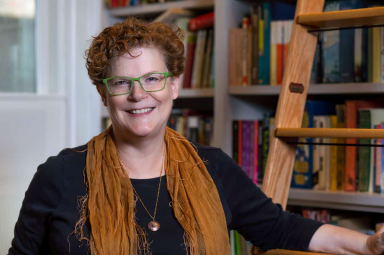

|
Notes from the President April 2021
The month of April had a significant impact on the Civil
War. There were 5 very historical Aprils during the period from
1861 to 1865.
April 12, 1861 saw the start of the war with the attack on
Fort Sumter in Charleston Harbor, South Carolina. It continued
with the first armed conflict’ casualties as groups of United
States soldiers moved through Baltimore, Md. April 18/19.
1862 saw the April 6/7 Battle of Shiloh, along with the
April 25 fall on New Orleans and the beginning of the Siege of
Yorktown. A year later, April of 1863 saw the beginning of the
Vicksburg Campaign and the opening of the Battle of
Chancellorsville.
The Battles of Sabine Crossroads (4/8), Pleasant Hill
(4/9) Ft. Pillow (4/12) and Poison Springs (4/18) are just a few
of the actions from April 1864.
So much happened in April 1865 (including Lincoln’s
assassination, Appomattox Courthouse and Bennett Place) that Jay
Winik wrote
April 1865: The Month that Saved America. If you have not read the book or seen the related
History Channel documentary, it would be worth your time.
While not confined to a single month, our April zoom will
focus on the year-round work of the thousands of women who
served as Civil War nurses. Please join us on April 27, at 7:30
p.m. as
Pamela Toler,
author of
“Heroines of Mercy Street: The Real Nurses of the Civil
War”
tells theirs stories in "From Unwanted to Indispensable: The
Real Nurses of the Civil War". Register at
https://us02web.zoom.us/meeting/register/tZMkceqvqjgiGdTcZ2Vfy1_RfiRl1NDnuPzj
Reminder: Annual dues
for the Baltimore Civil War Roundtable are $25.00 for
individuals and $35.00 for families. Please make checks payable
to: BCWRT and mail to: Ray
Atkins, 1204 Fordham Ct., Belair, MD 21014. You can find the
membership form in the membership portion of the webpage. Soon,
those who wish will be able to submit their dues on our website
using PayPal. Additionally, we urge all of you the spread the
word about the BCWRT. Most of you know, history can be fun as
well as informative.
|
Meeting: March 23, 2021
|
The
Baltimore Civil War Roundtable (BCWRT) continues
2021 by hosting Zoom presentation on Tuesday,
March 23 at 7:30 p.m.
We are fortunate to have historian, author,
professor and retired US Army
General Dr. Ty Seidule as
our presenter for our March meeting.
Seidule,
Chairman Emeritus of the History Dept. at West
Point, has touched off a historical firestorm
with his new book;
“Robert E. Lee and Me: A Southerner’s Reckoning
with the Myth of the Lost Cause.”
A native of Alexandria, Virginia,
Ty Seidule was
brought up to revere Robert E. Lee. Seidule once
believed that the Confederates were romantic
underdogs who lost the American Civil War with
honor. In his book,
Seidule deconstructs
the Lost Cause narrative, discusses his former
hero Lee and details how he came to understand
that the Southern states went to war to protect
and expand slavery.
Prof. Seidule taught
for two decades at West Point. He served in the
U.S. Army for thirty-six years, retiring as a
brigadier general. He is the Chamberlain Fellow
at Hamilton College as well as a New America
Fellow. He has published numerous books,
articles, and videos on military history
including the award-winning West
Point History of the Civil War.
He graduated from Washington and Lee University
and holds a PhD from the Ohio State University.
Register (limited to 100) in advance for this
meeting:
https://us02web.zoom.us/.../tZwtf-iqqjwuEtYYZUKd...
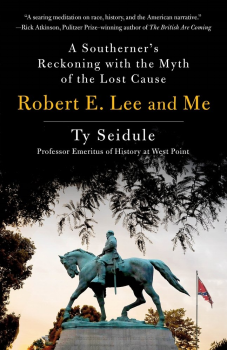 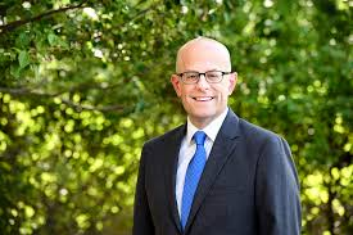
Our March meeting was our 440th. The meeting had 88
registrants and 76 participants.
Our speaker was Ty Seidule. Seidule, a retired U.S. Army
general and Department Chair Emeritus of the
history department at West Point, is the author
of the recently published book entitled
Robert E. Lee and Me: A
Southerner’s Reckoning with the Myth of the Lost
Cause.
As he explained in his presentation, Seidule’s opinion of
Lee has undergone a remarkable transformation.
He has gone from idolizing Lee to being
severely critical of him. As a child, he
learned “Dixie” before “The Star-Spangled
Banner.” He read books like “Meet Robert E.
Lee” and “Gone with the Wind.” As a result, he
saw Lee in an extremely favorable light.
Seidule’s early sources of information about Lee reflected
what is known as the “Myth of the Lost Cause.”
This was a series of ideas that became
extremely popular among white Southerners in the
decades after the Civil War and became widely
accepted outside of the South as well. The Lost
Cause myth said that the Union only won the war
because of superior numbers, resources, and
money, that Ulysses S. Grant was a “butcher” who
callously sacrificed his soldiers, that
Confederate soldiers were the best, ever, that
Lee was one of the greatest men of all time, and
that Reconstruction was a failure.
Additionally, the myth said that slavery was
not the cause of the war, and that slaves--at
least on the whole--were happy.
The Lost Cause myth, according to Seidule, became a basis
for white supremacy. Seidule described the
South he was born into as a “racial police
state.” His hometown was Alexandria, Virginia.
Until 1846, Alexandria was part of Washington
DC. The city left DC to protect its
participation in the slave trade. Seidule
attended Robert E. Lee Elementary School. The
school was named after Lee in 1961, and Seidule
said this was done to protest racial
integration. Seidule and his family later moved
to Monroe, Georgia. In 1946, the area around
Monroe was the site of the last mass lynching.
Today, far from viewing Lee as a hero, Seidule sees him as
a traitor to America. In his presentation,
Seidule argued that Lee chose treason as defined
in the Constitution (the Constitution’s
definition includes “levying war” against the
United States) and violated the oath he took as
a U.S. Army officer. Contrary to the common
belief that such a course of action was
inevitable on Lee’s part given that he was a
Virginian, Seidule said that of the eight
colonels from Virginia in the army when the war
began, Lee was the only one who did not remain
loyal to the Union. According to Seidule, he
chose the Confederacy because he believed in
slavery--the reason why the Confederate states
had seceded from the Union.
Seidule said that from 1861 to 1902, Confederates were
seen by the army as traitors. In subsequent
decades, commemorations of Lee appear to have
coincided with resistance to civil rights for
African Americans. The army itself was white
supremacist and did not see African Americans as
equals. It honored Confederates, Seidule said,
as a way of bringing white Americans together.
Unlike his parents-in-law, Lee broke up slave families.
After the war, he was opposed to equality for
African Americans, and said that he hoped that
Virginia “could get rid of them.”
Seidule has come to not only strongly dislike Lee, but to
be opposed to monuments and other commemorations
of him and other Confederates. In particular,
he hates the Confederate monument at Arlington
National Cemetery.
|
Notes from the President - March 2021
March 2021 marks the 160th Anniversary
of the forced resignation of Sam Houston as Governor of Texas,
the inauguration of Abraham Lincoln as President of the United
States of America and the continued rapid descent into a war
that tore the nation apart. Truly, there was nothing “civil”
about the war of the rebellion.
The US is currently ‘at war’ with a disease that has killed over
503,000 in just over a year compared to approximately 620,000
killed between 1861 and 1865. Therefore, we will continue to
host meetings, via Zoom, for the foreseeable future. When
feasible, we will move to combine our online presentations with
those done in person.
I urge all of you to register early for our March 23 Zoom
presentation featuring General Ty Seidule (ret.) reflecting on
his newly published book
“Robert E. Lee and Me:
A Southerner's Reckoning with the Myth of the Lost Cause.”.
This book has been receiving massive coverage from the national
press due to controversial and critical look at Robert E. Lee
and emergence of the Lost Cause approach to history.
Ty Seidule grew up revering Robert E. Lee. From his southern
childhood to his service in the U.S. Army, every part of his
life reinforced the Lost Cause myth: that Lee was the greatest
man who ever lived, and that the Confederates were underdogs who
lost the Civil War with honor. Now, as a retired brigadier
general and Professor Emeritus of History at West Point, his
view has radically changed. From a soldier, a scholar, and a
southerner, Ty Seidule believes that American history demands a
reckoning.
Space is limited to 100 participants; therefore, register early.
Reminder: Annual dues
for the Baltimore Civil War Roundtable are $25.00 for
individuals and $35.00 for families. Please make checks payable
to: BCWRT and mail to: Ray
Atkins, 1204 Fordham Ct., Belair, MD 21014. You can find the
membership form in the membership portion of the webpage. Soon,
those who wish will be able to submit their dues on our website
using PayPal. Additionally, we urge all of you the spread the
word about the BCWRT. Most of you know, history can be fun as
well as informative.
|
Meeting: February 23, 2021
|
The Baltimore Civil War Roundtable (BCWRT)
continues 2021
by hosting
Zoom presentation on Tuesday, February 23 at
7:30 p.m.
Our
speaker will be historian, author, attorney and
reenactor
Bernie Siler. Mr. Siler,
who last addressed our roundtable in 2015, will
focus on his latest work:
Parallel Lives: A Tale of Two Centuries.
Using the idea that history repeats itself,
Siler,
who grew up one block from the historic Fort
Stevens, makes a decade-by-decade comparison of
events from the 1850’s and 1860’s with events
from the 1950’s and 1960’s. Two examples are the
hoop craze of the 1850’s and the Hula Hoop of
the 1950’s along with the assassinations of
Presidents Lincoln and Kennedy.
Siler combines
these facts with personal antidotes of his life
during the mid-twentieth century.
Bernie Siler,
a former prosecutor for the District of
Columbia, is currently a criminal defense lawyer
in private practice and a Civil War Historian.
He is originally from Washington, D.C. and
received undergraduate and law degrees from the
Universities of Dayton and Cincinnati,
respectively. He teaches at Montgomery College
in the areas of Real Property Law and Civil
Litigation. You can see some of his historical
presentations brought to life in various Civil
War reenactments that his 54th Massachusetts
Volunteers participates in as well as roles in
the motion pictures "JOHN ADAMS", "GLORY",
-"TAD", "APRIL,1865" and the TNT production
"ANDERSONVILLE".
Mr. Siler was
also featured as an expert in the documentary
that accompanied the motion picture, "The
Conspirator".
Register at:
https://us02web.zoom.us/meeting/register/tZAqcuqorj4sG90j9XdkTOq2IWlQLI-Nh4TU
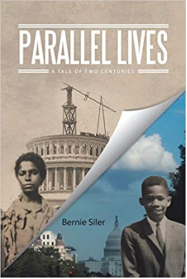
Minutes
Our February 23 meeting was our 439th. The meeting had 45
registrants and 34 participants. Our speaker
was Bernie Siler, a lawyer, author, historian,
and Civil War reenactor. Mr. Siler discussed
his book entitled
Parallel Lives: A Tale of Two
Centuries.
Mr. Siler grew up in a house near Fort Stevens in
Washington DC. The fort was the site of a Civil
War battle on July 11-12, 1864. Mr. Siler said
that during the battle, Union troops were
actually at the place where the room from which
he gave the presentation is located today.
Growing up in the 1950s and 60s, Mr. Siler became
fascinated by the Civil War period. As a child,
he found a book in Takoma Library called “Twenty
Days” which dealt with the Lincoln
assassination. He was intrigued by the
photographs and thought that if not for an
accident of birth, he could have lived during
that time. He began to imagine a parallel
version of himself who actually
did
live in the 1850s and 60s and wanted to know how life then
differed from the world he knew a century later.
This was the seed from which
Parallel Lives
came into being.
The book compares the Washington DC of the mid-nineteenth
century with that of the mid-twentieth century.
In his presentation, Mr. Siler compared the two
periods in several specific areas: Mundane
Things, Family Life, Travel, Music Lessons, City
Life and Culture, Court Cases, and Being African
American.
Mr. Siler found some intriguing parallels between the two
eras. For example, in both periods Washington
had baseball teams called the Nationals (the
Nationals of the mid-twentieth century were
informally--and formally between 1956 and
1960--known as the Senators). Washington
Nationals teams in both centuries had players
whose last name was Mincher (Ed Mincher in 1872,
and Don Mincher from 1960 to 1966, the period
when the Senators became the Minnesota Twins).
During the 1850s, there was the “Hoop and
Stick” game; in the 1950s there was the “Hula
Hoop.”
Mr. Siler discussed Washington’s “bad neighborhoods”
during both periods. During the Civil War era,
these included Murder Bay, Prather’s Alley, and
The Island. The last mentioned was literally an
island because a canal cut it off from the rest
of the capital. According to Mr. Siler, Murder
Bay was so dangerous that even soldiers were
warned not to go there. It was home to many
brothels and sleazy saloons. During the 1950s
and 60s, the “bad neighborhoods'' included
Anacostia and Deanwood.
In 1861, there was an enemy regime (the Confederate
government) across the Potomac, in 1961, there
was one across the Caribbean (Fidel Castro’s
government in Cuba). Both years saw U.S.
debacles against those foes--the Battle of Bull
Run in 1861 and the Bay of Pigs invasion in
1961. The Civil War witnessed a race for air
power--the Union Army Balloon Corps, established
by Thaddeus S.C. Lowe, built balloons for
reconnaissance purposes. The 1960s witnessed a
race for space power.
Between the mid-nineteenth and the mid-twentieth
centuries, the African American presence in
Washington greatly increased. In 1860, the
total population of the capital was about
75,000, about 80% of whom were white (although
slavery was still legal, most African Americans
in the capital were free). In 1960, the
population (not including the metro area) was
more than 760,000, about 55% of whom were
African Americans. Many former slaves moved to
Washington. During the century after the Civil
War, the capital’s African American population
increased as part of the large-scale migration
of African Americans out of the South.
|
Notes from the President
It is February 2021, which marks a full year since we have
held an in-person meeting. Thank goodness we are studying the
mid-19th Century in the 21st Century. Neither Presidents Lincoln nor Davis could
communicate using Zoom.
The BCWRT has made a $150.00 donation to the American
Battlefield Trust in honor of the late Edwin Cole Bearss, the
late Historian Emeritus of the National Park Service. ‘rock
star’ of the Civil War community and great friend of our
roundtable. The contribution abides by the request of the
Bearss’ family. Additionally, we have made a $50.00 contribution
to the Friends of the Public Garden in Boston, Massachusetts in
support of the restoration of the Robert Gould Shaw and the
Massachusetts 54th Regiment Memorial. Last month’s speaker Dr. Chandra
Manning requested the donation in lieu of a fee.
In a Zoom Board meeting on February 6, it was decided to
postpone the April’s Annual Banquet to a date that will be
determined. This was done in cooperation with the Columbus
Gardens and Kevin Levin, our speaker. A Zoom presentation for
April will be announced, soon.
Currently, we will continue to host Zoom meetings, due to
the pandemic. Since we have attracted the interest of many
people outside of our immediate area, we will figure out a
method to continue the online presentations after we return to
in person meetings.
Annual dues
for the Baltimore Civil War Roundtable are $25.00 for
individuals and $35.00 for families. Please make checks payable
to: BCWRT and mail to: Ray
Atkins, 1204 Fordham Ct., Belair, MD 21014. You can find the
membership form in the membership portion of the webpage. Soon,
those who wish will be able to submit their dues on our website
using PayPal. Additionally, we urge all of you the spread the
word about the BCWRT. Most of you know, history can be fun as
well as informative.
|
Meeting: January 23, 2021
|
The
Baltimore Civil War Roundtable (BCWRT) will
start 2021 by hosting two Zoom presentation
during the month of January.
If you were with us in December, you know
Dr. Andy Waskie had
so much information during “Meet
General Meade: Victor of the Battle of
Gettysburg” that
he did not have time to finish. Therefore, Prof.
Waskie will cover Meade’s life after Gettysburg
until his death in a
special presentation on Tuesday, January 19, at
7:30 p.m.
Our regular monthly presentation will feature
history professor and author,
Chandra M. Manning PhD.
as she discusses the
relationship between African Americans and the
federal government forged in the contraband
camps, which were refugee camps for escaped
slaves, via
her book,
“Troubled Refuge:
Struggling for Freedom in the Civil War.” This
Zoom meeting will occur on Tuesday, January 26,
at 7:30 p.m.
Dr. Chandra Manning,
a native of Binghamton, New York, attended Mount
Holyoke College where she received her B.A. summa
cum laude,
in history. She then attended the National
University of Ireland, Galway where
she received an M. Phil in Irish
history and literature.
She would later go on to receive her Ph.D. in
History from Harvard.
Dr. Manning teaches U.S. history, chiefly of the
19th century, including classes on the Civil
War, slavery and emancipation, Lincoln,
citizenship, the American Revolution, and the
History of Baseball (not necessarily in that
order). She began teaching at Georgetown in
2005, took leave to serve as Special Advisor to
the Dean of the Radcliffe Institute for Advanced
Study at Harvard University from 2015-2017 and
returned to Georgetown full time in the fall of
2017.
Her first book, What
This Cruel War Was Over: Soldiers, Slavery, and
the Civil War (Knopf,
2007) won the Avery O. Craven Prize awarded by
the Organization of American Historians, earned
Honorable Mention for the Lincoln Prize and the
Virginia Literary Awards for Nonfiction, and was
a finalist for the Jefferson Davis Prize and the
Frederick Douglass Prize.
Manning’s second
book, Troubled
Refuge: Struggling for Freedom in the Civil War (Knopf,
2016), about Civil War refugee camps where
former slaves allied with the Union Army and
altered the course of the war and of
emancipation, won the Jefferson Davis Prize
awarded by the American Civil War Museum for
best book on the Civil War. Eventually she
intends to write something that would qualify
for a prize not named for a dead Civil War
president.
A former National Park Service Ranger, she has
also advised historical sites, museums, and
historical societies, as well as community
groups in search of historical perspective.
Normally,
Manning
is in Washington, DC on Tuesdays, Wednesdays,
and Thursdays during the academic year, and for
the rest of the week (and in the summer) lives
with her husband and children outside of Boston.
(During the Covid 19 Pandemic, she is doing
nearly everything remotely) She has a particular
interest in neurodiversity. Above all, she is a
Red Sox fan.
1/19 registration:
https://us02web.zoom.us/meeting/register/tZMsd-qvqzwuGN11ZVjCroAz-4n5WnZToUnN
1/26 registration: https://us02web.zoom.us/meeting/register/tZYqfuChpz8sGNYXtw4fWvLTrm1fk1Y5aH-2
 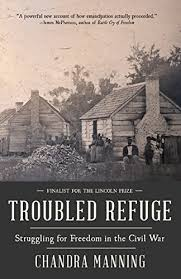
Chandra Manning
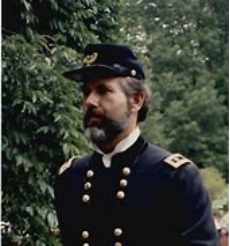
Andy Waskie
Minutes
Our January 19 meeting was our 437th. The
meeting had 80 registrants and 55 participants.
Our speaker was Dr. Anthony “Andy” Waskie.
Professor Waskie, impersonating Union General
George Gordon Meade, returned to give the second
part of his account of Meade’s life and career.
Professor Waskie began with the aftermath of the
battle of Gettysburg. Meade has been strongly
criticized for failing to adequately pursue
Robert E. Lee’s Army of Northern Virginia after
the battle. But, Waskie argued, this is unfair.
Both armies had suffered severely. Meade’s
Army of the Potomac was exhausted--the army had
marched all the way from the Rappahannock River
in Virginia to Gettysburg and then fought a
three-day battle. Meade had to be sure Lee was
indeed retreating, and he was unable to begin
the pursuit until July 5th because of a huge
rainstorm on the 4th. Meade also had to worry
about Lee becoming entrenched and thus making an
assault very difficult. When the army attacked
on the 14th, Lee had gotten across the Potomac
except for a vanguard. At this point, both
armies needed to rest.
In October and November 1863, Meade conducted
the Bristoe Campaign against Lee, and in
November and December, the Mine Run Campaign.
In the latter, Meade planned a big assault, but
looked at Lee’s entrenchments and decided it was
hopeless. Meade subsequently withdrew north of
the Rapidan and went into winter quarters.
The rank of lieutenant general was created for
Ulysses S. Grant when he came east in 1864. On
March 10, he met with Meade. Meade said that
Grant could replace him if he wanted. But Grant
said he could stay and that he (Grant) would
just put his headquarters in the field with
Meade. So, Meade was
technically still
commander of the Army of the Potomac, but in
practice Grant was the commander. In spite of
this awkward situation, Professor Waskie said,
Meade and Grant got along well. This was not
the case, however, with Meade and the commander
of Army of the Potomac’s Cavalry Corps, Philip
Sheridan. Meade and Sheridan hated each other.
Sheridan did not want to be under Meade’s
command, and Grant eventually gave him an
independent command.
When the army approached Petersburg, Meade
ordered an attack, but the Confederates brought
up reinforcements and saved Petersburg, leading
to the subsequent siege of the city. Meade
participated in the pursuit of Lee to
Appomattox. He subsequently met with Lee, and
the two spoke amicably.
After the war, according to Professor Waskie,
Meade went to the Canadian border and gave free
rides home on trains to Irish Fenians who wanted
to invade Canada to take it from the British.
He also served as commander of the Department
of the East, the Military Division of the
Atlantic, and the Military Division of the
South. Professor Waskie said that commanding
the last mentioned was the worst part of Meade’s
career. Meade had recurrent problems with
pneumonia because of his war wounds, and he died
on November 6, 1872. He is buried in Laurel
Hill Cemetery in Philadelphia.
Our January 26 meeting was our 438th. The
meeting had 51 registrants and 31 participants.
Our speaker was Dr. Chandra Manning. Professor
Manning, who teaches history at Georgetown
University, discussed her book entitled
Troubled Refuge: Struggling for Freedom in the Civil War.
During the war, more than 500,000 slaves fled to
Union lines. Many refugee camps sprung up in
both the eastern and western theaters. While
those established in the east generally remained
until the end of the war, Professor Manning
noted, this was not true in the west, given that
Union armies in the west were much more mobile.
On May 23, 1861, three slaves fled to Fort
Monroe in Virginia. The fort was commanded by
Major General Benjamin Butler. Butler used
slave owner’s own conception of slaves as
property against them, refusing to return the
slaves to their owners because they were being
used for the Confederate war effort. From that
point on, slaves fled to Union lines in massive
numbers.
Once the men began to be recruited into the
Union army, the camp population skewed heavily
toward women and children. Conditions in the
camps left much to be desired--the food wasn’t
very nourishing, fresh water was a problem, and
clothes were in short supply. The mortality
rate was high, and there was always massive
suffering. But there was also opportunity. In
some camps, freed slaves began to develop their
own social institutions.
Professor Manning stated that fleeing from
slavery meant being filled with fear, and not
knowing if your plans would succeed. Courage
and determination, she said, were not always
enough to overcome obstacles. One woman joined
Sherman’s army in South Carolina and followed it
into North Carolina, only to die on a beach
there. There was also the danger of
re-enslavement.
Professor Manning posed two questions: 1.) How
did emancipation happen? and 2.) How was
re-enslavement prevented? The first steps
toward emancipation were taken by the slaves
themselves. At the same time, the Union army
was willing to take them in and join them in
their fight against slaveholders. Both groups
wanted to defeat the Confederacy and worked
together to achieve that aim. Quartermasters
greatly depended on former slaves’ digging,
nursing, laundering, etc. Former slaves gained
access to U.S. citizenship, and for the first
time the army and government sided with slaves
rather than slaveholders. They had a greater
obligation to former slaves fighting for the
U.S. than to white southerners fighting against
it. Before the war, states decided who was
eligible for citizenship. After the war, the
federal government did.
Even after the war, the danger of re-enslavement
was real. To combat this, Congress passed not
only the 13th amendment, which ended slavery,
but the 14th amendment as well, making former
slaves U.S. citizens. Professor Manning
commented that citizenship is never a one-off
thing. Upholding it continues to be our
responsibility today.
|
Notes from the President
Welcome to 2021!!!
It would be a gross understatement to say the 2020 was a
historical year. Let us hope that the Covid 19 Pandemic, which
has caused massive amounts of illness and death throughout the
world, will eventually subside and life can get back to normal.
The BCWRT will return to in person meetings when it is deemed
medically safe by our health officials and comfortable by you.
In the meantime, we need all members to pay their dues for 2021
and we invite all interested persons to join our group. Your
financial support allows us to continue the host the variety of
Civil War related presentations enjoyed by all of you.
Annual dues
for the Baltimore Civil War Roundtable are $25.00 for
individuals and $35.00 for families. Please make checks payable
to: BCWRT and mail to: Ray
Atkins, 1204 Fordham Ct., Belair, MD 21014. You can find the
membership form in the membership portion of the webpage.
Additionally, we urge all of you the spread the word about the
BCWRT. Most of you know, history can be fun as well as
informative.
We initiate 2021 by offering
two Zoom meetings during
the month of January.
1/19/21-Civil
War historian, educator and reenactor Dr. Anthony (Andy) Waskie
returns to complete his December program
'Meet General Meade, Victor of the Battle of Gettysburg'.;
1/26/21- Harvard
and Georgetown Universities professor Dr. Chandra Manning will
delve into her latest work “Troubled
Refuge: Struggling for Freedom in the Civil War”; 2/23/21- Author,
re-enactor and attorney Bernie Siler returns to the BCWRT to
discuss his Brightwood section of D. C. (Fort Stevens) related
book;
A Tale of Two Centuries;
and 3/23- Gen.
Ty Seidule, Department Chair Emeritus of the United States
Military Academy will discuss his new book;
“Robert E. Lee and Me”.
We are currently scheduled to hold our Annual Banquet featuring
author Kevin Levin at the Columbus Gardens on April 27. Due to
the pandemic, this could change. Stay turned for further
developments.
Our Zoom schedule continues May 25 when award
winning author William Connery returns to present a talk on
career of CSA Secretary of the Navy Stephen R. Mallory. June 22
features Bob Bowser, history teacher and Acting Director of the
Board of the Dr. Samuel A. Mudd House Museum, talking about John
Wilkes Booth associate and one-time Baltimore resident Edman
“Ned” Spangler.
See our calendar page for more on our 2021 schedule.
|
Meeting: December 22, 2020
|
End 2020 and prepare for 2021 by joining the
Baltimore Civil War Roundtable (BCWRT) as we
Dr. Andy Waskie in
a Zoom presentation entitled
“Meet General Meade: Victor of the Battle of
Gettysburg”.
Set your calendars for Tuesday, December 22, at
7:30 p.m.
George Gordon Meade was
a career Army officer who is best known for
leading the Army of the Potomac in defeating the
Confederate Army of Northern Virginia, led by
Robert E, Lee, at the Battle of Gettysburg in
July of 1863.Before the Civil War, he was known
for his service during the Mexican American War
and the Second Seminole War.
Professor Waskie was
born in Bloomsburg, Pennsylvania, and pursued a
Languages/History major at Bloomsburg
University. He studied abroad at Salzburg,
Austria, and Marburg, Germany; and received a
scholarship to study Slavic Languages at Charles
University, Prague. He received an M.A. and
Ph.D. degrees from New York University. He
performed duty with the Army in Germany and Army
Reserves as an Army linguist. He became a
teacher of languages and history at Pennsbury
School District in Bucks County for 30 years,
retiring in 1999 to accept a professorship at
Temple University.
Dr. Waskie was
an Associate Professor of Languages and History
at Temple University. He retired after 20 years
of service in July 2019. He is a co-founder of
the “Civil War & Emancipation Studies” Program
at Temple (CWEST) in 2003.
As a Civil War historian, author and researcher
specializing in Philadelphia, and historian of
the life and career of
Gen. George G. Meade,
he seeks to promote the history of the Civil War
Era and of the city. He is a Civil War
historian, author and researcher specializing in
Philadelphia’s role. He is a specialist on the
life and career of
Gen. George G. Meade whom
he portrays in a “1st person”
style Living-History performance.
Waskie is
a member of the Union League of Philadelphia. He
serves as President of the General Meade Society
of Philadelphia, and as a Board Member of
several history related institutions and
organizations
A charter member of the Civil War History
Consortium of Philadelphia, he is part of the
movement seeking to promote the history of the
city. He is a Board member of Laurel Hill
Cemetery; Vice President of the Grand Army of
the Republic (G.A.R.) Civil War Museum &
Library. He is an officer of Benjamin Franklin
American Legion Post 405 at the Union League and
historian for the Armed Services Council of the
Union League. Waskie served 10 years as a PA
Commonwealth Speaker/Scholar.
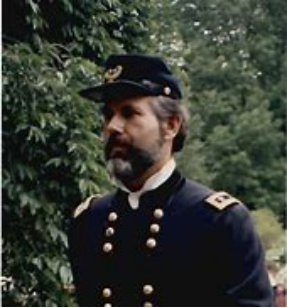 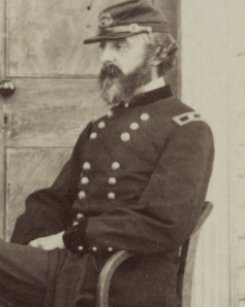
Dr. Andy Waskie
Gen. George G. Meade
Minutes
Our December meeting was our 436th. By the last
count taken for 2020 (on December 1), our
membership was 29. As of December 1, we had
$1,968.42 in the bank with a pending deposit of
$50, making our future money $2,018.42. There
were no outstanding bills, and our only future
bills were for speakers and our annual banquet.
Our speaker was Dr. Anthony “Andy” Waskie.
Professor Waskie specializes in the life of
Union General George Gordon Meade and performed
an impersonation of him, telling the story of
Meade’s life and career.
George Meade was born in Cádiz,
Spain on December 31, 1815. His father was a
U.S. naval agent and gave the Spanish king a
great deal of money to fight Napoleon’s
invasion. According to Dr. Waskie, the Meade
family later claimed to own Florida, which Spain
agreed to give to the U.S. by treaty in 1819.
George was raised in Philadelphia. At 15, he
entered West Point. After graduation, his first
assignment was Tampa Bay--at the time, the army
was trying to “pacify” the Seminole Indians in
Florida. Meade was given the task of relocating
400 Seminoles to Arkansas. After his one year
of mandatory service was up, Meade resigned from
the army, though he later rejoined it. He
served as an engineer with the United States
Coastal Survey, becoming very proficient with
maps, surveying, and topography.
In the war with Mexico, Meade served as a staff
engineer to General Zachary Taylor, and played
an important role at the battle of Monterey,
receiving a brevet promotion from second to
first lieutenant. After the war, Meade helped
design and construct lighthouses in New Jersey
and Florida. In 1856, he was appointed
superintendent of a project to survey all the
hydrology of the Great Lakes.
When the Civil War broke out, Meade was a
captain in the Corps of Engineers. Although he
had never led troops, he volunteered and became
commander of the 2nd Brigade of the Pennsylvania
Reserves Division. He first saw action during
the Seven Days campaign. At Glendale on June
30, 1862, he was severely wounded. This would
afflict him with pneumonia, which he eventually
died of in 1872. The Pennsylvania Reserves
performed well in the campaign. At Second Bull
Run, the reserves were among those who made a
stand at Henry House Hill which stopped the
Confederates from getting in the rear of the
Army of the Potomac.
Meade was praised for his performance at
Turner’s Gap at the Battle of South Mountain.
At Antietam, he commanded I Corps after Joseph
Hooker was wounded. At Fredericksburg, his
division achieved a breakthrough at the southern
end of the field. However, they had to withdraw
for lack of support. At Chancellorsville, Meade
commanded V Corps. When Hooker ordered a
retreat, Meade opposed it. On June 28,
1863--three days before Gettysburg--Meade
replaced Hooker as commander of the Army of the
Potomac. Robert E. Lee had invaded
Pennsylvania. Meade gave John F. Reynolds part
of his army. On July 1, Reynolds made contact
with Lee’s Army of Northern Virginia and the
battle of Gettysburg began. Meade missed the
first day, but subsequently brought the
remainder of the army to Gettysburg and
organized it so that it occupied a “fishhook”
formation by the morning of July 2. On that
day, Meade and his army repulsed all of Lee’s
attacks. In the evening, a council of war was
held and concluded that Lee would attack the
army’s center on July 3, which is what happened.
It was decided that Professor Waskie would
return to the roundtable to finish his
first-person account of Meade’s story.
|
Notes from the President
On behalf of our Board, I wish you all a Happy and Blessed
Holiday Season! Whether you celebrate Christmas, Chanukah
(Hanukkah), Ashura, Bodhi Day, Kwanza or any other festival of
note, May Peace Be with You All! Please stay Covid safe!!!!
Speaking of the Board, following the December 1, 2020 BCWRT
business Meeting, the elected officers are: Martin
French - Vice President, Lee Hodges- Secretary, Rap Atkins-
Treasurer, Robert Toelle, Robert Testudine and Bill Rixham * –
Board Members. Thank you for again allowing me to serve as
President. (* The Asst. Secretary/Treasurer position had no
candidates and Bill Rixham has decided not to serve).
Moving ahead to 2021 and beyond, we will return to in person
meetings when it is deemed medically safe by our health
officials and comfortable by you. In the meantime, we need all
members to pay their dues for 2021 and we invite all interested
person to join our group. Annual dues
for the Baltimore Civil War Roundtable are 425.00 for
individuals and $35.00 for families. Please make check payable
to: BCWRT and mail to: Ray
Atkins, 1204 Fordham Ct., Belair, MD 21014. You can find the
membership form in the membership portion of the webpage.
Additionally, we urge all of you the spread the word about the
BCWRT. Most of you know, history can be fun as well as
informative.
Most of our schedule for 2021 has been set (please see the
upcoming events link). Over the next few months, our Zooms
feature: 12/22- Civil
War historian, educator and reenactor Dr. Anthony (Andy) Waskie
will present his “1st person”
program,
'Meet General Meade, Victor of the Battle of Gettysburg'.;
1/26/21- Harvard
and Georgetown Universities professor Dr. Chandra Manning will
delve into her latest work “Troubled
Refuge: Struggling for Freedom in the Civil War”; 2/23/21- Author,
re-enactor and attorney Bernie Siler returns to the BCWRT to
discuss his Brightwood section of D. C. (Fort Stevens) related
book;
A Tale of Two Centuries;
and 3/23- Gen.
Ty Seidule, Department Chair Emeritus of the United States
Military Academy will discuss his new book;
“Robert E. Lee and Me”.
|
Meeting: November 24, 2020
|
The Baltimore Civil War Roundtable continues
with its virtual presentations by presenting
Civil War historian and author,
Gene Schmiel returns
to the BCWRT to discusses his new four book
series:
“Civil War Personalities, 50 at a Time".
The individual titles are:
"Civil War Trailblazers and Troublemakers",
"Civil War Rogues, Rascals, and Rapscallions",
"Civil War Political Generals in Blue and Grey" and
"Civil War Women: Underestimated and
Indispensable". This
program will be conducted via the Zoom platform.
(This is a change in the previously announced
presentation.)
Gene holds
a Ph. D. degree from The Ohio State University
and was an assistant professor of History at St.
Francis University (PA) before becoming a
Foreign Service Officer with the Department of
State. He served in five countries,
including as Charge’
d’ Affaires in
U.S. embassies in Iceland and Djibouti and
Consul General in Mombasa, Kenya. He
resides in Gainesville, Virginia with his wife
Bonnie Kathryn. Together they wrote a
book, “Welcome
Home: Who Are You; Tales of a Foreign Service
Family,” which,
along with his book about Cox and the other
books noted above, is featured on his amazon.com
author’s page: https://www.amazon.com/Gene-Schmiel and
https://civilwarhistory-geneschmiel.com/
Please register in advance for this meeting:
https://us02web.zoom.us/meeting/register/tZUqde-orToqGdXjyHgL5BMsliF45ulwUrDB
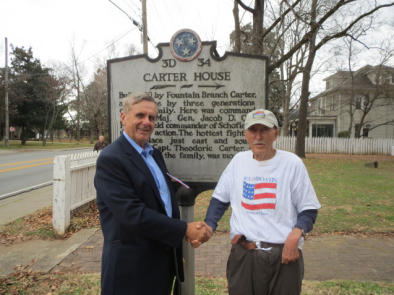
Gene Schmiel with the late Ed Bearrs
ALL OF gene’s BOOKS ARE AVAILABLE VIA
AMAZON.COM. (SEE below). IF YOU WANT TO GET A
SIGNED COPY, E-MAIL ME AT GENEOFVA@GMAIL.COM
 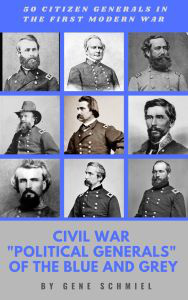 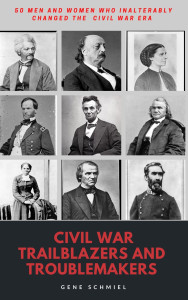
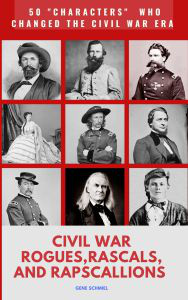
|
Notes from the President November 2020
Well, we are well into November and the seems to be no
let-up in the Covid 19 pandemic. Therefore, we will be meeting,
via Zoom, for the foreseeable future. If you are like me, you
probably hadn’t heard of Zoom two years ago. Now look!
A few of you have expressed having problems getting into
Zoom. Here is a link for a simple tutorial.
https://support.zoom.us/hc/en-us/articles/201362193-Joining-a-Meeting#:~:text=1%20Tap%20Join%20.%202%20Enter%20the%20meeting,ID.%203%20Tap%20the%20Join%20button.%20See%20More
Our Zoom presentations are open to the general public.
Consequently, they are not good formats for conducting BCWRT
business. Members will soon receive an email for a special call,
online meeting to discuss business and have our elections.
There was a lot of positive response to October’s meeting
which featured Jon Goldman giving a live tour of the B&O
Railroad Museum. Again, our thanks go to Mr. Goldman and all
who participated.
Minutes
Our November meeting was our 435th. Our speaker was Gene
Schmiel. Mr. Schmiel discussed a new four-book series entitled
Civil War Personalities: 50 at a Time.
The individual books are entitled:
Civil War Trailblazers and Troublemakers,
Civil War Rogues, Rascals, and Rapscallions,
Civil War “Political Generals” of the Blue and Grey,
Civil War Women: Underestimated and Indispensable,
and
Civil War Unsung Heroes and Other Key Actors “Behind the
Scenes.”
Each of these books, Mr. Schmiel explained, is designed to
introduce (or reintroduce) the reader to key people in the war.
Each person is given an essay of two or three pages (along with
pictures, maps, etc.) that explains the significance of the
person in Civil War history and will, according to Mr. Schmiel,
hopefully leaves readers with bits of knowledge they did not
have before. There are also suggestions for further reading.
Foremost among the “Civil War Trailblazers and Troublemakers”
was Abraham Lincoln. Mr. Schmiel described Lincoln as the
Union’s “best political general.” Lincoln knew that the war had
a political dimension, and that the Emancipation Proclamation
and recruitment of African Americans as soldiers were key steps.
He also understood that the objective was to destroy armies,
not simply capture places. Mr. Schmiel considered Benjamin
Butler the
worst
political general. Butler came up with the idea that fugitive
slaves were “contrabands of war,” and sent troops to Baltimore
to put down secession efforts there. He became notorious for
his rule over New Orleans--although he cleaned the city up and
made it healthier, he was hated by the population for his
infamous General Order No.28, saying that any woman who showed
contempt for Union soldiers would be treated as a prostitute.
Among the “Rogues, Rascals and Rapscallions” was William C.
Quantrill. Quantrill is a very polarizing figure-he’s
considered a “hero” by some and a “barbarian” by others. He was
a symbol of divided Missouri. After the battle of Wilson’s
Creek, he formed “Quantrill’s Raiders.” He will forever be
known for the massacre in Lawrence, Kansas on August 21, 1863 in
which about 150 men and boys were killed.
In discussing “Civil War Political Generals of the Blue and
Grey,” Mr. Schmiel said that one of the best was Union Major
General Jacob Cox, who served in the western theater. Cox, who
was elected governor of Ohio after the war, was a classic
“Citizen General.” On the other hand, Mr. Schmiel considered
Joshua Lawrence Chamberlain to be an “overrated self-promoter.”
His defense of Little Round Top, although useful, was not
critical to Union victory at Gettysburg. Moreover, Mr. Schmiel
said Chamberlain did NOT command Union troops at the
surrendering of Confederate arms at Appomattox.
Mr. Schmiel’s “Civil War Women” included Varina Davis, wife of
Confederate President Jefferson Davis, who after the war moved
to New York and became friends with U.S. Grant’s widow, Julia.
Mary Bickerdyke, a hospital administrator for the Union, built
300 field hospitals for the troops. Mary Walker was the first
recognized female surgeon in the Union army. She received the
Medal of Honor and a disability pension.
Mr. Schmiel argued that the greatest of his “Unsung Heroes” was
Montgomery Meigs, Union Quartermaster General. Meigs used his
unmatched skills in logistics, and decided that the grounds of
Robert E. Lee’s Arlington mansion would be a cemetery. Major
General George H. Sharpe created the Army of the Potomac’s
Bureau of Military Information, which included a network of
spies and systematic methods of collecting and analyzing
intelligence. According to the CIA, the methods Sharpe used
were not fundamentally changed until 1947, when the CIA itself
was established.
|
Meeting: October 27, 2020
|
THE BALTIMORE CIVIL WAR ROUNDTABLE IS BACK…..at
least via Zoom. Join us for our second Zoom
presentation on Tuesday, October 27, 2020 at
7:30 p.m. Our guest will be Jonathan Goldman,
Chief Curator of the B&O Railroad Museum in
Baltimore, Maryland. Goldman will show us
various portions of the Museum’s collection that
are related to the Civil War.
Jonathan joined
the museum in 2019. Jonathan provides leadership
and management of the museum's exhibitions,
collections, archives, restoration, and
education efforts, ensuring both the care of the
museum's unparalleled objects as well as
producing engaging programming and experiences
for visitors. Jonathan has worked with museums
to transform collections care programs,
collections policies and practices, as well as
develop meaningful and engaging public
educational experiences. He received a B.A. in
Asian Studies from Occidental College, a B.F.A.
in Art Direction as well as Design for Social
Impact from the Art Center College of Design,
and an M.A. in Exhibition Design from George
Washington University. While living in
Washington, DC, Jonathan also taught at the
graduate level for the Exhibition Design program
at George Washington University.
Registration is required to participate in this
meeting. You can register at
https://us02web.zoom.us/meeting/register/tZYqf-mtqDgjE9RJzBTl8IV-OQBD8arG6TAd
After registering, you will receive a
confirmation email containing information about
joining the meeting. Once registration has
occurred, you will receive an email detailing
the steps to join us via Zoom.
Notes from the President October 2020
Covid 19! None of us had heard of this in 2019. Now, it
has dominated our lives for most of 2020. We
hope that all of you have been keeping safe and
healthy during these trying times.
It is hard to believe that our last in person meeting was
in February. Those who were there may recall
that I delivered an impromptu talk on Octavius
Catto, the Philadelphia educator, baseball
player, civil rights advocate and Pennsylvania
National Guard officer who led the group that
became the 3rd USCT and helped raise 10 other Civil War regiments.
(Please see the minutes). Our scheduled speaker,
Dr. Karsonya (Kaye) Wise Whitehead had a
last-minute medical emergency. Two weeks later,
the Parkville Senior Center closed, due to the
virus, and has been closed since… shutting done
our meeting place.
Since that time, we’ve moved meeting speakers to 2021,
including the banquet. After a few conference
calls, Zoom calls and a survey via Survey
Monkey, the officers of the BCWRT decided to
purchase an organizational Zoom account (Zoom
Pro).
Many of you participated in an excellent presentation by
author Scott Mingus, Sr. as he discussed his
book;
Targeted Tracks; The Cumberland Valley
Railroad in the Civil War, 1861-1865. An extra thanks goes to Scott Mingus for forgoing his
fee.
We like to thank all of you who responded to the BCWRT
Participation Survey. The results are as
follows:
1. If the government reopens the Parkville Senior Center in
one of its 'phases' of the Covid 19 crisis,
would you be willing to attend meetings? Yes
57.14%. No 42.86%
2. If the BCWRT produces online meetings in which you could
participate from home (Zoom, Skype,etc.) during
the crisis, would you take part? Yes 85.71%. No
14.29%
3. Do you have the knowledge and the equipment (PC, smart
phone, etc.) to participate in an online
meeting? Yes 100%
4. Since our speakers will still have to be compensated, will
you still pay your yearly dues even though the
meetings aren't face -to-face? Yes 100%
5. When the Covid 19 pandemic
began earlier this year, the BCWRT already had
scheduled speakers into early 2021. Monthly, we have been
optimistically rescheduling those speakers to
next year (2021). Are there any topics you would
like to see in a presentation? Gettysburg,
Antietam, USCT and Robert Gould Shaw/ More Civil
War Battles
6. Do you have any suggestions for
the BCWRT?
Use the Zoom platform to restart and continue
meetings until the pandemic subsides./
More wartime activities.
7. Do you have any ideas for
increasing BCWRT membership?
Using Zoom and advertising the meetings more broadly
should increase attendance and hopefully,
membership / Appeal to middle aged people
Using the Zoom platform and the cooperation of several
scheduled speakers, we have been able to make
adjustments for the next few months.
|
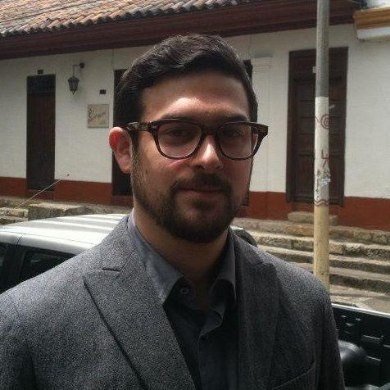
Our October meeting was our 434th. Our speaker was Jonathan
Goldman, Chief Curator of the Baltimore and Ohio Railroad
Museum. Mr. Goldman gave a virtual tour of the museum entitled
From Slavery to Civil Rights.
The B&O was founded in 1827, and was the first public freight
railroad company in the U.S. The museum is located on the site
of the B&O’s foundation and construction. It is a 40 acre
campus on Pratt Street, next to the Inner Harbor.
Mr. Goldman showed tools that were used to build and
maintain the railroad. Prior to the war, all the southern
railroads were built using slaves. The railroads, according to
Mr. Goldman, were the largest employers of slave labor--even
more than agriculture. The B&O’s first president, Philip
Thomas, was a Quaker, and he banned the use of slave labor.
Mostly, Irish built the B&O. Abolitionists would assist
escaped slaves to board B&O trains from Baltimore.
During the Civil War, each side attacked the other’s
railroad tracks. Confederates twisted a great deal of B&O track
in 1861-2. As a result, the railroad had to shut down for a
time. The U.S. military hired slaves to repair the damage. Mr.
Goldman said that the military was the first government agency
to hire African Americans. He showed a passenger car, an iron
box car (one of only two surviving iron box cars from the war)
and the
William Mason,
the locomotive that helped take Abraham Lincoln to Washington in
1861 when he was threatened with assassination.
Mr. Goldman also showed and discussed a segregated Chesapeake
and Ohio car from the Jim Crow era. A sign in the white section
read “White Only,” and the white section was nicer than the
section for African Americans. Usually, there were separate
cars for each race. An African American would have to change
seats if they arrived in a state that was segregated. Harvey
Johnson successfully sued the B&O, ending segregated travel in
Maryland.
The Pullman Company became the largest employer of
African Americans in the U.S., and allowed them to travel and
see the nation in a new way. At the same time, those in service
positions were used to sell the railroad.
Mr. Goldman concluded by discussing current changes in
what the museum emphasizes. The emphasis on technology is
decreasing, while more attention is being given to the impact
the B&O had on society and culture as a whole.
|
Meeting:
September 22, 2020
Our September meeting was our
433rd, and was our first using Zoom. Our speaker was Scott
Mingus. Mr. Mingus discussed his book entitled Targeted Tracks:
The Cumberland Valley Railroad in the Civil War, 1861-1865.
During the Gettysburg
campaign, there were a number of Confederate attacks on or near
the Cumberland Valley Railroad (CVRR). On June 16, 1863, the
14th Virginia Cavalry burned Scotland Bridge. On June 29, Major
General Robert E. Rodes destroyed CVRR bridges and tracks in
Carlisle, Pennsylvania. On July 1st, Major General George E.
Pickett’s men burned warehouses and offices in Chambersburg. A
decision was made not to rebuild afterwards.
July 30, 1864 was the day of
General John McCausland’s raid on Chambersburg. McCausland
commanded 2,800 cavalrymen and demanded $100,000 in gold or
$500,000 in cash. Otherwise, he said, the town would be burned.
The citizens did not believe him, and decided not to pay.
According to Mingus, half the town was burned but little damage
was done to the CVRR. The CVRR transported refugees to
Harrisburg.
On April 22, 1865, a special
CVRR train took mourners to view Abraham Lincoln’s body in
Harrisburg. The train began bringing troops home--and made a
lot of money by doing so. Because of this, the railroad was
almost completely rebuilt.
No
Meetings: March - August, 2020
Meeting: February 25, 2020
|
Join
the Baltimore Civil War Roundtable (BCWRT) as we
present WEAA-FM radio host
Dr. Karsonya (Dr. Kaye) Wise Whitehead,
Associate Professor of Communication and African
and African American Studies in the Department
of Communication at Loyola University Maryland.
Dr. Kaye will
talk about her book;
Notes from a Colored Girl: The Civil War Pocket
Diaries of Emilie Frances Davis.
The examines
the life and experiences of Emilie Frances
Davis, a freeborn twenty-one-year-old mulatto
woman, through a close reading of three pocket
diaries she kept from 1863 to 1865.
Whitehead explores
Davis’ worldviews and politics, her perceptions
of both public and private events, her personal
relationships, and her place in Philadelphia’s
free black community in the nineteenth century.
Karsonya (Kaye) Wise Whitehead, Ph.D., is
a three-time New York Emmy-nominated documentary
filmmaker, as well as the Founding Executive
Director of The Emilie Frances Davis Center for
Education, Research, and Culture, and a K-12
Master Teacher in African American History.
Dr. Whitehead has
received various fellowships and grants,
including a 2012 Gilder Lehrman Fellowship in
American History and a 2010 NEH Summer Stipend;
she is also the 2006 recipient of the Gilder
Lehrman Preserve America Maryland History
Teacher of the Year Award. At Loyola, she
teaches communication and African and African
American Studies; her scholarship examines the
ways race, class, and gender coalesce in
American classrooms as well as in political and
social environments.
Dr. Whitehead has
served as a historical consultant for a series
of documentaries on Philadelphia, and has worked
with over 1,000 K-12 teachers to train them in
how to become culturally responsive teachers in
diverse environments.
In 2019, Essence Magazine selected her as a
member of their “Woke !00” -
women who exemplify the true meaning of being
change agents and power players. Working in
areas from social justice to politics to
entertainment, they inspire not only us here but
also others around the world. The magazine
described her as follows;
“Dubbed
the #blackmommy activist, the associate
professor at Loyola University Maryland has been
a much-needed voice in addressing issues such as
gender and institutional racism in Baltimore.”
Notes from the President February 2020
Remember, it’s time to renew your membership for
2020!
Dr. Karsonya (Dr. Kaye) Wise Whitehead,
Associate Professor of Communication and African
and African American Studies in the Department
of Communication at Loyola University Maryland,
will talk about her book; Notes
from a Colored Girl: The Civil War Pocket
Diaries of Emilie Frances Davis.
This is our February 28 meeting.
Author, re-enactor and attorney Bernie Siler
returns to the BCWRT to discuss his Brightwood
section of D. C. (Fort Stevens) related book; A
Tale of Two Centuries.
This will occur during our meeting on March 24.
In conjunction with the Chesapeake Civil War
Roundtable, we will present our Annual Banquet
at 6:00 p.m. on April 28 at the Columbus Gardens
(see flyer). Our keynote speaker will be author,
historian educator and Civil War blogger Kevin
M. Levin. He will discuss his recently published
book Searching for Black Confederates; The Civil
War’s Most Persistent Myth.
On May 26 Award winning author William Connery
returns to present a talk on career of CSA
Secretary of the Navy Stephen R. Mallory.
On June 23, Author and lecturer Timothy Lloyd
Tilghman will address the topic “Maryland
during the Civil War”.
Annette T. Khawane, Adjunct
Professor of Mortuary Sciences at Catonsville
Community College, returns to focus on “Funeral
Practices during the Civil War” at
our meeting on July 28:
August 25 will see author Ron Kirkland focus on
the immediate results of war on those who fight
as he presents; Too
Much for Human Endurance. The George Spangler
Farm Hospital at the Battle of Gettysburg.
Reminder: Membership has it’s privileges…and
joys. Urge your friends to join the Baltimore
Civil War Roundtable. Also, renew you
membership if you haven’t already paid your
annual dues.
|

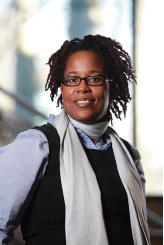
Our most recent meeting, in February, was
our 432nd. Our attendance was 10, and we had three visitors
from the Old Baldy Civil War Roundtable. As of February 25, we
had $1,565.17 in the bank with no outstanding bills. Our only
future bills were for speakers and our annual banquet. At our
most recent membership count, we had 28 members.
Our
scheduled speaker was Dr. Karsonya (Dr. Kaye) Wise Whitehead.
Dr. Kaye was to discuss her book entitled
Notes from a Colored Girl: The Civil War Pocket Diaries of
Emilie Frances Davis.
However, she telephoned and said she could not come due to
illness. Our president, Robert Ford, gave a mini-presentation
instead.
Robert
began by discussing Octavius Valentine Catto, a prominent
African American leader in nineteenth century Philadelphia.
Catto was a remarkable man--a scholar, educator, civil rights
activist, and sportsman. Born free in Charleston, South
Carolina in 1839, he was the son of a Presbyterian minister.
The family moved to Philadelphia, where Octavius became a
brilliant student, and later a teacher and principal. During
the Civil War, he was commissioned a major in the Pennsylvania
National Guard, and was responsible for organizing and
recruiting what became the 3rd USCT (United States Colored
Troops) Infantry Regiment, in addition to helping raise ten
other USCT regiments. He played a major role in the passage of
a bill forbidding racial segregation in Pennsylvania transit
systems. He was also a cricket and baseball player, and did
much to make Philadelphia a center of Negro League baseball. On
October 10, 1871--an election day--Catto was assassinated.
There was a great deal of racial tension in the city at this
time, with some whites--particularly Irish--using violence and
intimidation to discourage African Americans from voting. Catto
was assassinated while reporting for National Guard duty, having
been called up to protect African American voters from violence.
Robert
went on to suggest that the BCWRT take a field trip to
Philadelphia. The roundtable could go to Camp William Penn, the
largest training camp for African American soldiers during the
Civil War, as well as to other places, including the Union
League. Robert also discussed his background and personal
experiences. Growing up, he was a voracious reader--during the
sixth grade, he read William Shirer’s
The Rise and Fall of the Third Reich. His
uncle was Nat King Cole’s bass player. While a student in
junior high school, Robert met Dr. Martin Luther King Jr.
|
Meeting: January 28, 2020
|
Civil
War Maryland was a place full of political,
social and military intrigue. A slave holding
border state above the District of Columbia,
Maryland had a city with the nation’s largest
population of free African Americans living
among folk who conspired to assassinate the
newly elected Lincoln prior to his inauguration.
It served as an Underground Railroad pipeline
while also serving as a ‘post office’ for secret
correspondence being sent to Virginia and the
CSA Army. This made Maryland a hotbed for spies.
The January 28, 2020 meeting of the Baltimore
Civil War Roundtable will focus on Maryland’s
intrigue as author, re-enactor and Nation Park
Service Ranger
Matt Borders addresses
The Spy Game in Maryland.
Borders Matthew is
a 2004 graduate of Michigan State University
with a BA in US History. While at MSU he was
first an intern and then a seasonal ranger for
the National Park Service at Antietam National
Battlefield. Following his undergrad he
immediately went to Eastern Michigan University
for his MS in Historic Preservation, with a
focus in Battlefield Interpretation, which
he earned in 2006.
Upon graduation he taught for a year at
Kalamazoo Valley Community College before
accepting a position with the National Park
Service’s American Battlefield Protection
Program. Moving to Maryland in 2007 with his
wife Kira, he worked as the historian for the
ABPP for the next six years, personally
surveying over 100 different American Civil War
battlefields in the deep south and western
United States. Over this period he also became
involved with the Frederick County Civil War
Round Table. He continues to work with Antietam
National Battlefield as a volunteer and
Certified Battlefield Guide, as well as a
Certified Guide for Harpers Ferry National
Historical Site.
Currently
Matt is
a Park Ranger at Monocacy National Battlefield
in Frederick, Maryland. He continues to
volunteer regularly as a living history
volunteer portraying Federal infantry and, along
with fellow guide, Joe Stahl, recently published
his first book,
Faces of Union Soldiers at Antietam which
was published in July of 2019.
Notes from the President January 2020
Happy New Year and Emancipation Day. The arrival
of 2020 and the start of a new decade means that
it has been 155 years since the end of Civil War
combat in 1865. December 31/January 1 also
marked the 157th anniversary
of Watch Night/Emancipation Day (Day of Jubilee)
services in many African American churches. On
the night of December 31, 1862, crowds gathered
in places from Boston’s Faneuil Hall to Union
occupied South Carolina to pray and celebrate
the Emancipation Proclamation, which became
effective at the start of January 1, 1863. To
this day, many churches hold Watch Night
services and/or Emancipation Day (daytime)
services in honor of “the end of slavery and the
beginning of freedom”. This past New Year’s Day,
I was honored to join members of the 54th Mass.,
Co. B, 23rd USCT and FREED
(Female
RE-Enactors of Distinction) as part of the
Emancipation Day Celebration Washington D.C. at
Historic Israel Metropolitan CME Church.
(Formerly Israel Bethel Church). During the war,
this church, pastored by 1st USCT
organizer Rev. Henry McNeal Turner, held one of
the inaugural Watch Night and Emancipation Day
services.
After a period of planning and scrambling, we
finally have the speaker for our Annual Banquet
in April, which will again we held at Columbus
Gardens on April 28, 2020. Working with the
Chesapeake Civil War Roundtable, we will host
aurthor/historian Kevin M, Levin as our speaker.
(see below and the flyer).We
had planned to have NPS Historian Emeritus Ed
Bearss as our speaker; however, he suffered a
fall to begin the year and, as a result, is
pulling out of many engagements. I have spoken
with Ed and wished him well.
Remember, it’s time to renew your membership for
2020!
We’ll start 2020 on January 28 when Author,
historian, preservationist and NPS battlefield
Guide Matt Borders will take a look at the
“Spy Game in Maryland” during
the Civil War.
Dr.
Karsonya (Dr. Kaye) Wise Whitehead, Associate
Professor of Communication and African and
African American Studies in the Department of
Communication at Loyola University Maryland,
will talk about her book;
Notes from a Colored Girl: The Civil War Pocket
Diaries of Emilie Frances Davis.
This is our
February 28 meeting.
Author, re-enactor and attorney Bernie Siler
returns to the BCWRT to discuss his Brightwood
section of D. C. (Fort Stevens) related book;
A Tale of Two Centuries.
This will occur during our meeting on March 24.
In conjunction with the Chesapeake Civil War
Roundtable, we will present our Annual Banquet
at 6:00 p.m. on April 28 at the Columbus Gardens
(see flyer). Our keynote speaker will be author,
historian educator and Civil War blogger Kevin
M. Levin. He will discuss his recently published
book Searching for Black Confederates; The Civil
War’s Most Persistent Myth.
On May 26 Award winning author William Connery
returns to present a talk on career of CSA
Secretary of the Navy Stephen R. Mallory.
On June 23, Author and lecturer Timothy Lloyd
Tilghman will address the topic
“Maryland during the Civil War”.
Annette T. Khawane, Adjunct
Professor of Mortuary Sciences at Catonsville
Community College, returns to focus on
“Funeral Practices during the Civil War” at
our meeting on
July 28:
August 25 will see author Ron Kirkland focus on
the immediate results of war on those who fight
as he presents;
Too Much for Human Endurance. The George
Spangler Farm Hospital at the Battle of
Gettysburg.
Reminder: Membership has it’s privileges…and
joys. Urge your friends to join the Baltimore
Civil War Roundtable. Also, renew
you membership if you haven’t already paid your
annual dues.
|


Minutes:
Click to enlarge each picture below.

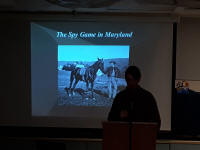

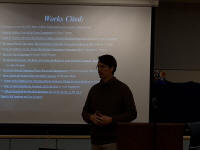
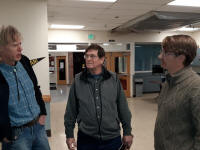
Our January meeting was our 431st. Our attendance was 15,
and we had five visitors. Our membership was 11, but this
figure was largely because of many regular members not
having paid their dues yet. As of January 28, we had
$1,550.17 in the bank, and there was a pending deposit of
$50. There were no outstanding bills, and our only future
bills were for speakers and our Annual Banquet. Our
treasurer, Ray Atkins, wanted to know whether we owed the
Parkville Recreation Council any money.
Our speaker
was Matthew Borders, a park ranger at Monocacy National
Battlefield and the co-author (together with Joe Stahl) of
Faces of Union Soldiers at Antietam. Mr. Borders’ topic was
“The Spy Game in Maryland.”
Mr. Borders began by
noting that when the Civil War began, there were no official
intelligence services. During the war, intelligence came
from both government and private entities. The Confederates
used the U.S. postal system for espionage operations--spies
would mail information to Baltimore, and Confederate
couriers would take the information from there to Richmond.
Notable Confederates involved in intelligence gathering
included J.E.B. Stuart, Turner Ashby, and Rose O’Neal
Greenhow. On the Union side, there was Allan Pinkerton,
founder of the Pinkerton National Detective Agency,
Lafayette Baker, a spy of Winfield Scott’s who eventually
became a favorite of Secretary of War Stanton, and John C.
Babcock, a skilled cartographer and mapmaker.
Mr.
Borders discussed the Maryland campaign of 1862. Lee used
Stuart as a source of intelligence about enemy movements.
The Army of the Potomac received part of its information
from civilians that had been in Confederate-held territory.
The civilians were then asked to return to those areas. Mr.
Borders said that McClellan actually moved much faster than
Lee wanted--Lee thought he would have a few weeks to do what
he wanted in Maryland. He also argued that Special Order 191
was not the “golden goose” it has often been portrayed as
being. By the time McClellan received it, it was old.
Moreover, Lee’s dividing of his army played into McClellan’s
fears that he was outnumbered. He appears to have finally
concluded that Lee had 120,000 men, considerably more than
was actually the case.
Mr. Borders noted that when
Joseph Hooker took over command of the Army of the Potomac,
he had the Bureau of Military Information created. This was
the first formal U.S. intelligence agency. He discussed
Henry Thomas Harrison, the Confederate agent hired by James
Longstreet, and his role in the Gettysburg campaign. He
noted that in 1864, the first evidence of Early’s raid into
Maryland was provided by the head of the B&O Railroad.
Mr. Borders pointed out that our knowledge of the “spy
game” is very incomplete. Much of it will never be
documented because many of the participants were private
citizens.
|
|
|


































































